Top 5 – Human Built Wonders
Civilization and society in the past. Witness all about the human building brain here.
In the past, humans were able to build impressive structures like pyramids and fortresses, churches and much more. Human Built Wonders are created because of a combination of factors including:
- Advancements in technology and tools: They had better tools and techniques to cut and shape materials such as stone.
- Skilled labor force: Many ancient civilizations had a strong tradition of stonemasonry and engineering. This allowed them to build complex structures with a high level of precision.
- Understanding of mathematics and geometry: A good understanding of mathematics and geometry allowed builders to create structures that were structurally sound.
These factors, along with a strong cultural and historical context, enabled ancient civilizations to create many of the impressive structures. This article aims to quickly give you an idea about the Top 5 – Human Built Wonders in the ancient past that are still standing today.
#1 Piramids of Giza, Egypt
The Giza Pyramids are ancient Egyptian pyramids located in Giza, on the outskirts of Cairo and is on top of the human build wonders list. They are considered some of the most impressive architectural feats in human history. And this is actually true, you will not believe your eyes once you’re there. The largest and most famous of the pyramids is the Great Pyramid, also known as the Pyramid of Khufu, and was built during the reign of Pharaoh Khufu (2589-2566 BC). The other two main pyramids at Giza were built by Pharaohs Khafre (2558-2532 BC) and Menkaure (2532-2503 BC). These pyramids served as tombs for the Pharaohs and their consorts, and their structures continue to astound modern engineers and researchers with their size and precision. Despite being over 4,500 years old, the pyramids at Giza still stand today as a testament to the architectural and engineering prowess of the ancient Egyptians. Their heights are as follows:
- Great Pyramid of Khufu: 146.7 meters (481 feet)
- Pyramid of Khafre: 136.4 meters (447 feet)
- Pyramid of Menkaure: 65.5 meters (215 feet)
Slaves, or not?
The exact number of slaves used to build the pyramids is unknown and a subject of much. Some suggest that the labor force for the Great Pyramid of Khufu consisted of around 100,000 workers. Others believe the number was closer to 20,000-30,000.
It is widely believed that the workers who built the pyramids were not slaves. Instead paid laborers and skilled workers who were conscripted to work on the project for a limited period of time. This was a common practice in ancient Egypt. Large public works projects such as the construction of temples and pyramids were normally carried out using corvée conscripted from the local population.
However, there is also evidence to suggest that some workers may have been slaves or prisoners of war who were forced to work. Further research and discovery has to clarify this aspect of ancient Egyptian history.
#2 Abu Simbel, Egypt
This place, as actually the entire Egypt, is a magnificent piece of art, history and culture. The second Human Built Wonder are the temples of Abu Simbel, located in the middle of the desert in the far south of the country, is one of the most stunning ancient temples that can still be found. Once you center the area and you let your eye fall on the first glimpse of the temple behind a small hill, you don’t know what you’re seeing. The four statues, along with the temple of Hathor and Nefertari on the right side, are simple enormous. No picture can describe Egypt. You just have to see it for yourself in order to believe what’s happening. I propose you visit the country as soon as possible!
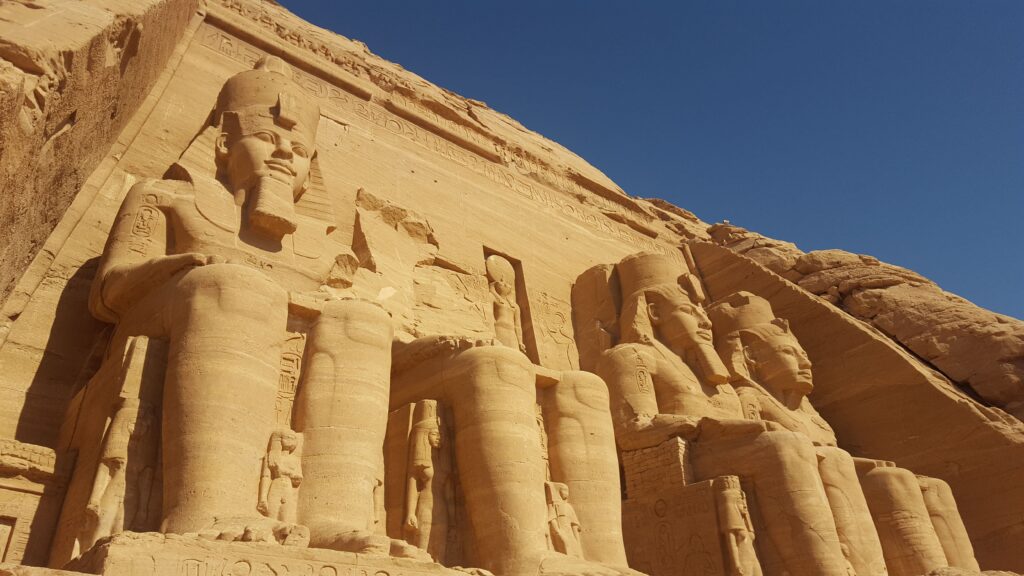
You can access the area by the 2 different ways. You either take a flight to the small airport, or you take a long bus drive of 3 hours from Aswan. Once you are in the area, I recommend you do the following:
Getting in the main temple is definitely what you will do first. The entrance is magnificent with walking out even funnier to experience what the old pharaohs did. Make sure you bring your best photographers!
Try to do your homework in our to learn as much as possible from the ancient history and geographical position. Did you know that you temple was once fully under water by the Nile? Well I did not! Egypt has a fascinating history and you will enjoy your time even more when you learn yourself just a bit on forehand.
Visit the neighboring, just a bit smaller, temple of Hathor. As said, you will not know what you experience and I can recommend everybody to visit this piece of Human Build Wonder.
#3 Alhambra, Granada, Spain
The third one in the list of Human Built Wonders is The Alhambra. A palace and fortress complex located in Granada, Andalusia, Spain. It was built by the Moors in the 13th and 14th centuries and is considered one of the finest examples of Islamic architecture in the world. It is known for its historical significance, and its beautiful location, perched on a hill overlooking the city of Granada. The Alhambra is made up of several parts, including the Palace of Charles V, the Nasrid Palaces, the Generalife Gardens, and the Alcazaba fortress. The Nasrid Palaces, with their ornate decoration and beautiful courtyards, are particularly famous. The Alhambra is a UNESCO World Heritage Site and attracts millions of visitors each year. I propose you visit
Book the best hostel in Granada here!
The hostel that I can recommend to you the most in this lovely city is El Granado Hostel. The dorms are perfect, it is clean, laptop option, they help you with booking for the Alhambra and there is a nice chill vibe. You can either relax or meet new people. All for an affordable price. I propose this one!
#3 Puente Nuevo, Ronda, Spain
Puente Nuevo (New Bridge) is THE famous stone bridge in Ronda, Spain, that spans the Tajo Gorge and connects the two parts of the city. It was built between 1751 and 1793 and is considered one of the most impressive examples of civil engineering from the late 18th century. At a height of nearly 100 meters, the bridge offers stunning views of the surrounding landscape. Puente Nuevo is a major tourist attraction in Ronda and is one of the most iconic landmarks in the Andalusian region of Spain, and therefore, one of the Human Built Wonders.
Read more about:
#5 Sagrada Familia, Barcelona, Spain
And once again, we end up in Spain. Believe me, this country is just amazing. The last one for the Human Built Wonders list is the Sagrada Familia, a large Roman Catholic basilica in Barcelona, Spain. It is an unfinished work of Catalan architect Antoni Gaudi, who worked on the church for over 40 years until his death in 1926. The church is renowned for its unique, modernist architecture and its highly decorative facades, which feature sculptures and intricate details inspired by nature. The Sagrada Familia is one of Barcelona’s most popular tourist attractions and is considered a masterpiece of Catalan Modernism. It has been designated a UNESCO World Heritage Site. It is so famous for more then one reason:
Why so famous?
- Architectural design: The church is considered one of Antoni Gaudi’s greatest works and is known for its unconventional and imaginative architectural style, which blends elements of Gothic and Art Nouveau.
- Decorative details: The facades of the Sagrada Familia are covered in intricate sculptures, carvings, and mosaics, many of which depict scenes from the life of Jesus and other religious stories.
- Unfinished nature: Despite over a century having passed since Gaudi’s death, the church remains unfinished, which adds to its mystery and charm. Visitors can see the original plans and models created by Gaudi and learn about his vision for the church. It is supposed to be finished in 2026.


You May Also Like

Bogota, Medellin, or both?
April 5, 2023
Panama City
February 15, 2023
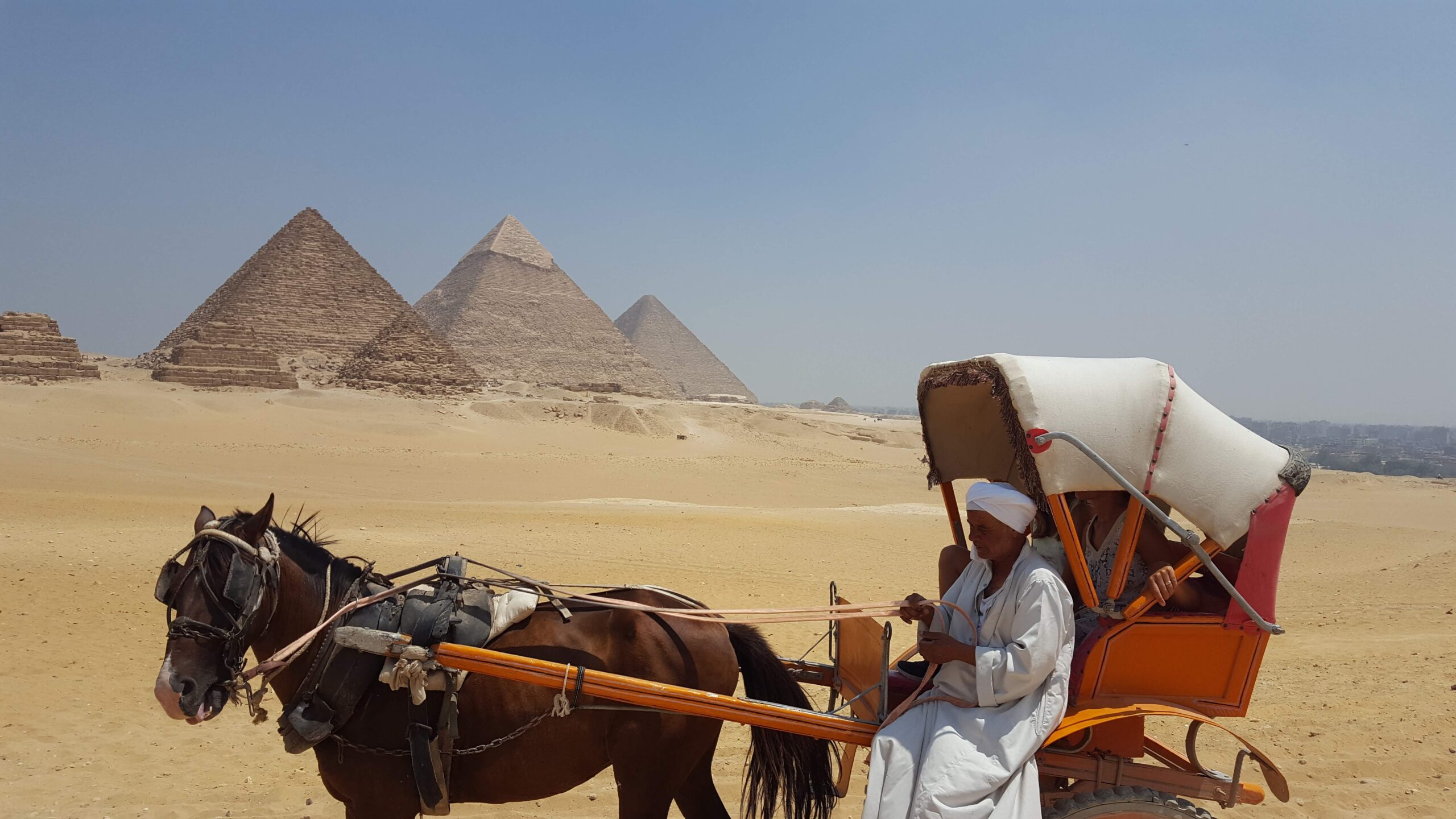

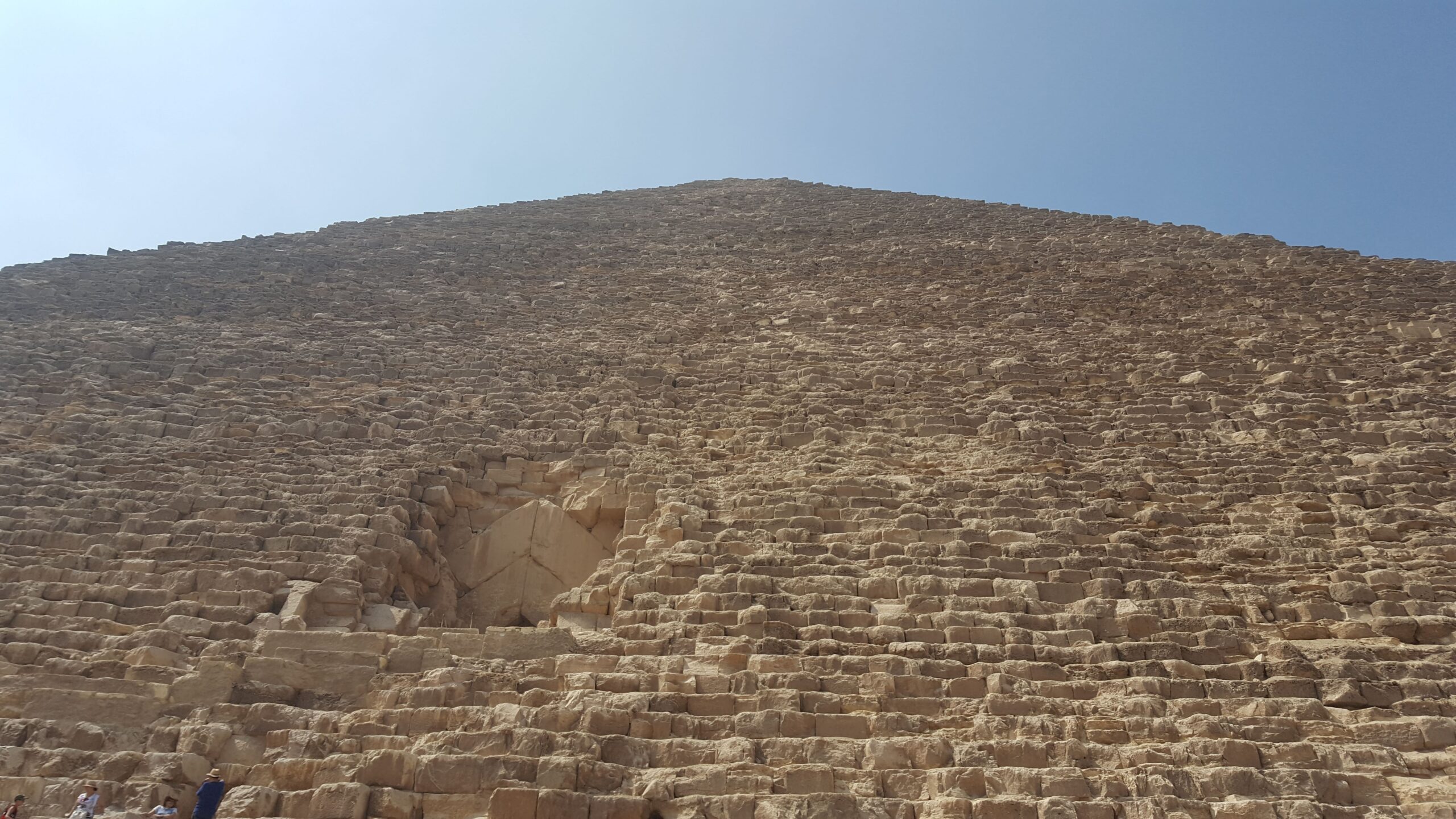
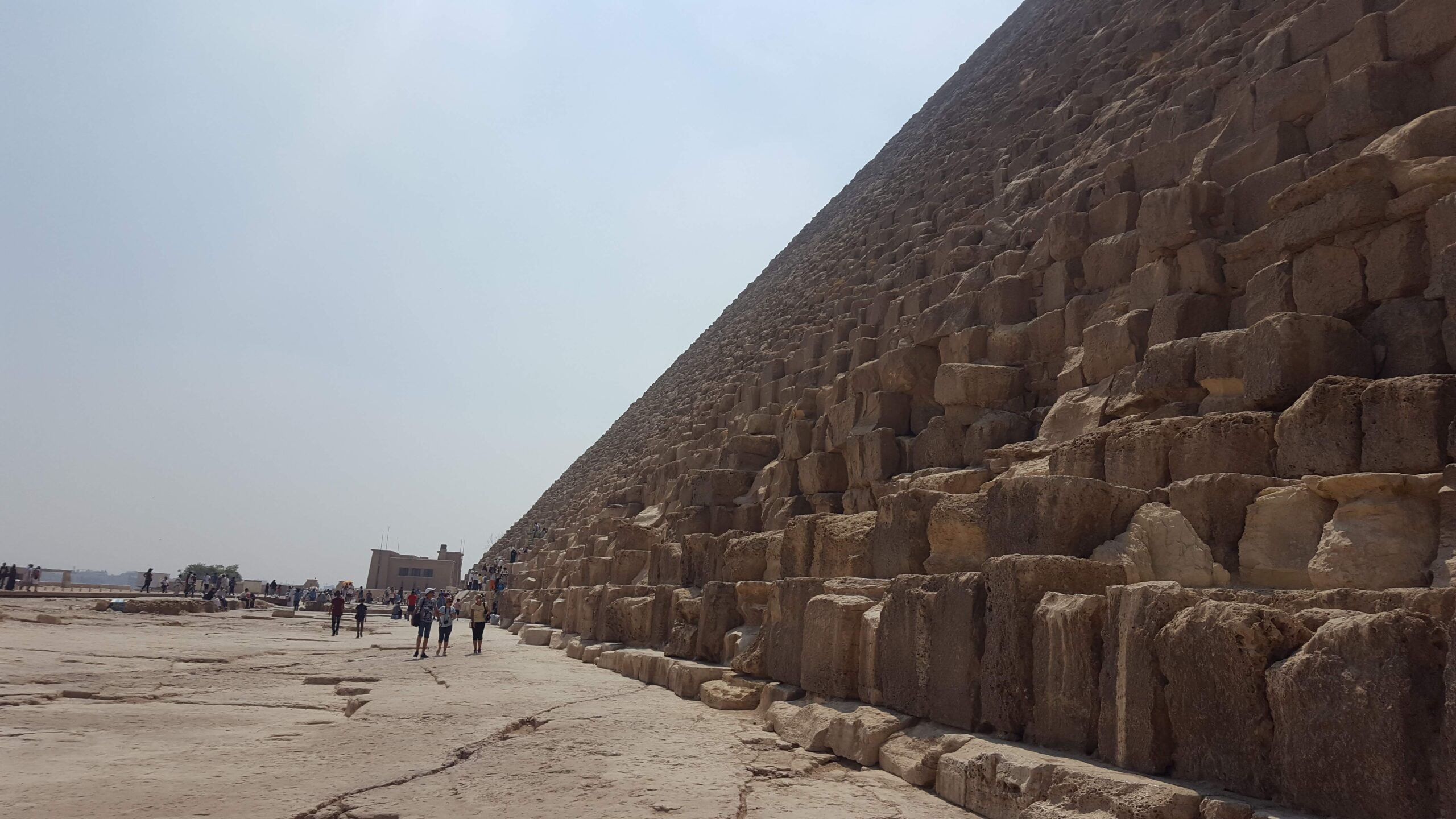
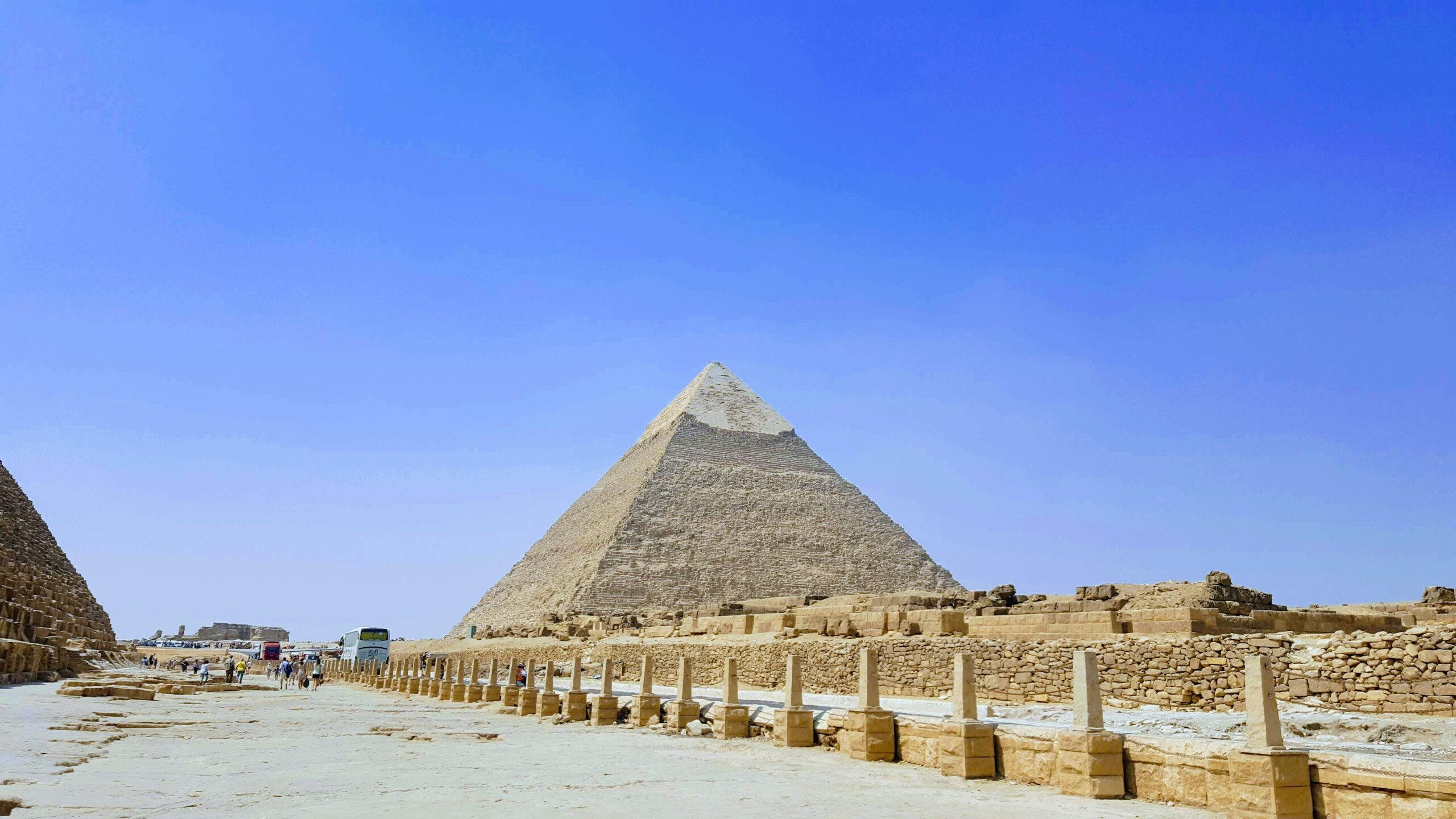
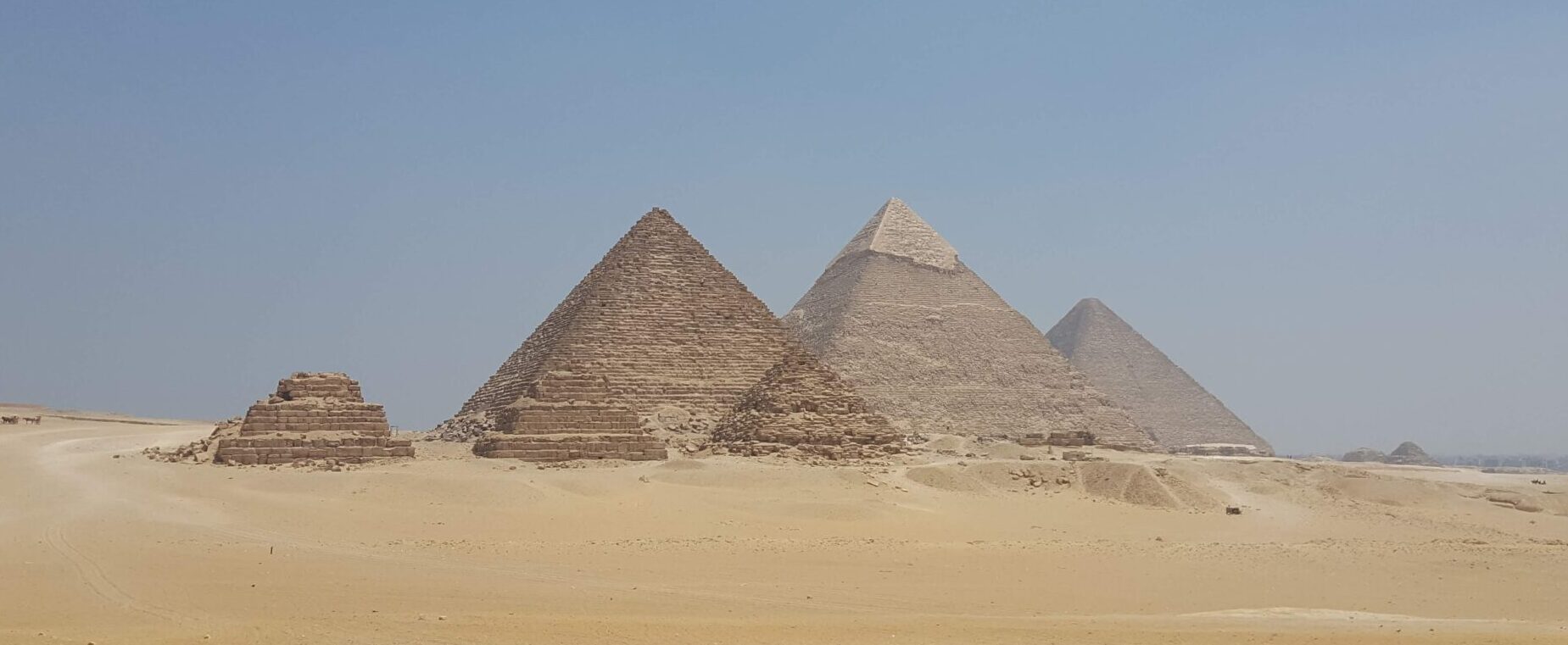

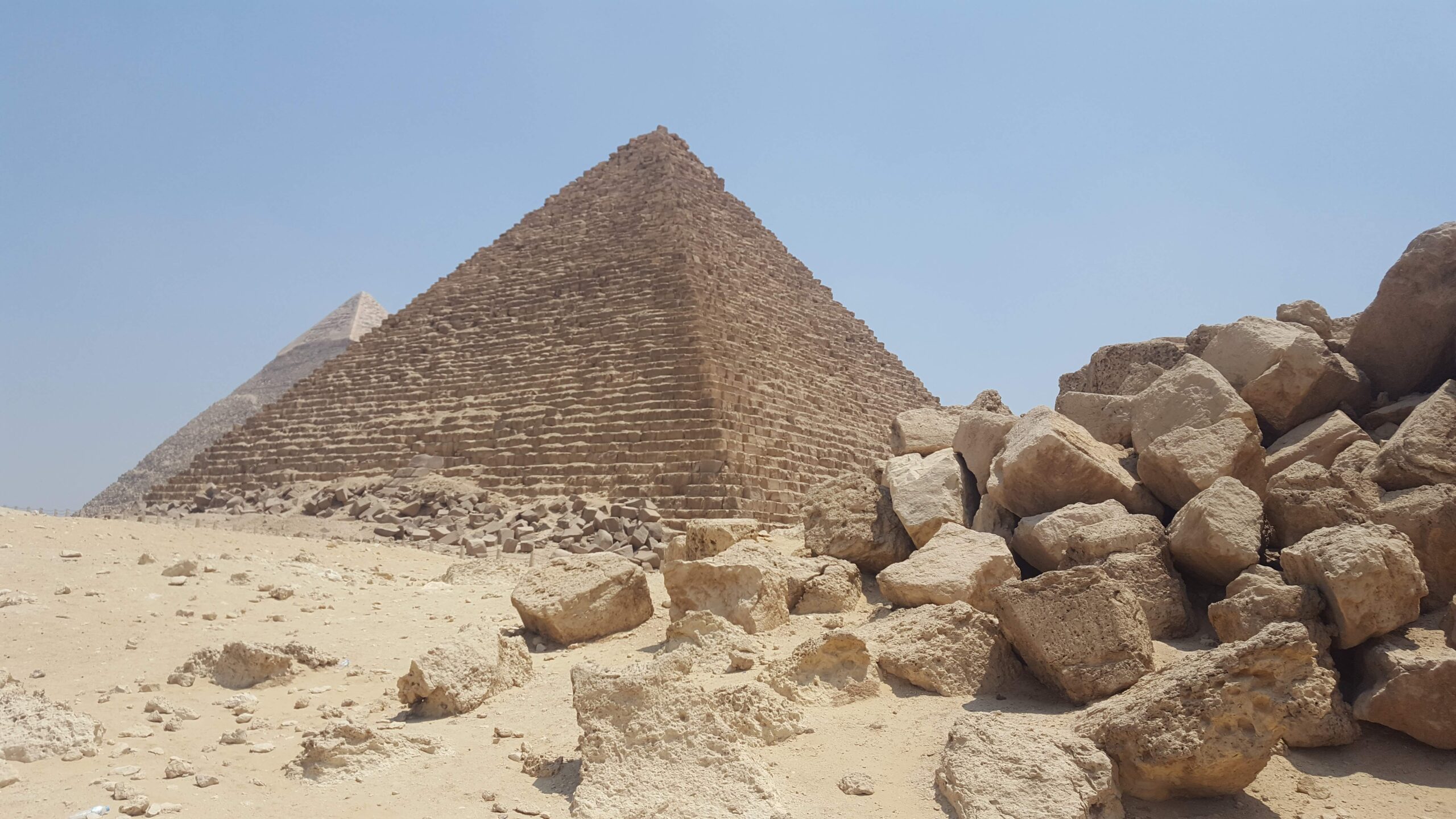


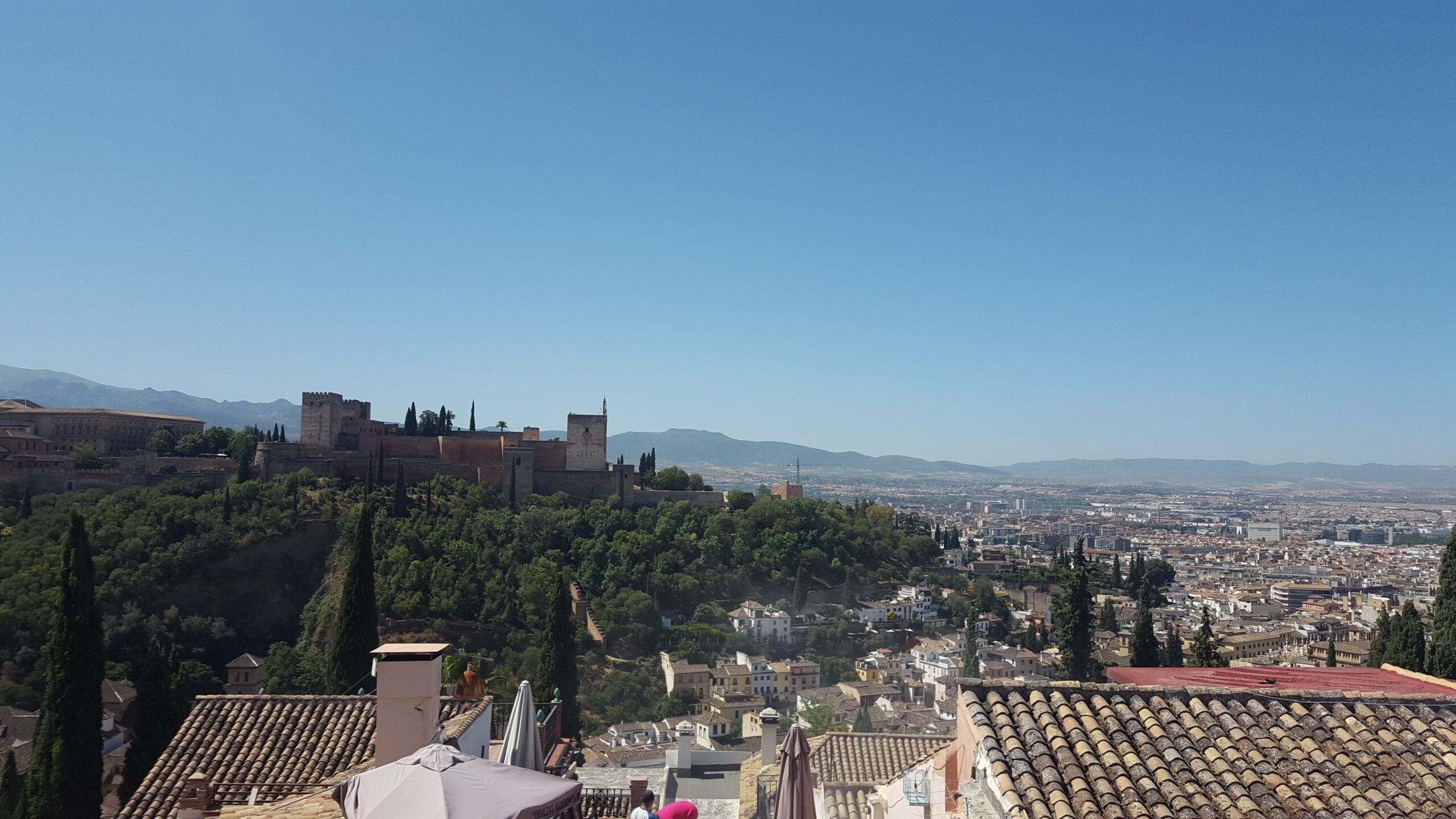
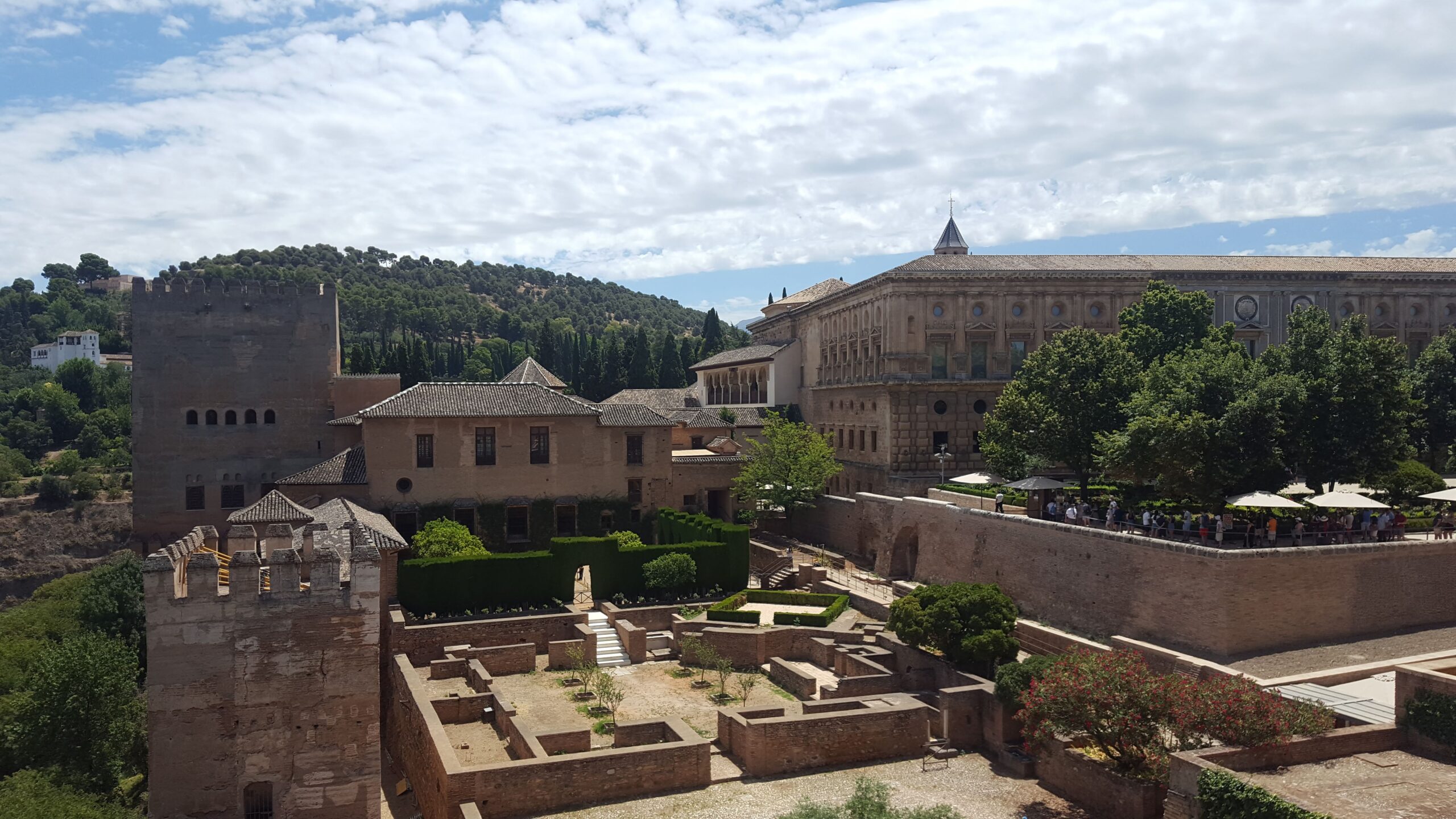
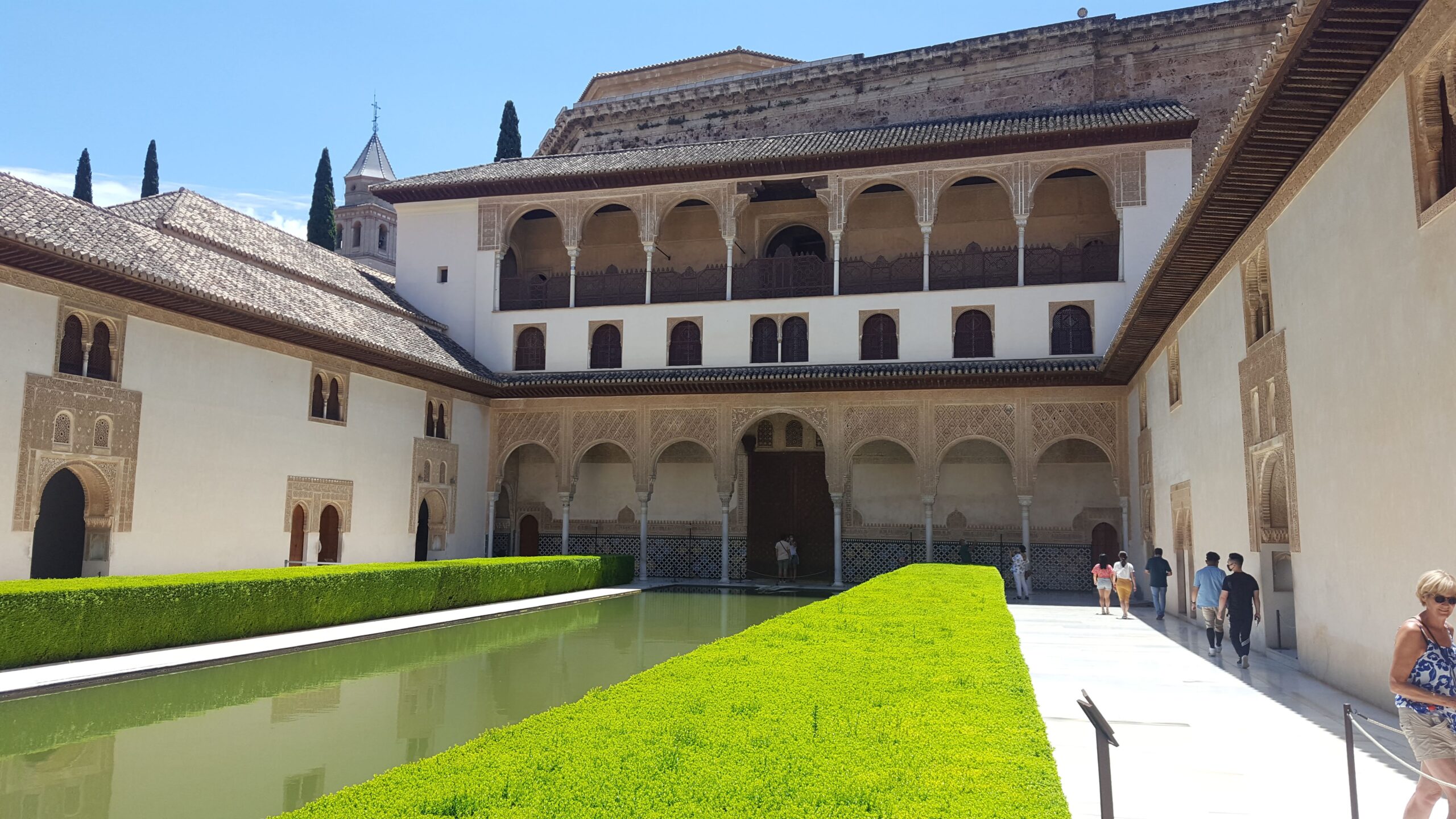
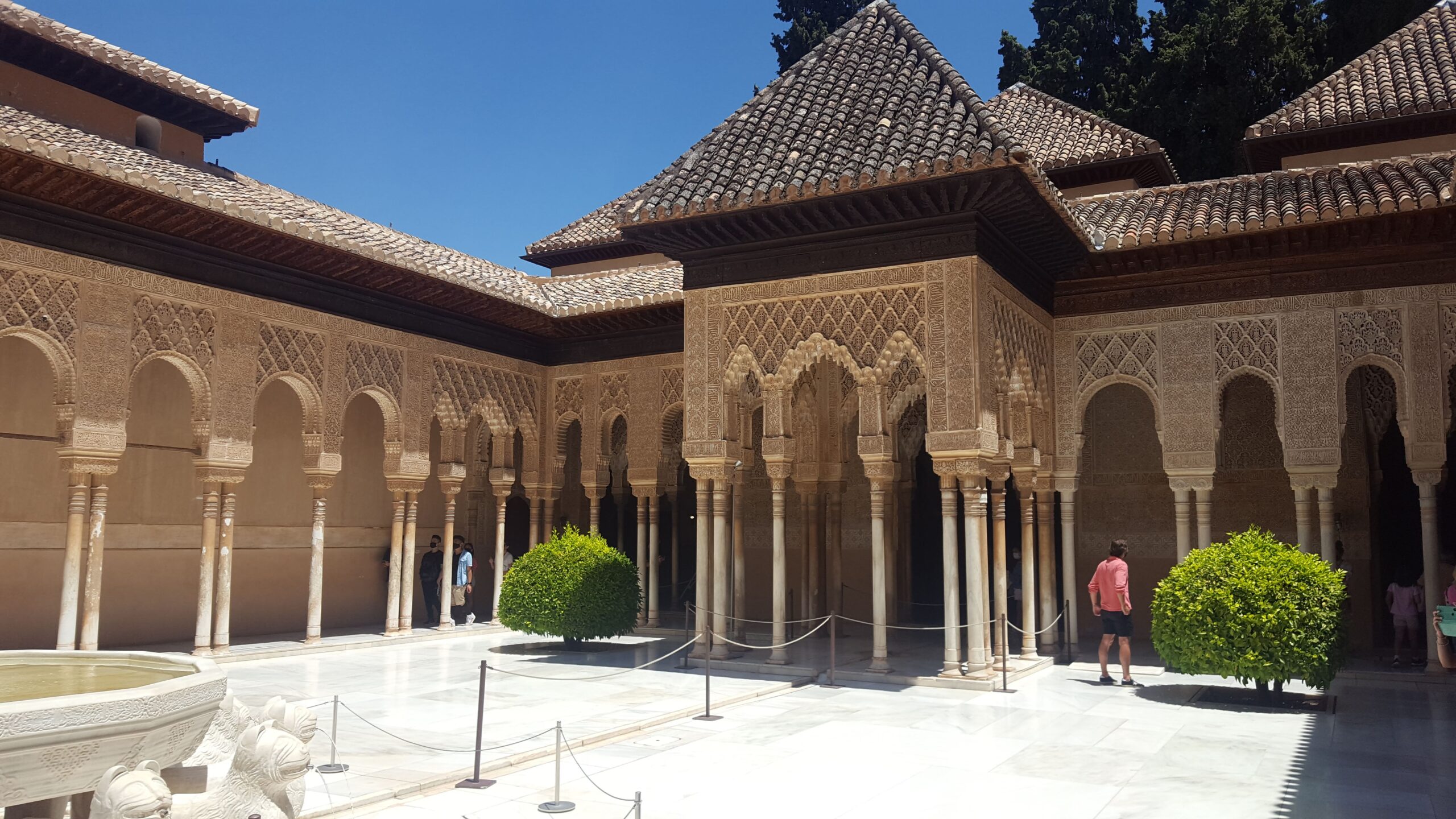

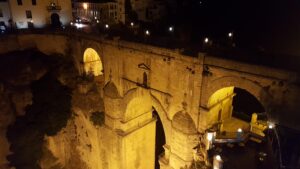
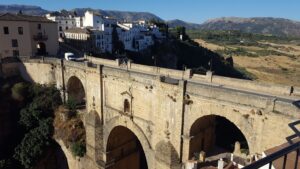
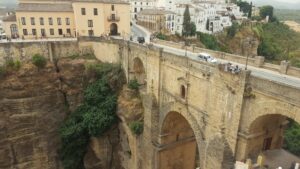
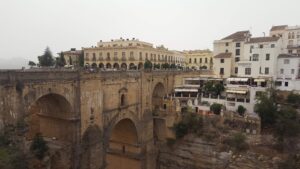
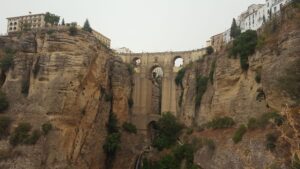

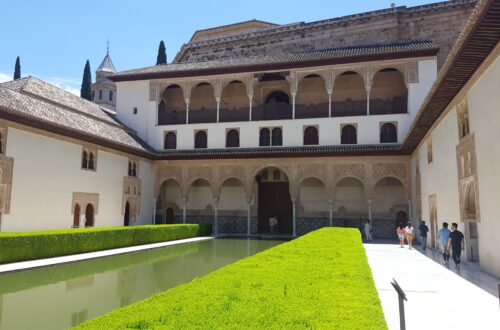

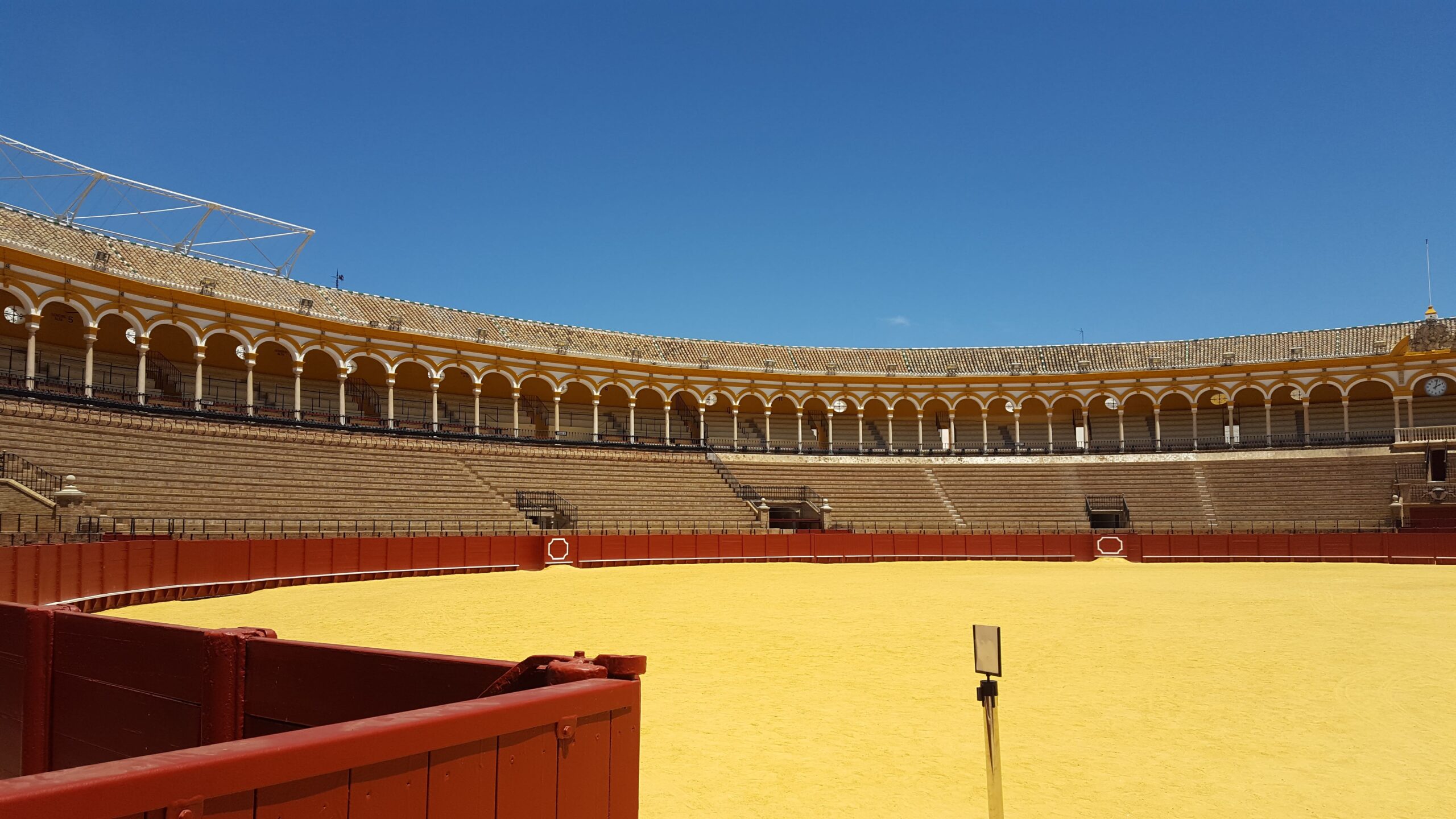

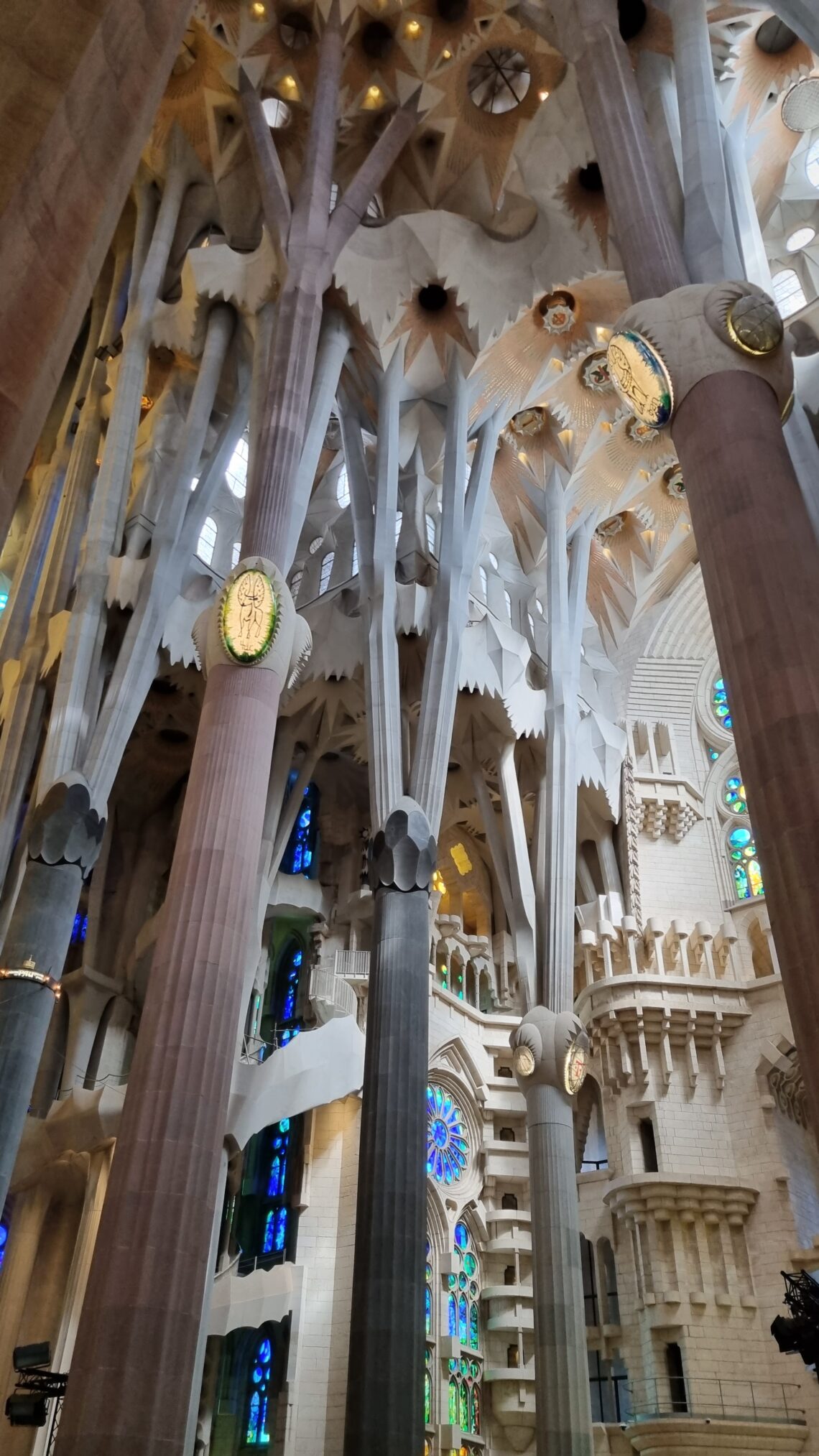

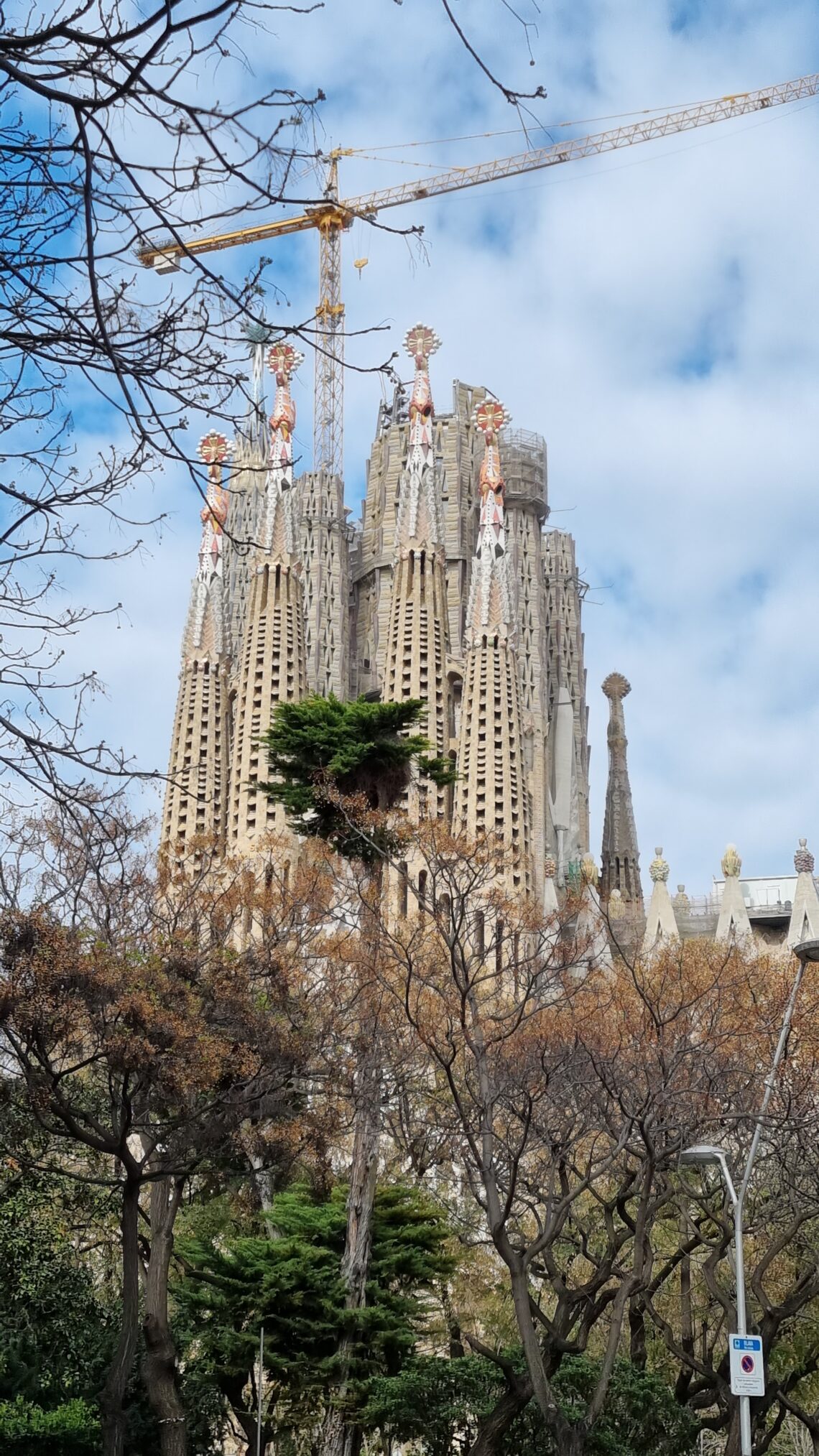
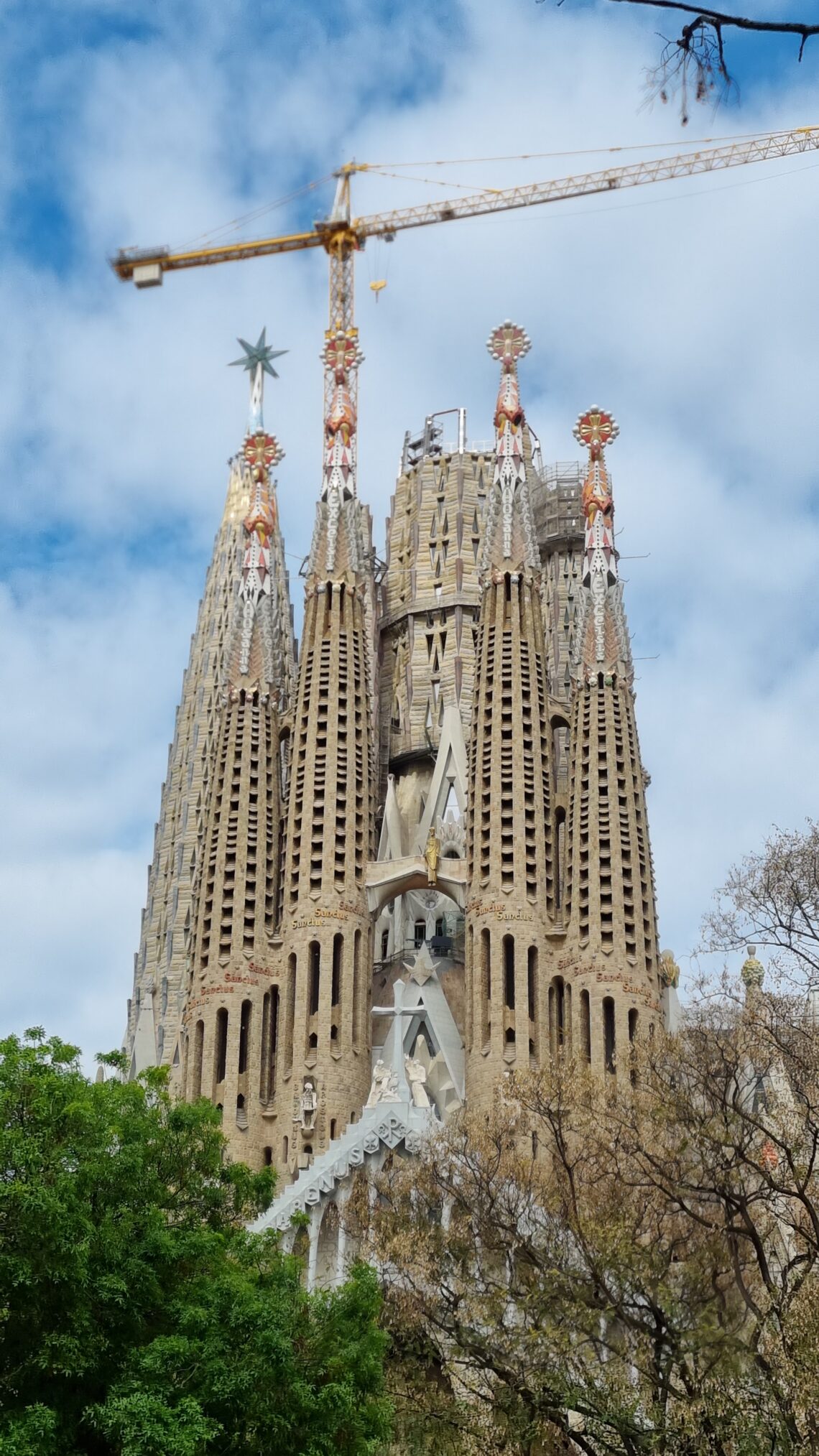
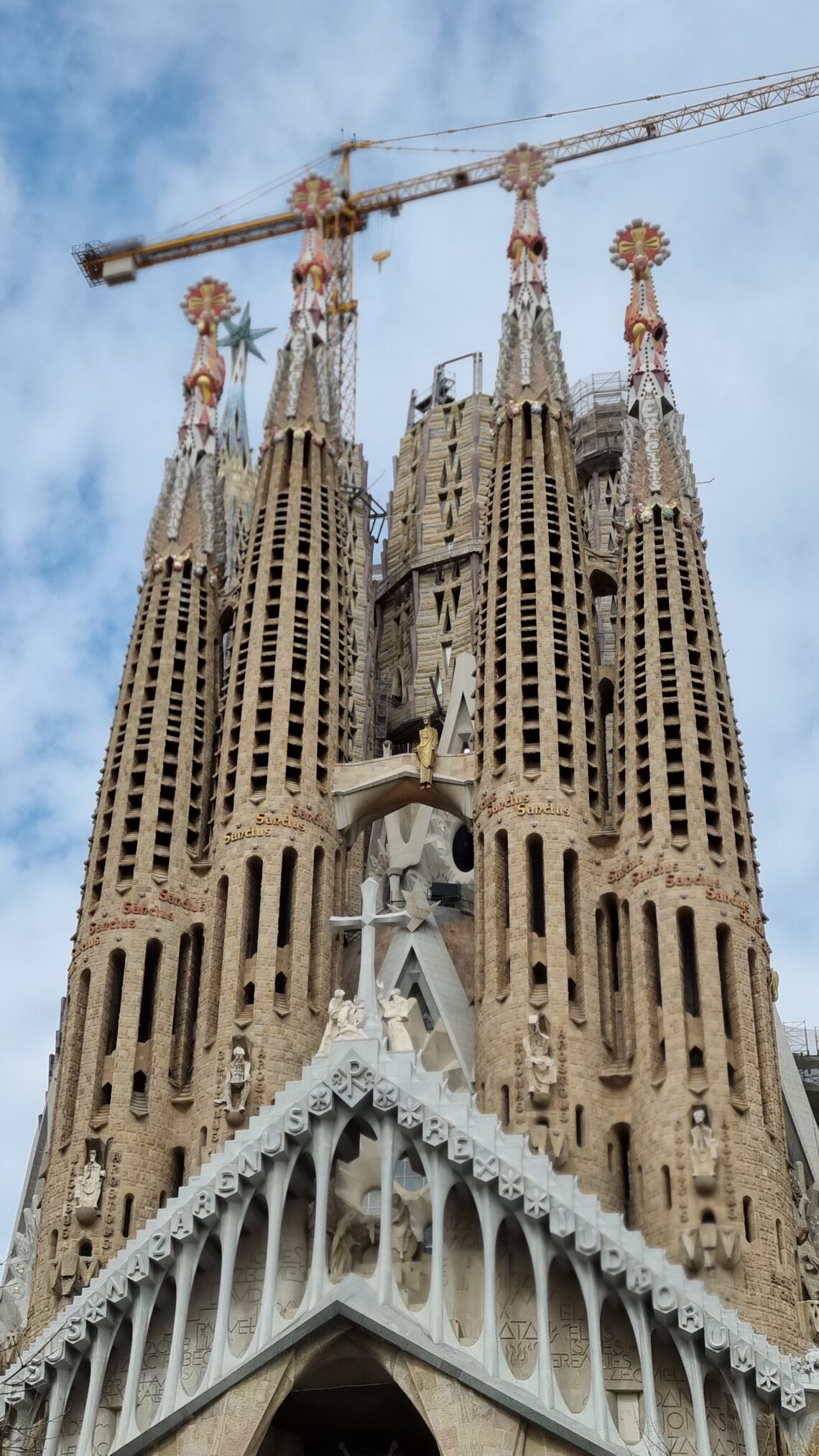

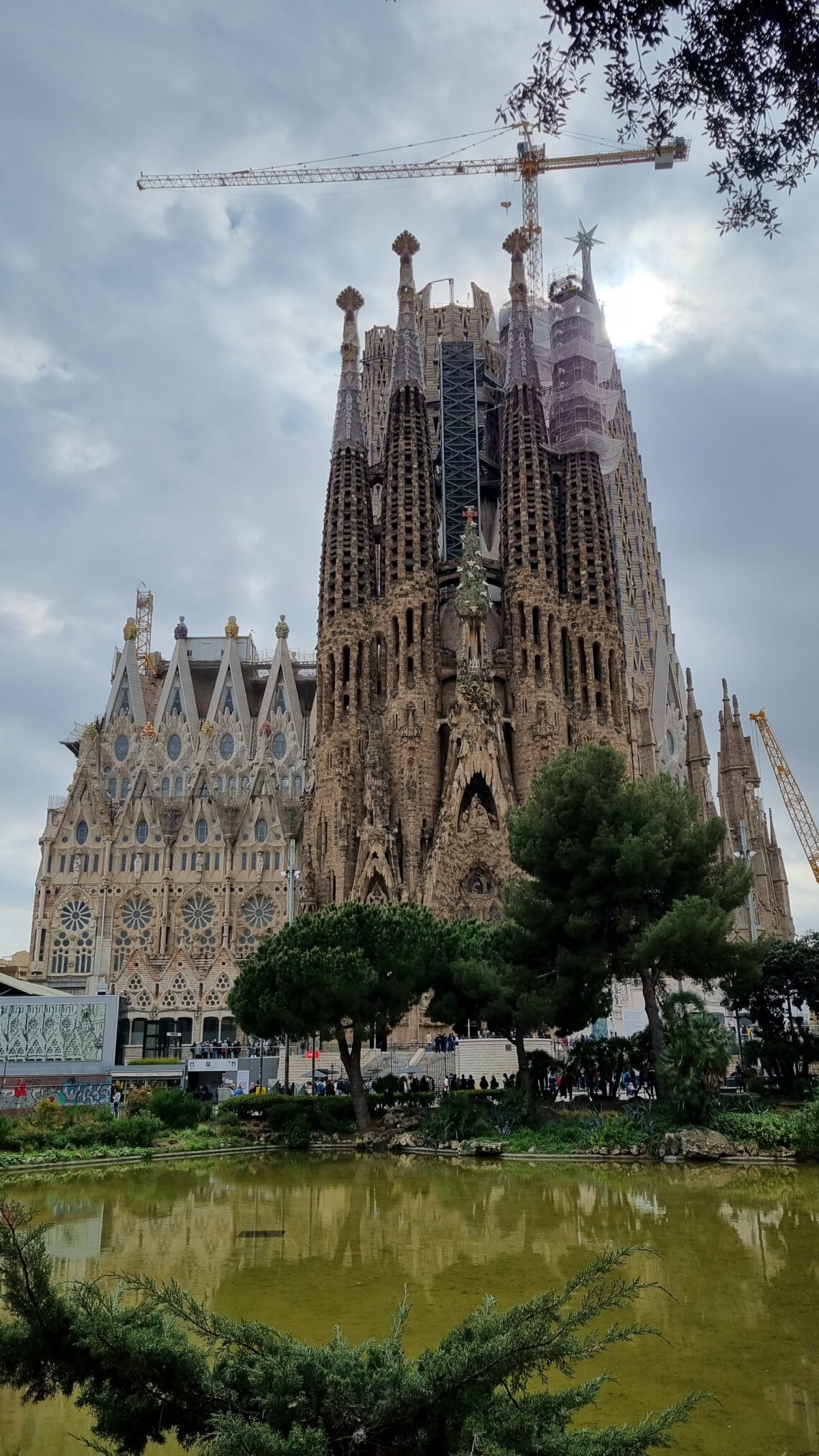
1,604 Comments
Регистрация на www.binance.com
Your point of view caught my eye and was very interesting. Thanks. I have a question for you. https://accounts.binance.com/ru/register-person?ref=P9L9FQKY
Sign up to get 100 USDT
Thanks for sharing. I read many of your blog posts, cool, your blog is very good. https://accounts.binance.com/en/register?ref=YY80CKRN
Cont Binance gratuit
Your point of view caught my eye and was very interesting. Thanks. I have a question for you. https://accounts.binance.com/ro/register?ref=V2H9AFPY
20bet
Your article gave me a lot of inspiration, I hope you can explain your point of view in more detail, because I have some doubts, thank you.
20bet
Your article gave me a lot of inspiration, I hope you can explain your point of view in more detail, because I have some doubts, thank you.
20bet
Your article gave me a lot of inspiration, I hope you can explain your point of view in more detail, because I have some doubts, thank you.
20bet
I am currently writing a paper and a bug appeared in the paper. I found what I wanted from your article. Thank you very much. Your article gave me a lot of inspiration. But hope you can explain your point in more detail because I have some questions, thank you. 20bet
20bet
Your article gave me a lot of inspiration, I hope you can explain your point of view in more detail, because I have some doubts, thank you. 20bet
20bet
Apoiar ferramentas de apostas e estar equipado com uma plataforma diversificada de transações financeiras, a 20Bet oferece suporte tangível aos jogadores. Este é um lugar onde eles podem apostar com dinheiro real, respaldados por concorrentes de diversas disciplinas esportivas. 20bet
20bet
Your article gave me a lot of inspiration, I hope you can explain your point of view in more detail, because I have some doubts, thank you. 20bet
nimabi
Thank you very much for sharing, I learned a lot from your article. Very cool. Thanks. nimabi
nimabi
Thank you very much for sharing, I learned a lot from your article. Very cool. Thanks. nimabi
viagra
vurcazkircazpatliycaz.kubglZ4iuwFM
aysepeti
Web siteleri ve mobil uygulamalar için geçerli SMS Onay alarak Hesap güvenliğinizi artırın. Birden fazla ülkeden numara alabilirsiniz.
detachably
detachably xyandanxvurulmus.unj6lpdfSgkW
註冊即可獲得100 USDT
Thanks for sharing. I read many of your blog posts, cool, your blog is very good. https://www.binance.com/zh-TC/join?ref=JHQQKNKN
To tài khon min phí
I don’t think the title of your article matches the content lol. Just kidding, mainly because I had some doubts after reading the article. https://www.binance.com/vi/join?ref=P9L9FQKY
Lumikha ng Personal na Account
Thanks for sharing. I read many of your blog posts, cool, your blog is very good. https://www.binance.info/ph/join?ref=V2H9AFPY
Derrickopene
Страница [url=https://telegra.ph/Gde-najti-recepty-dlya-multivarki-12-24]https://telegra.ph/Gde-najti-recepty-dlya-multivarki-12-24[/url] посвящена поиску разнообразных и уникальных рецептов для мультиварки, эффективного кухонного устройства, облегчающего приготовлению еды. Автор предлагает несколько эффективных источников для поиска рецептов: профессиональные кулинарные сайты и блоги, кулинарные книги и журналы, активные социальные сети и форумы, а также официальные приложения производителей мультиварок. Эти ресурсы предоставляют различные рецептов, начиная с повседневных блюд и заканчивая праздничными вариантов, а также практичные советы по использованию мультиварки. Страница подчеркивает, что использование мультиварки открывает уникальные возможности для кулинарных экспериментов.
Более подробную информацию можно найти на сайте https://telegra.ph/Gde-najti-recepty-dlya-multivarki-12-24.
binance
Thanks for sharing. I read many of your blog posts, cool, your blog is very good. https://accounts.binance.com/ka-GE/register?ref=OMM3XK51
CarlosCrurn
Эта статья [url=https://telegra.ph/Zagadochnyj-mir-Zverej-Otkrojte-dveri-prirodnogo-volshebstva-12-23]https://telegra.ph/Zagadochnyj-mir-Zverej-Otkrojte-dveri-prirodnogo-volshebstva-12-23[/url] освещает важные аспекты мира животных, их значение в окружающем мире и культуре.
Обсуждается разнообразие животных, их роль в оценке состояния окружающей среды, уникальные способности, а также их значение в мифологии. Обращается внимание на угрозах, с которыми сталкиваются животные из-за человеческой деятельности, и обозначается важность их защиты.
Животные выполняют ключевую роль в уравновешивании баланса в природе. Они не только обогащают биоразнообразие, но и оказывают воздействие на экосистемы, участвуя в опылении растений, распространении семян и сохранении здоровья лесов и других природных сред. Изучение животных также демонстрирует множество тайн эволюции и адаптации к окружающей среде, демонстрируя удивительные способности и поведение, которые развивались в течение миллионов лет.
Не забудьте добавить ссылку на статью в закладки: https://telegra.ph/Zagadochnyj-mir-Zverej-Otkrojte-dveri-prirodnogo-volshebstva-12-23
gratis binance-konto
Can you be more specific about the content of your article? After reading it, I still have some doubts. Hope you can help me. https://www.binance.com/sv/register?ref=IQY5TET4
JaredWromY
На сайте [url=https://antipushkin.ru/]https://antipushkin.ru/[/url], посвященном мудрости, вы окунетесь в мир вдохновляющих высказываний великих мыслителей.
У нашего ресурса вас ждет большой ассортимент мыслей и фраз о смысле бытия и разных аспектах жизни.
Ознакомьтесь в глубокие мысли известных личностей и проникнитесь мудростью ежедневно. Практикуйте цитаты и афоризмы для самопознания и размышления.
Посетите наш сайт и погрузитесь в атмосферу мудрых мыслей прямо сейчас. Откройте для себя ценными уроками, которые подарит вам наш портал.
Мы предлагаем вам множество фраз и высказываний, которые помогут вам в разных аспектах бытия. На сайте есть фразы о любви и отношениях, личностном росте, доброте и сострадании.
Сайт antipushkin.ru – это ваш проводник в мир мудрых мыслей. Мы публикуем лучшие мысли знаменитых людей, которые помогут вам в вашем духовном росте.
Присоединяйтесь к нашему сообществу и будьте в курсе всех вдохновляющих мыслей. Наш портал с удовольствием предоставит вам порцию философии всегда и везде.
childrens sex
bahis siteleri sikis citixx.of3McEwhTA10
Robertmouff
На нашем сайте [url=https://citaty12345.blogspot.com/]https://citaty12345.blogspot.com/[/url] вы откроете для себя вдохновляющую коллекцию цитат, которые способны оказать глубокое влияние на вашу повседневность. Цитаты от знаменитых писателей собраны здесь, чтобы принести вам свежие взгляды для личностного роста.
Наш блог предназначен не только для любителей литературы и философии, но и для всех, кто стремится обрести новые идеи в словах. Здесь вы найдете цитаты на множество темы: от успеха и саморазвития до личностного роста. Каждая цитата – это глубокое послание, которое может изменить ваш жизненный путь.
Мы аккуратно выбираем цитаты, чтобы они были актуальными. Наши материалы позволяют вам окунуться в мир мудрости, открывая новые перспективы. Мы верим, что правильно подобранные слова служат источником вдохновения.
Присоединяйтесь нашего блога https://citaty12345.blogspot.com/ и обнаруживайте для себя новые цитаты ежедневно. Независимо от того, ищете ли вы утешение или искренне желаете вдохновляться красотой слов, наш блог предложит вам именно то, что вам требуется. Дайте этим цитатам стать частью вашего постоянного вдохновения.
odpri racun na binance
Thanks for sharing. I read many of your blog posts, cool, your blog is very good. https://www.binance.info/sl/join?ref=UM6SMJM3
eski rahatiniz olmayacak
eskort siteleri 0qbxjluaxcxjsxzz.nh3eimVI4L00
Enregistrement Binance
Can you be more specific about the content of your article? After reading it, I still have some doubts. Hope you can help me. https://accounts.binance.com/fr/register?ref=UM6SMJM3
Bonus d'inscription à Binance
Thank you for your sharing. I am worried that I lack creative ideas. It is your article that makes me full of hope. Thank you. But, I have a question, can you help me? https://accounts.binance.com/fr/register-person?ref=YY80CKRN
abrir uma conta na binance
Your point of view caught my eye and was very interesting. Thanks. I have a question for you. https://www.binance.info/pt-PT/join?ref=PORL8W0Z
binance Inscreva-se
Your article helped me a lot, is there any more related content? Thanks! https://www.binance.info/pt-PT/join?ref=T7KCZASX
Зарегистрироваться
Your article helped me a lot, is there any more related content? Thanks! https://www.binance.info/ru/join?ref=FIHEGIZ8
最佳binance推薦碼
Your article helped me a lot, is there any more related content? Thanks! https://accounts.binance.com/zh-TC/register?ref=DB40ITMB
ein binance Konto erstellen
Your point of view caught my eye and was very interesting. Thanks. I have a question for you. https://accounts.binance.com/de-CH/register?ref=UM6SMJM3
бнанс зареструватися
Your article helped me a lot, is there any more related content? Thanks! https://www.binance.info/uk-UA/join?ref=S5H7X3LP
binance推薦獎金
Can you be more specific about the content of your article? After reading it, I still have some doubts. Hope you can help me.
100 USDT
Your point of view caught my eye and was very interesting. Thanks. I have a question for you.
ustvarjanje racuna na binance
Your article helped me a lot, is there any more related content? Thanks!
porn video free download in hd
hd porn videos download gghkyogg.bqTST5ebcNO
sexy video download 4k
hd porno free ggjennifegg.z26LEetJ6Gd
Pinakamahusay na Binance referral code
Your point of view caught my eye and was very interesting. Thanks. I have a question for you.
Skapa ett gratis konto
Thanks for sharing. I read many of your blog posts, cool, your blog is very good.
binance推薦代碼
Thanks for sharing. I read many of your blog posts, cool, your blog is very good.
tlover tonet
Great – I should certainly pronounce, impressed with your web site. I had no trouble navigating through all the tabs as well as related information ended up being truly easy to do to access. I recently found what I hoped for before you know it in the least. Reasonably unusual. Is likely to appreciate it for those who add forums or something, site theme . a tones way for your client to communicate. Nice task..
melhor código de indicac~ao binance
Can you be more specific about the content of your article? After reading it, I still have some doubts. Hope you can help me.
goodhere Arab porn
goodhere MILF porn vurucutewet.2imnMNmSCpp
ladyandtherose Cuckold porn
ladyandtherose Old and Young porn backlinkseox.AKzUqm6xdx3
jenniferroy 大きなお尻ポルノ
jenniferroy 女の子の自慰行為ポルノ japanesexxporns.PbV2pTkFneJ
Crea una cuenta gratis
Your article helped me a lot, is there any more related content? Thanks!
एमआईएलए अश्लील
छोटे स्तन अश्लील txechdyzxca.jRkYABuP3Ez
यादृच्छिक अश्लीलता
खिलौने अश्लील हैं hkyonet.vwkGmeLWXaW
ਮਿਸ਼ਨਰੀ ਸ਼ੈਲੀ ਪੋਰਨ
ਜਾਅਲੀ ਟੈਕਸੀ ਪੋਰਨ madisonivysex.G9N2pgDAbhJ
binance
I don’t think the title of your article matches the content lol. Just kidding, mainly because I had some doubts after reading the article.
tlover tonet
I have been examinating out a few of your stories and i can state clever stuff. I will make sure to bookmark your site.
ladesbet milf ਪੋਰਨ
ladesbet ਕਮ ਸ਼ਾਟ ਪੋਰਨ ladesinemi.9gtZioZhlqI
ladesbet クリームパイポルノ
ladesbet 乱交ポルノ ladestinemi.ajne9iyOsjU
Kayit Ol
Can you be more specific about the content of your article? After reading it, I still have some doubts. Hope you can help me.
sugar defender
How Does Sugar Defender Work & What are the Expected Results? Sugar Defender is a liquid supplement.
puravive reviews
What Is Puravive? Puravive is a weight loss supplement that works to treat obesity by speeding up metabolism and fat-burning naturally.
m1WIN2024meria
Букмекерская контора 1win – одна из самых популярных площадок, где пользователи могут делать ставки, играть, делать ставки и т. д. Для привлечения новой аудитории данная букмекерская контора предлагает новичкам отличный бонус – возможность получить до 200 000 бонусов за 4 депозита. И для этого покупателям даже не нужно вводить промокоды. Вам просто нужно зарегистрироваться в этом сервисе.
Промокод 1вин 2024: m1WIN2024 — это уникальный код, который необходимо указать при регистрации для получения бонуса 500% до 75 000 рублей. Это предложение доступно только новым игрокам, которые могут претендовать на приветственный бонус 1Win.
Для постоянных клиентов букмекерская контора постоянно выпускает новые промокоды 1win, ведь с этими бонусами клиентам гораздо приятнее пользоваться услугами этой букмекерской конторы. Промокод – это уникальный набор букв и цифр, активация которого позволяет человеку получить бонус. В этом обзоре мы расскажем, где взять новые промокоды 1win и как их активировать для получения бонусов.
Актуальный промокод 1Win 2024 вы можете найти на различных страницах с информацией о бонусах в букмекерских конторах. Продажи также осуществляются через партнеров компании. Лучшее место для поиска купонов – Telegram-канал букмекерской конторы. Новые ваучеры появляются там каждый день. 1Win может отправить промокод индивидуально уже зарегистрированному клиенту. Например, по случаю годовщины регистрации или просто дня рождения клиента.
С промокодом 1WIN новые игроки могут значительно увеличить сумму своего первого и последующих депозитов. Полученные бонусы можно использовать в игре и в случае успеха перевести на свой электронный кошелек. Максимальная сумма бонуса – 75 000 рублей.
Отдельной вкладки для проверки комбинаций нет. Если введено правильно, система активирует бонусное предложение. Во вкладке «Ваучер» в личном кабинете появится сообщение при вводе промокода 1Vin. Отсюда вы сможете увидеть, правильно ли была введена комбинация.
Источник: https://mmocenter.ru/blog/promokod-1win-promokody-1vin-pri-registracii-na-segodnya/
Sight Care
I carry on listening to the reports speak about receiving boundless online grant applications so I have been looking around for the top site to get one. Could you tell me please, where could i get some?
Java Brun
Just wanna state that this is extremely helpful, Thanks for taking your time to write this.
binance
Can you be more specific about the content of your article? After reading it, I still have some doubts. Hope you can help me.
1x_109745
Первый шаг к увеличению бонуса при регистрации или совершении ставок. Текущий промокод 1xbet на сегодня — 1x_109745. На вкладке «Регистрация» у вас есть выбор: бонус в ставках на спорт и бесплатная ставка в казино.
Чтобы получить Промокод 1xbet, вы должны стать активным игроком. Для этого вам необходимо зарегистрироваться и пополнить свой счет. Бонус на депозит предоставляется бесплатно всем новым игрокам согласно акции.
Для регистрации необходимо найти актуальное на сегодня зеркало и ввести сегодняшний промокод 1x_109745. Вы можете зарегистрироваться в один клик – по электронной почте, номеру телефона или в социальных сетях. Сети. Далее заполните форму в личном кабинете. Обратите особое внимание на обязательные поля под звездочкой. Если вы заполните его правильно, вы получите сообщение «Данные успешно сохранены». Бонус становится доступен после первого пополнения игрового счета одним из способов из блока пополнения.
Бонусы 1xbet можно получить в рублях, долларах и евро, в зависимости от того, из какой вы страны. Каждый пользователь, который зарегистрируется на официальном сайте и воспользуется промокодом, получит бонусы от букмекерской конторы 1xbet.
Размер бонуса по промокоду конторы 1xBet будет равен 100% от суммы первого депозита от 100 до 6500 рублей. Вы можете использовать промокод дня 1xbet только один раз; Вы получите бонусные деньги сразу после пополнения баланса. Этот бонус необходимо отыграть в течение месяца. Оборот должен превышать сумму, зачисленную на бонусный счет, в 5 раз. Делайте экспресс-ставки на 3 исхода с коэффициентом выше 1,4. На 1xbet вы можете делать ставки на спортивные события, использовать прогнозы капперов, чтобы получить максимальные условия, используйте наш промокод при регистрации 1xbet — 1x_109745.
Промокод 1хбет
lift detox caps
My spouse and I absolutely love your blog and find the majority of your post’s to be exactly I’m looking for. can you offer guest writers to write content in your case? I wouldn’t mind producing a post or elaborating on most of the subjects you write in relation to here. Again, awesome blog!
peremotka2
Ремонт электродвигателей
: основные этапы процедуры
Электродвигатель — это основной рабочий узел во многих бытовых и промышленных устройствах. Чтобы он исправно служил долгое время, необходимо регулярно проводить квалифицированное техническое обслуживание. Однако даже самое надёжное оборудование со временем изнашивается, и тогда требуется ремонт электродвигателя.
Основные этапы процедуры ремонта электродвигателя включают:
Очистка от загрязнений: электродвигатель очищают от пыли и грязи с помощью сжатого воздуха и тряпки, смоченной в чистом бензине.
Выявление внешних повреждений: на этом этапе обнаруживаются возможные причины поломки оборудования.
Снятие защитных кожухов и корпуса: после очистки можно приступать к разборке электродвигателя.
Проверка состояния механических узлов: проверяют состояние подшипников, вала и других механических элементов.
Демонтаж вышедших из строя подшипников и запрессовка новых: если обнаружены дефекты, подшипники заменяют на новые.
Перемотка электродвигателя: если проблема связана с повреждением статора или якоря, производят перемотку двигателя.
Для проведения качественного ремонта электродвигателя рекомендуется обращаться в специализированные мастерские или сервисные центры.
Перемотка электродвигателей: основные этапы и особенности процесса
Перемотка электродвигателей — это процесс замены старой или повреждённой обмотки на новую. Она может потребоваться в различных ситуациях, например, при износе рабочих обмоток, межвитковом пробое изоляции, коротком замыкании витков или изменении рабочего напряжения.
Этапы перемотки электродвигателя:
Дефектация: визуальный осмотр двигателя, определение наличия вмятин, царапин и оценка состояния существующих обмоток.
Удаление старых обмоток: срезание бандажных креплений и фиксация схемы соединения обмоток.
Очистка пазов статора: освобождение пазов от старой обмотки и очистка от наплывов лака, остатков изолирующих материалов.
Монтаж новых изолирующих прокладок: установка прокладок в пазы статора.
Намотка новых катушечных групп: на специальном оборудовании наматываются новые катушки, которые затем размещаются в пустых пазах статора и фиксируются.
Укладка обмоток: установка межкатушечных изолирующих элементов и обвязки (бандажа).
Подключение катушек согласно схеме: проверка электрических параметров и замыкание на корпус.
Пропитка лаком: статор пропитывается лаком для улучшения изоляционных свойств.
Полное отверждение лака и финишный контроль параметров: контроль напряжения пробоя и механических характеристик.
Механическая сборка двигателя и подключение главных выводов обмоток к клеммам: завершение процесса перемотки.
После завершения всех этапов перемотки проводится тестовый прогон электродвигателя для проверки его работоспособности.
Балансировка — это процесс устранения дисбаланса ротора, который возникает из-за неравномерного распределения массы или дефектов конструкции. Это важная процедура, которая помогает предотвратить повышенный износ подшипников, повреждение ротора и снижение эффективности работы двигателя.
Причины потери балансировки могут быть разными: ремонт ротора, заводской брак или работа двигателя в тяжёлых условиях с превышением паспортных значений нагрузки.
Существует два основных метода балансировки электродвигателей: статический и динамический. Статический метод используется для устранения основного дисбаланса, а динамический метод обеспечивает максимальную точность и применяется для балансировки двигателей, работающих на высоких оборотах.
В процессе динамической балансировки специальное оборудование раскручивает ротор электродвигателя и указывает точки дисбаланса с помощью датчиков. Добавление или уменьшение массы ротора в этих точках позволяет достичь максимальной балансировки.
Для некоторых моделей больших и мощных электродвигателей применяется только статический метод балансировки из-за невозможности выполнения динамической балансировки.
Качественная балансировка электродвигателя позволяет избежать проблем с вибрацией, повышенным износом и повреждением оборудования, связанного с работой неисправного двигателя.
Fitspresso
It is truly a great and helpful piece of info. I’m glad that you shared this helpful information with us. Please keep us informed like this. Thank you for sharing.
hire a hacker for instagram
Hi my friend! I wish to say that this post is amazing, nice written and come with almost all significant infos. I would like to see more posts like this.
hire a hacker
excellent post, very informative. I wonder why the other experts of this sector don’t notice this. You should continue your writing. I’m sure, you have a huge readers’ base already!
Esenistrmeria
Циклёвка паркета: особенности и этапы услуги
Циклёвка паркета — это процесс восстановления внешнего вида паркетного пола путём удаления верхнего повреждённого слоя и возвращения ему первоначального вида. Услуга включает в себя несколько этапов:
Подготовка: перед началом работы необходимо защитить мебель и другие предметы от пыли и грязи, а также удалить плинтусы.
Шлифовка: с помощью шлифовальной машины удаляется старый лак и верхний повреждённый слой древесины.
Шпатлёвка: после шлифовки поверхность паркета шпатлюется для заполнения трещин и выравнивания поверхности.
Грунтовка: перед нанесением лака паркет грунтуется для улучшения адгезии и защиты от плесени и грибка.
Нанесение лака: лак наносится в несколько слоёв с промежуточной шлифовкой между ними.
Полировка: после нанесения последнего слоя лака паркет полируется для придания поверхности блеска и гладкости.
Циклёвка паркета позволяет обновить внешний вид пола, восстановить его структуру и продлить срок службы.
Сайт: ykladka-parketa.ru Циклёвка паркета
otevrení úctu na binance
Thanks for sharing. I read many of your blog posts, cool, your blog is very good.
здк binance алдым-ау коды
I don’t think the title of your article matches the content lol. Just kidding, mainly because I had some doubts after reading the article.
1lpenistrmeria
Лендинг-пейдж — это одностраничный сайт, предназначенный для рекламы и продажи товаров или услуг, а также для сбора контактных данных потенциальных клиентов. Вот несколько причин, почему лендинг-пейдж важен для бизнеса:
Увеличение узнаваемости компании. Лендинг-пейдж позволяет представить компанию и её продукты или услуги в выгодном свете, что способствует росту узнаваемости бренда.
Повышение продаж. Заказать лендинг можно здесь – 1landingpage.ru Одностраничные сайты позволяют сосредоточиться на конкретных предложениях и акциях, что повышает вероятность совершения покупки.
Оптимизация SEO-показателей. Лендинг-пейдж создаются с учётом ключевых слов и фраз, что улучшает позиции сайта в результатах поиска и привлекает больше целевых посетителей.
Привлечение новой аудитории. Одностраничные сайты могут использоваться для продвижения новых продуктов или услуг, а также для привлечения внимания к определённым кампаниям или акциям.
Расширение клиентской базы. Лендинг-пейдж собирают контактные данные потенциальных клиентов, что позволяет компании поддерживать связь с ними и предлагать дополнительные услуги или товары.
Простота генерации лидов. Лендинг-пейдж предоставляют краткую и понятную информацию о продуктах или услугах, что облегчает процесс принятия решения для потенциальных клиентов.
Сбор персональных данных. Лендинг-пейдж позволяют собирать информацию о потенциальных клиентах, такую как email-адрес, имя и контактные данные, что помогает компании лучше понимать свою аудиторию и предоставлять более персонализированные услуги.
Улучшение поискового трафика. Лендинг-пейдж создаются с учётом определённых поисковых запросов, что позволяет привлекать больше целевых посетителей на сайт.
Эффективное продвижение новой продукции. Лендинг-пейдж можно использовать для продвижения новых товаров или услуг, что позволяет привлечь внимание потенциальных клиентов и стимулировать их к покупке.
Лёгкий процесс принятия решений. Лендинг-пейдж содержат только самую необходимую информацию, что упрощает процесс принятия решения для потенциальных клиентов.
В целом, лендинг-пейдж являются мощным инструментом для продвижения бизнеса, увеличения продаж и привлечения новых клиентов.
заказать лендинг пейдж
binance代碼
Your point of view caught my eye and was very interesting. Thanks. I have a question for you.
bonuspromokodbk
Букмекерская контора 1Вин – новинка в игровом мире, которая стремительно набирает популярность с 2016 года. Игрока привлекает действующий промокод 1winbonusbk. Увлекательные игры от 1win с впечатляющими суммами ставок и невероятными размерами ставок не оставят равнодушным даже самого требовательного игрока. Это произошло благодаря выгодным тарифам и высококачественным финансовым услугам. Например, приветственный бонус от 1winbonusbk составляет до 200%. Ни один букмекер этого не предлагает.
Чтобы получить доступ к бонусам и акциям 1win, вам необходимо пройти верификацию. Промокод 1win тогда примените промокод на сайте или в приложении и мгновенно выигрывайте в полевых или в игровых автоматах 1win и получайте до 50 000 рублей. Если вам понадобится помощь, вы всегда можете обратиться в онлайн-поддержку букмекерской конторы 1win.
Зарегистрироваться в 1win можно через акционную страницу или главную страницу сайта. И здесь, и там вы можете использовать промокод 1winbonusbk.
После регистрации код автоматически активируется, вы можете получить до 50 000 на первый депозит, пополнив игровой счет.
Сегодня букмекерская контора предлагает несколько вариантов вознаграждения. Большинство из них активируются после ввода специальных кодов, каждый из которых уникален. Клиент может использовать комбинацию только 1 раз. Продолжительность ограничена, как и количество участников.
Клиенты 1Win могут получать актуальные промокоды в группах букмекерской конторы в социальных сетях, в мессенджерах и у партнеров букмекерской конторы. Поощрения рассчитываются автоматически. Код необходимо активировать перед следующим пополнением счета. Если комбинация не была использована при регистрации, получить подарок от букмекера будет невозможно.
Промокоды 1вин
https://bonus-promokod-bk.ru/promokody-bk/promokod-1win/
hire a hacker
Some genuinely nice and utilitarian info on this web site, as well I think the pattern contains good features.
Herpesyl
I love your blog.. very nice colors & theme. Did you create this website yourself? Plz reply back as I’m looking to create my own blog and would like to know wheere u got this from. thanks
Kerassentials review
Great post. I am facing a couple of these problems.
Sugar Defender
I¦ve learn a few excellent stuff here. Certainly price bookmarking for revisiting. I surprise how a lot effort you place to make this kind of wonderful informative site.
lottery defeater reviews
What is Lottery Defeater Software? Lottery software is a specialized software designed to predict and facilitate individuals in winning lotteries.
sugar defender
What Is Sugar Defender? Sugar Defender is a new blood sugar-balancing formula that has been formulated using eight clinically proven ingredients that work together to balance sugar levels.
Sugar defender drops review
You made some clear points there. I did a search on the topic and found most people will agree with your site.
hire a hacker
Excellent blog here! Additionally your website so much up fast! What host are you the usage of? Can I get your affiliate link for your host? I wish my website loaded up as fast as yours lol
https://news.goeasylist.com/
I got what you mean , thankyou for putting up.Woh I am glad to find this website through google. “Delay is preferable to error.” by Thomas Jefferson.
Prodentim
You made certain nice points there. I did a search on the subject matter and found nearly all folks will agree with your blog.
Puravive
I am constantly thought about this, regards for putting up.
order cbd
You have observed very interesting points! ps nice site.
Lottery Defeater
Does your blog have a contact page? I’m having a tough time locating it but, I’d like to send you an e-mail. I’ve got some creative ideas for your blog you might be interested in hearing. Either way, great blog and I look forward to seeing it expand over time.
Pronail Complex
This is the proper weblog for anyone who needs to search out out about this topic. You realize a lot its virtually hard to argue with you (not that I truly would want…HaHa). You undoubtedly put a brand new spin on a topic thats been written about for years. Nice stuff, just nice!
Fitspresso review
You really make it seem so easy along with your presentation however I find this matter to be actually one thing which I believe I might by no means understand. It seems too complex and extremely huge for me. I’m looking ahead to your next post, I?¦ll try to get the grasp of it!
binance odkazov'y bonus
Can you be more specific about the content of your article? After reading it, I still have some doubts. Hope you can help me.
Registrera dig
Your point of view caught my eye and was very interesting. Thanks. I have a question for you.
Zen cortex
I wish to express appreciation to this writer for rescuing me from this particular problem. As a result of scouting throughout the search engines and getting concepts which are not powerful, I figured my life was gone. Living without the solutions to the problems you’ve fixed all through your entire site is a serious case, and the kind that would have in a negative way damaged my career if I had not discovered the blog. Your personal skills and kindness in playing with a lot of stuff was priceless. I don’t know what I would’ve done if I hadn’t come across such a stuff like this. I can also at this time look forward to my future. Thank you so much for your professional and effective help. I will not hesitate to propose your web sites to anyone who will need tips on this subject.
onexbetsmeria
Plinko 1WIN Игра Plinko на платформе 1Win – увлекательное развлечение, которое притягивает внимание множества игроков со всех уголков мира. Plinko – классическая аркадная игра, в которой игроки пускают шарик сверху на специально размеченное поле, состоящее из рядов крючков и препятствий. Шарик, скатываясь вниз, прыгает от крючка к крючку и попадает в различные ячейки на дне поля, каждая из которых имеет свою выигрышную стоимость.
Однако Plinko на 1Win – это не только развлекательная аркада, но и способ получить реальный выигрыш. В игровом поле присутствуют различные выигрышные ячейки с разными коэффициентами, что позволяет игроку получать крупные деньги при успешном попадании.
Aviator 1WIN Aviator is an exhilarating and immersive game that takes players on a thrilling aerial adventure. Set in a visually stunning world, the game combines the thrill of flying with strategic gameplay elements, making it a captivating experience for both casual gamers and hardcore enthusiasts alike.
One of the key aspects that sets Aviator apart from other games in its genre is its realistic and dynamic flight mechanics. The game utilizes advanced physics to simulate the real-world dynamics of flying, allowing players to feel the wind in their hair and the adrenaline coursing through their veins as they soar through the sky. Whether it’s performing daring stunts or engaging in intense dogfights, the flight experience in Aviator is unparalleled.
In Aviator, players have the opportunity to take on various missions and challenges, each with its own unique objectives and rewards. From delivering important cargo to engaging in aerial combat, each mission provides a different set of challenges that require strategic thinking and precision flying skills. The game also offers a wide range of customizable aircraft, allowing players to personalize their flying experience and optimize their performance in the skies.
Lucky Jet 1WIN Мир изменился. Времена устройства постепенно ушли в прошлое, и сегодня важным является скорость и мобильность. Именно поэтому компания Lucky Jet разработала уникальный продукт – 1win.
1win – это новое поколение реальных и виртуальных развлечений, объединенных в одной платформе. Будь то спортивные ставки, казино, слоты или электронный покер, 1win предлагает всемирно известные игры в одном месте. Пользователи больше не нуждаются в установке отдельных приложений или посещении различных сайтов, все решения доступны сразу на платформе 1win.
Выбирайте из бесконечного списка событий и спортивных матчей и делайте ставки на любимых команд или игроков. Следите за результатами в режиме реального времени и получайте радость от победы. И все это в одно касание на вашем смартфоне или планшете.
Mines 1WIN Mines 1win is a thrilling game that combines the excitement of mining and the thrill of winning. In this immersive virtual world, players have the opportunity to explore an underground mine filled with precious gems and valuable resources.
As you descend deeper into the mine, you’ll encounter various challenges and obstacles that test your skills and strategy. From navigating treacherous pathways to avoiding deadly traps, every step you take is crucial and could lead to glorious riches or unfortunate demise.
The objective of the game is to mine as many gems as possible while carefully managing your resources and avoiding any potential dangers. With each successful mining expedition, you’ll earn valuable points and rewards that can be used to upgrade your equipment and improve your chances of striking it big.
But Mines 1win is not just about mining; it’s also about outsmarting your competitors. As you progress through the game, you’ll encounter rival miners who will stop at nothing to claim the gems for themselves. Engage in intense strategic battles as you compete to secure the most valuable resources and emerge as the ultimate master of the mines.
Aviator 1WIN Авиатор – захватывающая и увлекательная игра, которая позволяет погрузиться в мир авиации и стать настоящим пилотом. Разработанная командой профессиональных разработчиков, игра Aviator предлагает игрокам уникальную возможность испытать себя в роли пилота самолета.
Основное преимущество игры заключается в ее реалистичности. Все аспекты авиации, начиная от управления самолетом до выполнения сложных маневров, воссозданы с большой точностью. Реалистичная физика полета, динамические погодные условия и плавное управление делают игру максимально реалистичной.
В игре представлены разнообразные виды самолетов, от классических истребителей до грузовых и пассажирских лайнеров. Каждый самолет имеет свои характеристики и особенности, что добавляет глубины и разнообразия геймплею.
Speed Cash 1WIN Speed Cash – инновационная платформа онлайн-гемблинга, которая предлагает своим пользователям уникальный опыт игры и высокие шансы на выигрыш. Благодаря передовым технологиям и максимально удобному интерфейсу, 1win становится идеальным выбором как для новичков, так и для опытных игроков.
Сервис предлагает широкий ассортимент популярных игр, включая слоты, рулетку, покер, блэкджек и многие другие. Главное преимущество Speed Cash в том, что он предлагает мгновенное начисление выигрышей на счет игрока, что гарантирует мгновенный доступ к заработанным средствам.
Безопасность и надежность игры – основные принципы, на которых базируется Speed Cash. Платформа использует передовые технологии шифрования данных, чтобы гарантировать конфиденциальность и защиту личной информации пользователей. Кроме того, 1win сотрудничает только с проверенными провайдерами игрового контента, чтобы обеспечить честную и непредвзятую игру.
1WIN Ставки на спорт — увлекательное и захватывающее занятие, которое привлекает множество людей по всему миру. И одной из платформ, где можно оказаться в центре спортивных событий и испытать адреналин от угадывания исходов матчей, является 1win.
1win – это онлайн-букмекерская контора, которая предоставляет возможность ставить на самые популярные и востребованные виды спорта. Будь то футбол, хоккей, баскетбол или теннис, на 1win каждый найдет что-то, что вызовет его интерес.
Ключевым преимуществом 1win является удобство пользования и широкий выбор ставок. Платформа предоставляет возможность сделать как простые, так и комбинированные ставки, в зависимости от предпочтений и стратегии пользователя. Кроме того, 1win предлагает привлекательные коэффициенты, которые повышают шансы на победу и увеличивают возможные выигрыши.
Одним из важных аспектов, на который обращают внимание пользователи 1win, является безопасность и надежность платформы. 1win осуществляет лицензионную деятельность и соблюдает все необходимые стандарты безопасности, чтобы гарантировать честную игру и защиту данных клиентов.
Кроме того, 1win предлагает своим пользователям различные бонусы и акции. Новым клиентам доступен приветственный бонус, который позволяет получить дополнительные средства для ставок. Также на 1win проводятся регулярные акции, которые позволяют участникам получить дополнительные вознаграждения и повысить свои шансы на выигрыш.
Источник https://1wmri.com/
Tonic Greens
Wonderful work! This is the type of info that should be shared around the internet. Shame on Google for not positioning this post higher! Come on over and visit my web site . Thanks =)
Ikaria Lean Belly Juice review
I’ve recently started a blog, the information you offer on this website has helped me greatly. Thank you for all of your time & work.
m1WIN2024meria
Промокоды играют важную роль в мире онлайн-шопинга и развлечений, и 1win не является исключением. 1win – это платформа для ставок, казино и онлайн-игр, которая предлагает ряд уникальных возможностей для своих пользователей. Одной из этих возможностей являются промокоды, которые предоставляются пользователям для получения различных преимуществ и бонусов.
Промокоды 1вин представляют собой уникальные комбинации символов, которые могут быть введены на платформе для активации различных акций и бонусов. Они позволяют пользователям получить дополнительные средства на свой игровой счет, повысить свой уровень лояльности или получить доступ к эксклюзивным предложениям и мероприятиям.
Одним из популярных промокодов, предоставляемых 1win, является “m1WIN2024”. Вводя этот промокод при регистрации, новые пользователи получают бонус на свой первый депозит. Это отличная возможность начать свой опыт на платформе с дополнительными средствами и увеличить свои шансы на успех.
Кроме того, 1win предоставляет регулярные промокоды для своих зарегистрированных пользователей. Такие промокоды могут приходить через электронную почту или быть опубликованы на официальных каналах 1win в социальных сетях. Они предлагают возможность получить дополнительные бонусы при пополнении счета, участии в определенных играх или просто за активность на платформе.
Пользуясь промокодами 1win, пользователи могут значительно обогатить свой игровой опыт и получить дополнительные возможности для выигрыша. Важно помнить, что каждый промокод имеет свои условия использования, поэтому рекомендуется внимательно ознакомиться с правилами и требованиями, прежде чем использовать какой-либо промокод.
В целом, использование промокодов 1win – это удобный и простой способ получить дополнительные бонусы и преимущества на платформе. Независимо от того, вы новый пользователь или постоянный клиент, промокоды могут стать отличной возможностью для улучшения вашего опыта игры. Убедитесь в том, что вы следите за обновлениями и акциями, чтобы не упустить свою возможность воспользоваться промокодами 1win и повысить свои шансы на выигрыш.
Источник: https://mmocenter.ru/blog/promokod-1win-promokody-1vin-pri-registracii-na-segodnya/
Lottery Defeater Reviews
I discovered your weblog web site on google and check a couple of of your early posts. Continue to keep up the superb operate. I just extra up your RSS feed to my MSN News Reader. In search of forward to reading more from you afterward!…
откриване на профил в binance
Thank you for your sharing. I am worried that I lack creative ideas. It is your article that makes me full of hope. Thank you. But, I have a question, can you help me?
Kerassentials
great submit, very informative. I ponder why the opposite experts of this sector don’t realize this. You must proceed your writing. I’m confident, you’ve a great readers’ base already!
Promokodmeria
Промокоды 1вин представляют собой специальные коды, пример promokod1WINbonus, которые позволяют пользователям получить дополнительные бонусы и преимущества при использовании платформы 1win. Благодаря этим промокодам, каждый зарегистрированный пользователь может получить дополнительные средства на свой игровой счет, бесплатные ставки или уникальные предложения.
Чтобы воспользоваться промокодами 1win, необходимо выполнить несколько простых шагов. Во-первых, необходимо зарегистрироваться на платформе 1win, создав личный аккаунт и указав все необходимые данные. После успешной регистрации, пользователь получает доступ к разнообразным промокодам, которые могут быть получены внутри системы или с помощью специальных акций и предложений.
Для активации промокода, пользователю необходимо перейти в свой личный кабинет на платформе 1win. Там требуется найти соответствующую вкладку или раздел, где можно ввести промокод. После ввода кода и нажатия на кнопку активации, система проверяет его на корректность и применяет соответствующие бонусы к аккаунту пользователя.
Промокоды 1win предоставляют широкий спектр возможностей для игроков. Некоторые промокоды предлагают дополнительные финансовые средства, которые можно использовать для ставок на спорт, казино или покер. Другие коды могут давать право на бесплатные ставки, бездепозитные бонусы или фриспины в слот-играх.
Однако, важно отметить, что промокоды 1win могут иметь определенные условия использования. Например, некоторые коды могут иметь ограниченный срок действия, требовать выполнения определенных условий или иметь минимальные требования к размеру ставки.
В целом, использование промокодов 1win – это отличная возможность получить дополнительные бонусы и преимущества на платформе. Они позволяют увеличить шансы на выигрыш и получить больше удовольствия от использования игровой платформы 1win. Не упустите возможность воспользоваться этими промокодами и получить максимальную выгоду от своей игры на 1win!
Источник https://promokod-1win-bonus.ru/
russian teen porn videos
child porn
Aja Asencio
I think this website has some real wonderful info for everyone. “It is easy enough to define what the Commonwealth is not. Indeed this is quite a popular pastime.” by Elizabeth II.
binance推薦代碼
Can you be more specific about the content of your article? After reading it, I still have some doubts. Hope you can help me.
Fitspresso reviews
I’m extremely impressed with your writing skills as well as with the layout on your weblog. Is this a paid theme or did you modify it yourself? Either way keep up the excellent quality writing, it is rare to see a nice blog like this one nowadays..
emperors vigor tonic review
Good write-up, I¦m regular visitor of one¦s site, maintain up the excellent operate, and It is going to be a regular visitor for a long time.
glucofreedom
What is Gluco Freedom? Millions of people suffer from blood sugar problems, despite the fact that many factors are beyond their control.
glucotrust
About GlucoTrust. GlucoTrust is a natural supplement that promotes normal blood sugar levels.
Java Burn
I will right away clutch your rss feed as I can’t to find your email subscription hyperlink or e-newsletter service. Do you have any? Kindly allow me recognize so that I may subscribe. Thanks.
sight care review
Exactly what I was looking for, regards for posting.
balmorex pro review
After all, what a great site and informative posts, I will upload inbound link – bookmark this web site? Regards, Reader.
emperors vigor tonic
What Is Exactly Emperor’s Vigor Tonic? Emperor’s Vigor Tonic is a clinically researched natural male health formula that contains a proprietary blend of carefully selected ingredients.
ティーンポルノ
matadorbet porn
Fitspresso
It?¦s actually a great and helpful piece of information. I am glad that you simply shared this helpful information with us. Please stay us up to date like this. Thank you for sharing.
fitspresso
What Is FitSpresso? FitSpresso is a dietary supplement that is made to support healthy fat-burning in the body
hire a hacker to catch a cheating spouse
It?¦s actually a cool and useful piece of info. I am satisfied that you just shared this useful information with us. Please keep us up to date like this. Thanks for sharing.
WilliamGix
Мы рекомендуем посетить веб-сайт https://cultureinthecity.ru/.
Кроме того, не забудьте добавить сайт в закладки: [url=https://cultureinthecity.ru/]https://cultureinthecity.ru/[/url]
java burn review
Hi, Neat post. There is an issue along with your web site in web explorer, would check this?K IE still is the market chief and a big section of other people will omit your great writing because of this problem.
leanbiome review
I love your blog.. very nice colors & theme. Did you create this website yourself? Plz reply back as I’m looking to create my own blog and would like to know wheere u got this from. thanks
fortune ox
You are a very clever individual!
WilliamGix
Мы рекомендуем посетить веб-сайт https://upsskirt.ru/gde-kupit-rybolovnye-snasti-s-dostavkoj-v-ukraine/.
Кроме того, не забудьте добавить сайт в закладки: [url=https://upsskirt.ru/gde-kupit-rybolovnye-snasti-s-dostavkoj-v-ukraine/]https://upsskirt.ru/gde-kupit-rybolovnye-snasti-s-dostavkoj-v-ukraine/[/url]
binance nos registro
Can you be more specific about the content of your article? After reading it, I still have some doubts. Hope you can help me.
sugar defender reviews
What is Sugar Defender 24? Jeffrey Mitchell made the Sugar Defender 24. It is a product (Sugar Defender Diabetes) that helps your blood sugar health.
Tonic Greens reviews
Really wonderful info can be found on blog. “Every obstacle yields to stern resolve.” by Leonardo DaVinci.
Glucotrust Reviews
I do agree with all the ideas you’ve presented in your post. They are very convincing and will certainly work. Still, the posts are too short for beginners. Could you please extend them a little from next time? Thanks for the post.
hire a social media hacker
I have recently started a web site, the info you provide on this site has helped me tremendously. Thanks for all of your time & work.
rtp aminototo
Hello there, simply was aware of your weblog via Google, and located that it’s truly informative. I am gonna watch out for brussels. I’ll be grateful when you continue this in future. A lot of other folks might be benefited from your writing. Cheers!
Lottery Defeater
Keep up the superb piece of work, I read few posts on this site and I conceive that your web blog is really interesting and contains bands of superb information.
Fitspresso
Very good written information. It will be valuable to anybody who usess it, as well as me. Keep up the good work – looking forward to more posts.
Tonic Greens
I enjoy you because of your entire efforts on this web page. Betty really likes working on research and it is simple to grasp why. My partner and i know all of the powerful tactic you deliver advantageous items via this blog and even encourage response from other ones on that topic then my child is in fact starting to learn so much. Take advantage of the remaining portion of the year. You are always carrying out a splendid job.
Java Burn review
Perfectly indited subject matter, thanks for entropy. “In the fight between you and the world, back the world.” by Frank Zappa.
Sight Care review
The very root of your writing whilst appearing agreeable in the beginning, did not settle well with me after some time. Someplace within the sentences you were able to make me a believer but just for a short while. I however have a problem with your jumps in assumptions and you might do well to fill in those breaks. In the event that you actually can accomplish that, I could undoubtedly be impressed.
Fitspresso
I beloved up to you will obtain performed right here. The comic strip is tasteful, your authored material stylish. however, you command get got an impatience over that you wish be turning in the following. ill definitely come further before again since exactly the same just about a lot frequently inside case you defend this increase.
Donaldbiant
mexican mail order pharmacies
https://cmqpharma.online/# purple pharmacy mexico price list
mexican online pharmacies prescription drugs
StephenOppof
medicine in mexico pharmacies: cmq mexican pharmacy online – mexico pharmacies prescription drugs
WilliamGix
Мы рекомендуем посетить следующие веб-сайты:
https://artcet.ru/gde-hranit-spinningi-v-dome-ili-garazhe-osobennosti-dizajna/
https://avtomaxi22.ru/kakoe-avto-luchshe-kupit-dlya-rybalok-sovety-i-rekomendatsii/
https://med-like.ru/kakie-aromaty-trav-lyubit-ryba-chto-dobavlyat-v-prikormku/
https://metal82.ru/iz-kakogo-materiala-delayut-luchshie-blesny-na-shhuku/
https://elegos.ru/kakie-izvestnye-deyateli-kultury-lyubili-rybachit/
https://40-ka.ru/rybalka-i-stroitelstvo-kak-postroit-idealnoe-mesto-dlya-lovli-ryby/
Также советуем добавить эти сайты в закладки:
[url=https://artcet.ru/gde-hranit-spinningi-v-dome-ili-garazhe-osobennosti-dizajna/]https://artcet.ru/gde-hranit-spinningi-v-dome-ili-garazhe-osobennosti-dizajna/[/url]
[url=https://avtomaxi22.ru/kakoe-avto-luchshe-kupit-dlya-rybalok-sovety-i-rekomendatsii/]https://avtomaxi22.ru/kakoe-avto-luchshe-kupit-dlya-rybalok-sovety-i-rekomendatsii/[/url]
[url=https://med-like.ru/kakie-aromaty-trav-lyubit-ryba-chto-dobavlyat-v-prikormku/]https://med-like.ru/kakie-aromaty-trav-lyubit-ryba-chto-dobavlyat-v-prikormku/[/url]
[url=https://metal82.ru/iz-kakogo-materiala-delayut-luchshie-blesny-na-shhuku/]https://metal82.ru/iz-kakogo-materiala-delayut-luchshie-blesny-na-shhuku/[/url]
[url=https://elegos.ru/kakie-izvestnye-deyateli-kultury-lyubili-rybachit/]https://elegos.ru/kakie-izvestnye-deyateli-kultury-lyubili-rybachit/[/url]
[url=https://40-ka.ru/rybalka-i-stroitelstvo-kak-postroit-idealnoe-mesto-dlya-lovli-ryby/]https://40-ka.ru/rybalka-i-stroitelstvo-kak-postroit-idealnoe-mesto-dlya-lovli-ryby/[/url]
pinealxt
Hi, i think that i noticed you visited my site so i got here to “return the want”.I’m trying to find things to improve my site!I assume its adequate to use some of your concepts!!
किशोर अश्लील
tipobet porn
Tonic Greens
F*ckin¦ tremendous things here. I¦m very satisfied to see your post. Thanks a lot and i am taking a look forward to contact you. Will you kindly drop me a e-mail?
hire a hacker pro
I went over this internet site and I believe you have a lot of superb information, saved to favorites (:.
किशोर अश्लील
child porn
HenryNek
purple pharmacy mexico price list: online mexican pharmacy – pharmacies in mexico that ship to usa
Denticore
I like what you guys are up too. Such intelligent work and reporting! Keep up the excellent works guys I have incorporated you guys to my blogroll. I think it’ll improve the value of my website :).
Lacy E
I like this weblog it’s a master piece! Glad I noticed this ohttps://69v.topn google.Blog money
russkoeporno365.pro
Wohh precisely what I was searching for, regards for putting up.
My website: анальное порно
Java Burn reviews
Wonderful blog! I found it while surfing around on Yahoo News. Do you have any suggestions on how to get listed in Yahoo News? I’ve been trying for a while but I never seem to get there! Many thanks
Article Star
My site https://marketplace.irontontribune.com/adhunter/irontontribune/home/emailfriend?url=http://article-star.com/website/www.bigoven.com/user/maryam_kosmetik covers a lot of topics about Robotics and I thought we could greatly benefit from each other. Awesome posts by the way!
Sugar Defender
I’m still learning from you, while I’m trying to achieve my goals. I absolutely love reading everything that is posted on your blog.Keep the aarticles coming. I enjoyed it!
bester binance Empfehlungscode
Can you be more specific about the content of your article? After reading it, I still have some doubts. Hope you can help me.
DavidLib
best online pharmacy india: indian pharmacies safe – world pharmacy india
MerlinAlima
purple pharmacy mexico price list: medication from mexico pharmacy – mexican pharmacy
http://indiapharmast.com/# top online pharmacy india
pharmacies in mexico that ship to usa [url=http://foruspharma.com/#]mexican border pharmacies shipping to usa[/url] medicine in mexico pharmacies
Binance代码
Thanks for sharing. I read many of your blog posts, cool, your blog is very good.
CharlesHeasp
mexican online pharmacies prescription drugs [url=http://foruspharma.com/#]pharmacies in mexico that ship to usa[/url] reputable mexican pharmacies online
EdwardPounK
http://canadapharmast.com/# canadian pharmacy com
DavidLib
buy medicines online in india: top 10 online pharmacy in india – indian pharmacy
Michaelloasy
buying from online mexican pharmacy: reputable mexican pharmacies online – buying from online mexican pharmacy
MerlinAlima
buying from online mexican pharmacy: reputable mexican pharmacies online – reputable mexican pharmacies online
https://indiapharmast.com/# Online medicine home delivery
best online pharmacies in mexico [url=http://foruspharma.com/#]mexican online pharmacies prescription drugs[/url] mexico drug stores pharmacies
CharlesHeasp
canadian pharmacy no scripts [url=http://canadapharmast.com/#]canadianpharmacymeds[/url] canadian pharmacy online
DavidLib
canadian pharmacy india: canadian pharmacy price checker – 77 canadian pharmacy
EdwardPounK
https://canadapharmast.com/# canadian pharmacy
Michaelloasy
india online pharmacy: online shopping pharmacy india – top 10 online pharmacy in india
DavidLib
world pharmacy india: indian pharmacy paypal – top 10 pharmacies in india
DavidLib
canadian pharmacy india: canadian mail order pharmacy – pharmacy com canada
MerlinAlima
top 10 online pharmacy in india: Online medicine home delivery – online shopping pharmacy india
https://canadapharmast.com/# canadian drug pharmacy
top 10 pharmacies in india [url=http://indiapharmast.com/#]india pharmacy[/url] reputable indian online pharmacy
Michaelloasy
pharmacies in canada that ship to the us: buying from canadian pharmacies – online canadian pharmacy
EdwardPounK
https://foruspharma.com/# buying from online mexican pharmacy
DavidLib
mexican rx online: buying from online mexican pharmacy – mexican pharmaceuticals online
CharlesHeasp
canadian pharmacy [url=https://canadapharmast.online/#]best rated canadian pharmacy[/url] canadian pharmacy in canada
DavidLib
pharmacies in canada that ship to the us: best canadian online pharmacy reviews – canadian pharmacy price checker
MerlinAlima
best online pharmacies in mexico: mexico pharmacy – mexican drugstore online
https://indiapharmast.com/# indian pharmacy paypal
global pharmacy canada [url=http://canadapharmast.com/#]canadian pharmacy 1 internet online drugstore[/url] my canadian pharmacy rx
Michaelloasy
mexico drug stores pharmacies: reputable mexican pharmacies online – mexican drugstore online
MyronSig
http://ciprodelivery.pro/# cipro pharmacy
cipro 500mg best prices [url=https://ciprodelivery.pro/#]buy cipro[/url] cipro ciprofloxacin
ThomasAdume
http://doxycyclinedelivery.pro/# doxycycline canada brand name
Fitspresso reviews
I went over this web site and I believe you have a lot of good information, saved to bookmarks (:.
JamesSED
can i buy generic clomid without insurance: can i get generic clomid without dr prescription – can i buy clomid no prescription
MichaelDrync
п»їpaxlovid: paxlovid cost without insurance – paxlovid price
https://paxloviddelivery.pro/# paxlovid generic
buy cipro cheap [url=https://ciprodelivery.pro/#]buy cipro online[/url] cipro
CharlesThiva
ciprofloxacin over the counter: ciprofloxacin generic price – п»їcipro generic
http://amoxildelivery.pro/# amoxil generic
ThomasAdume
https://amoxildelivery.pro/# over the counter amoxicillin canada
MyronSig
http://doxycyclinedelivery.pro/# doxycycline 163
ciprofloxacin over the counter [url=https://ciprodelivery.pro/#]buy cipro[/url] cipro for sale
CharlesThiva
doxycycline 100mg price: doxylin – doxycycline hyclate 100mg price
https://doxycyclinedelivery.pro/# doxycycline 50
ThomasAdume
https://doxycyclinedelivery.pro/# order doxycycline online uk
MyronSig
http://doxycyclinedelivery.pro/# 10 mg doxycycline
amoxicillin online pharmacy [url=http://amoxildelivery.pro/#]amoxicillin online no prescription[/url] azithromycin amoxicillin
ThomasAdume
https://doxycyclinedelivery.pro/# doxycycline 100 mg capsule price
CharlesThiva
buy doxycycline 100mg capsules: purchase doxycycline 100mg – how to get doxycycline online
http://clomiddelivery.pro/# how to get clomid pills
MyronSig
https://ciprodelivery.pro/# ciprofloxacin mail online
buy paxlovid online [url=http://paxloviddelivery.pro/#]paxlovid pharmacy[/url] paxlovid cost without insurance
ThomasAdume
http://ciprodelivery.pro/# cipro pharmacy
CharlesThiva
buy amoxicillin without prescription: amoxicillin 500 – how to get amoxicillin
https://clomiddelivery.pro/# where can i buy cheap clomid no prescription
MyronSig
https://paxloviddelivery.pro/# paxlovid price
amoxicillin 250 mg capsule [url=https://amoxildelivery.pro/#]generic for amoxicillin[/url] amoxicillin 500mg tablets price in india
ThomasAdume
http://ciprodelivery.pro/# where can i buy cipro online
CharlesThiva
amoxicillin 500 mg: where to get amoxicillin over the counter – buy amoxicillin online mexico
http://clomiddelivery.pro/# clomid otc
MyronSig
https://paxloviddelivery.pro/# paxlovid pharmacy
antibiotic amoxicillin [url=http://amoxildelivery.pro/#]amoxicillin no prescription[/url] how to buy amoxycillin
ThomasAdume
https://clomiddelivery.pro/# cheap clomid pills
CharlesThiva
doxycycline 100mg canada: order doxycycline online australia – doxycycline 10mg cost
http://ciprodelivery.pro/# cipro for sale
ThomasAdume
http://doxycyclinedelivery.pro/# purchase doxycycline
MyronSig
http://amoxildelivery.pro/# amoxicillin 500mg buy online canada
paxlovid covid [url=http://paxloviddelivery.pro/#]paxlovid for sale[/url] Paxlovid over the counter
CharlesThiva
ciprofloxacin generic price: ciprofloxacin over the counter – ciprofloxacin
http://paxloviddelivery.pro/# paxlovid pharmacy
ThomasAdume
http://ciprodelivery.pro/# ciprofloxacin generic price
MyronSig
https://ciprodelivery.pro/# cipro pharmacy
paxlovid pharmacy [url=https://paxloviddelivery.pro/#]п»їpaxlovid[/url] п»їpaxlovid
criac~ao de conta na binance
Your article helped me a lot, is there any more related content? Thanks!
Русское Порно 365
I got what you intend,bookmarked, very decent website.
My website: частное порно
RobertAvemn
paxlovid cost without insurance: paxlovid for sale – paxlovid price
Binance美国注册
Your point of view caught my eye and was very interesting. Thanks. I have a question for you.
Richardchell
https://mexicandeliverypharma.online/# mexican drugstore online
WayneFum
mexican mail order pharmacies: mexico pharmacies prescription drugs – best online pharmacies in mexico
Dominicdat
mexican pharmaceuticals online: mexican pharmaceuticals online – medicine in mexico pharmacies
ArnoldBok
mexican pharmaceuticals online [url=https://mexicandeliverypharma.com/#]mexico pharmacies prescription drugs[/url] buying from online mexican pharmacy
Dominicdat
mexican online pharmacies prescription drugs: purple pharmacy mexico price list – mexican rx online
WayneFum
п»їbest mexican online pharmacies: buying from online mexican pharmacy – mexico drug stores pharmacies
ArnoldBok
mexican mail order pharmacies [url=https://mexicandeliverypharma.online/#]mexican mail order pharmacies[/url] mexico pharmacies prescription drugs
Richardchell
http://mexicandeliverypharma.com/# purple pharmacy mexico price list
Dominicdat
mexican pharmaceuticals online: mexican online pharmacies prescription drugs – reputable mexican pharmacies online
WayneFum
mexican rx online: mexico drug stores pharmacies – mexican rx online
ArnoldBok
purple pharmacy mexico price list [url=https://mexicandeliverypharma.com/#]buying from online mexican pharmacy[/url] mexican rx online
affordable private investigator near me
Currently it looks like Movable Type is the best blogging platform available right now. (from what I’ve read) Is that what you are using on your blog?
Richardchell
https://mexicandeliverypharma.online/# buying from online mexican pharmacy
Nelsonkak
п»їbest mexican online pharmacies: mexican pharmaceuticals online – mexico pharmacies prescription drugs
Dominicdat
mexico drug stores pharmacies: best online pharmacies in mexico – п»їbest mexican online pharmacies
WayneFum
best online pharmacies in mexico: mexican mail order pharmacies – medication from mexico pharmacy
ArnoldBok
purple pharmacy mexico price list [url=https://mexicandeliverypharma.online/#]mexico drug stores pharmacies[/url] reputable mexican pharmacies online
Nelsonkak
best online pharmacies in mexico: mexican online pharmacies prescription drugs – pharmacies in mexico that ship to usa
Dominicdat
mexican rx online: buying from online mexican pharmacy – п»їbest mexican online pharmacies
WayneFum
pharmacies in mexico that ship to usa: mexican rx online – buying prescription drugs in mexico online
ArnoldBok
reputable mexican pharmacies online [url=https://mexicandeliverypharma.online/#]buying prescription drugs in mexico[/url] buying prescription drugs in mexico online
Richardchell
https://mexicandeliverypharma.com/# buying from online mexican pharmacy
Nelsonkak
mexico drug stores pharmacies: mexican mail order pharmacies – pharmacies in mexico that ship to usa
Dominicdat
п»їbest mexican online pharmacies: mexican mail order pharmacies – purple pharmacy mexico price list
WayneFum
п»їbest mexican online pharmacies: medication from mexico pharmacy – purple pharmacy mexico price list
ArnoldBok
mexican mail order pharmacies [url=https://mexicandeliverypharma.com/#]mexican pharmaceuticals online[/url] mexican online pharmacies prescription drugs
Nelsonkak
mexico pharmacies prescription drugs: mexico pharmacies prescription drugs – reputable mexican pharmacies online
Dominicdat
mexican mail order pharmacies: mexican border pharmacies shipping to usa – mexican pharmaceuticals online
WayneFum
buying prescription drugs in mexico online: best online pharmacies in mexico – mexican pharmaceuticals online
Dominicdat
best online pharmacies in mexico: mexican pharmaceuticals online – mexican online pharmacies prescription drugs
WayneFum
buying from online mexican pharmacy: buying from online mexican pharmacy – best online pharmacies in mexico
ArnoldBok
buying prescription drugs in mexico [url=https://mexicandeliverypharma.com/#]mexico drug stores pharmacies[/url] buying from online mexican pharmacy
Nelsonkak
mexican mail order pharmacies: mexico drug stores pharmacies – medicine in mexico pharmacies
Dominicdat
mexican mail order pharmacies: pharmacies in mexico that ship to usa – mexican online pharmacies prescription drugs
WayneFum
medicine in mexico pharmacies: buying prescription drugs in mexico online – buying prescription drugs in mexico
ArnoldBok
mexico drug stores pharmacies [url=http://mexicandeliverypharma.com/#]medication from mexico pharmacy[/url] buying prescription drugs in mexico online
jacob cohen
There is evidently a bunch to know about this. I assume you made various good points in features also.
Kod Binance
Your article helped me a lot, is there any more related content? Thanks!
Nelsonkak
п»їbest mexican online pharmacies: buying from online mexican pharmacy – mexican drugstore online
Dominicdat
mexico drug stores pharmacies: п»їbest mexican online pharmacies – medication from mexico pharmacy
WayneFum
best online pharmacies in mexico: purple pharmacy mexico price list – mexico pharmacies prescription drugs
binance Registrācijas bonusa kods
Thank you for your sharing. I am worried that I lack creative ideas. It is your article that makes me full of hope. Thank you. But, I have a question, can you help me?
Nelsonkak
pharmacies in mexico that ship to usa: best online pharmacies in mexico – mexico drug stores pharmacies
WayneFum
mexican pharmaceuticals online: medication from mexico pharmacy – mexican online pharmacies prescription drugs
ArnoldBok
mexico drug stores pharmacies [url=https://mexicandeliverypharma.com/#]mexico drug stores pharmacies[/url] purple pharmacy mexico price list
Nelsonkak
mexico drug stores pharmacies: buying prescription drugs in mexico – mexico drug stores pharmacies
Dominicdat
buying prescription drugs in mexico online: medicine in mexico pharmacies – mexican rx online
Nelsonkak
mexican rx online: mexican drugstore online – medication from mexico pharmacy
Dominicdat
mexican border pharmacies shipping to usa: mexican border pharmacies shipping to usa – mexican drugstore online
WayneFum
buying prescription drugs in mexico: mexican drugstore online – reputable mexican pharmacies online
ArnoldBok
mexican online pharmacies prescription drugs [url=https://mexicandeliverypharma.online/#]buying prescription drugs in mexico[/url] mexican pharmaceuticals online
Binance推荐奖金
Thanks for sharing. I read many of your blog posts, cool, your blog is very good.
Nelsonkak
buying prescription drugs in mexico online: buying prescription drugs in mexico online – buying prescription drugs in mexico
WayneFum
mexico drug stores pharmacies: buying prescription drugs in mexico – buying prescription drugs in mexico online
ArnoldBok
medicine in mexico pharmacies [url=http://mexicandeliverypharma.com/#]buying from online mexican pharmacy[/url] mexican rx online
Nelsonkak
mexico drug stores pharmacies: mexican mail order pharmacies – mexican drugstore online
Dominicdat
mexican border pharmacies shipping to usa: buying prescription drugs in mexico online – buying prescription drugs in mexico online
ArnoldBok
mexican border pharmacies shipping to usa [url=https://mexicandeliverypharma.online/#]medication from mexico pharmacy[/url] mexican online pharmacies prescription drugs
Nelsonkak
mexico drug stores pharmacies: mexico pharmacies prescription drugs – mexican drugstore online
WayneFum
mexican border pharmacies shipping to usa: mexican mail order pharmacies – buying prescription drugs in mexico online
Nelsonkak
mexico drug stores pharmacies: buying prescription drugs in mexico online – п»їbest mexican online pharmacies
WayneFum
medication from mexico pharmacy: mexican border pharmacies shipping to usa – mexico pharmacies prescription drugs
binance Kontoerstellung
Can you be more specific about the content of your article? After reading it, I still have some doubts. Hope you can help me.
Nelsonkak
mexican rx online: best online pharmacies in mexico – buying prescription drugs in mexico
WayneFum
best online pharmacies in mexico: mexican drugstore online – mexican mail order pharmacies
MatthewBer
where can i get prednisone over the counter: prednisone oral – can you buy prednisone over the counter in canada
Patrickacash
http://nolvadexbestprice.pro/# alternative to tamoxifen
LewisTib
https://propeciabestprice.pro/# generic propecia online
WilliamGix
Мы рекомендуем посетить следующие веб-сайты:
great-galaxy.ru, 90sad.ru, thebachelor.ru, kreativ-didaktika.ru, cultureinthecity.ru, vanillarp.ru, core-rpg.ru, urkarl.ru, upsskirt.ru, remonttermexov.ru, yarus-kkt.ru, imgtube.ru, center-esm.ru, skatertsamobranka.ru, svetnadegda.ru, shvejnye.ru, tione.ru, lostfiilmtv.ru, voenoboz.ru, my-caffe.ru, kanunnikovao.ru, adventime.ru, fishexpo-volga.ru, church-bench.ru, ipodtouch3g.ru, cardsfm.ru, beksai.ru, kaizen-tmz.ru, mehelper.ru, useit2.ru, taya-auto.ru, krylslova.ru, kairblog.ru, orenbash.ru, engelsspravka.ru, jennifer-love.ru, auto-know-how.ru, stalker-land.ru, btlforum.ru, bediva.ru, avto-yar.ru, bar-atra.ru, kinocirk.ru, portalbook.ru, nashi-grudnichki.ru, up-top.ru, kids-pencils.ru, tonersklad.ru.
Также советуем добавить эти сайты в закладки:
[url=https://great-galaxy.ru]great-galaxy.ru[/url], [url=https://90sad.ru]90sad.ru[/url], [url=https://thebachelor.ru]thebachelor.ru[/url], [url=https://kreativ-didaktika.ru]kreativ-didaktika.ru[/url], [url=https://cultureinthecity.ru]cultureinthecity.ru[/url], [url=http://vanillarp.ru]vanillarp.ru[/url], [url=https://core-rpg.ru]core-rpg.ru[/url], [url=https://urkarl.ru]urkarl.ru[/url], [url=https://upsskirt.ru]upsskirt.ru[/url], [url=https://remonttermexov.ru]remonttermexov.ru[/url], [url=https://yarus-kkt.ru]yarus-kkt.ru[/url], [url=https://imgtube.ru]imgtube.ru[/url], [url=https://center-esm.ru]center-esm.ru[/url], [url=https://skatertsamobranka.ru]skatertsamobranka.ru[/url], [url=https://svetnadegda.ru]svetnadegda.ru[/url], [url=https://shvejnye.ru]shvejnye.ru[/url], [url=https://tione.ru]tione.ru[/url], [url=https://lostfiilmtv.ru]lostfiilmtv.ru[/url], [url=https://voenoboz.ru]voenoboz.ru[/url], [url=https://my-caffe.ru]my-caffe.ru[/url], [url=https://kanunnikovao.ru]kanunnikovao.ru[/url], [url=https://adventime.ru]adventime.ru[/url], [url=https://fishexpo-volga.ru]fishexpo-volga.ru[/url], [url=https://church-bench.ru]church-bench.ru[/url], [url=https://ipodtouch3g.ru]ipodtouch3g.ru[/url], [url=https://cardsfm.ru]cardsfm.ru[/url], [url=https://beksai.ru]beksai.ru[/url], [url=https://kaizen-tmz.ru]kaizen-tmz.ru[/url], [url=https://mehelper.ru]mehelper.ru[/url], [url=https://useit2.ru]useit2.ru[/url], [url=https://taya-auto.ru]taya-auto.ru[/url], [url=https://krylslova.ru]krylslova.ru[/url], [url=https://kairblog.ru]kairblog.ru[/url], [url=https://orenbash.ru]orenbash.ru[/url], [url=https://engelsspravka.ru]engelsspravka.ru[/url], [url=https://jennifer-love.ru]jennifer-love.ru[/url], [url=https://auto-know-how.ru]auto-know-how.ru[/url], [url=https://stalker-land.ru]stalker-land.ru[/url], [url=https://btlforum.ru]btlforum.ru[/url], [url=https://bediva.ru]bediva.ru[/url], [url=https://avto-yar.ru]avto-yar.ru[/url], [url=https://bar-atra.ru]bar-atra.ru[/url], [url=https://kinocirk.ru]kinocirk.ru[/url], [url=https://portalbook.ru]portalbook.ru[/url], [url=https://nashi-grudnichki.ru]nashi-grudnichki.ru[/url], [url=https://up-top.ru]up-top.ru[/url], [url=https://kids-pencils.ru]kids-pencils.ru[/url], [url=https://tonersklad.ru]tonersklad.ru[/url].
MatthewBer
Cytotec 200mcg price: buy cytotec online fast delivery – buy cytotec pills online cheap
Patrickacash
https://cytotecbestprice.pro/# buy cytotec in usa
Mycosoothe
I have not checked in here for some time because I thought it was getting boring, but the last several posts are great quality so I guess I will add you back to my daily bloglist. You deserve it my friend
MatthewBer
cost of generic propecia price: order cheap propecia without insurance – order generic propecia no prescription
Patrickacash
http://prednisonebestprice.pro/# prednisone online sale
LewisTib
http://propeciabestprice.pro/# buy cheap propecia without a prescription
nagano lean body tonic
I am delighted that I discovered this blog, just the right information that I was searching for! .
MatthewBer
should i take tamoxifen: tamoxifen citrate – tamoxifenworld
MatthewBer
prednisone capsules: where can i buy prednisone – prednisone 20mg online pharmacy
tonic greens
Hiya! I just want to give a huge thumbs up for the good data you have right here on this post. I will likely be coming back to your weblog for more soon.
LewisTib
http://nolvadexbestprice.pro/# tamoxifen and osteoporosis
binance icin kaydolun
Thanks for sharing. I read many of your blog posts, cool, your blog is very good.
MatthewBer
cost cheap propecia for sale: cost generic propecia – order generic propecia for sale
Pieregistrējieties, lai sanemtu 100 USDT
Thanks for sharing. I read many of your blog posts, cool, your blog is very good.
MatthewBer
nolvadex vs clomid: where to get nolvadex – tamoxifen joint pain
MatthewBer
does tamoxifen cause weight loss: tamoxifen alternatives – does tamoxifen cause joint pain
LewisTib
https://zithromaxbestprice.pro/# zithromax 250mg
MatthewBer
can you buy prednisone over the counter uk: prednisone – purchase prednisone from india
MatthewBer
prednisone 4 mg daily: buy prednisone 20mg – prednisone tablets canada
Tomaszep
farmacia online senza ricetta: avanafil in farmacia – comprare farmaci online con ricetta
Patrickfound
farmacia online piГ№ conveniente: avanafil in farmacia – farmacia online
https://farmait.store/# farmacia online piГ№ conveniente
migliori farmacie online 2024 [url=https://avanafil.pro/#]Avanafil compresse[/url] comprare farmaci online con ricetta
Tomaszep
Farmacia online piГ№ conveniente: kamagra oral jelly – Farmacia online piГ№ conveniente
Elliottmal
viagra prezzo farmacia 2023 cialis farmacia senza ricetta or viagra generico prezzo piГ№ basso
https://images.google.at/url?q=http://viagragenerico.site viagra online spedizione gratuita
[url=https://images.google.sr/url?q=https://viagragenerico.site]alternativa al viagra senza ricetta in farmacia[/url] viagra generico in farmacia costo and [url=http://www.donggoudi.com/home.php?mod=space&uid=1064162]viagra online spedizione gratuita[/url] viagra originale in 24 ore contrassegno
Tomaszep
Farmacia online miglior prezzo: Cialis generico farmacia – comprare farmaci online all’estero
Tomaszep
Farmacie on line spedizione gratuita: Farmacia online migliore – farmacie online sicure
Tomaszep
viagra subito: viagra senza prescrizione – viagra generico in farmacia costo
Elliottmal
viagra generico in farmacia costo viagra pfizer 25mg prezzo or viagra originale in 24 ore contrassegno
https://maps.google.ba/url?q=https://viagragenerico.site viagra online in 2 giorni
[url=https://www.google.gg/url?q=https://viagragenerico.site]alternativa al viagra senza ricetta in farmacia[/url] dove acquistare viagra in modo sicuro and [url=http://xn--0lq70ey8yz1b.com/home.php?mod=space&uid=77575]viagra pfizer 25mg prezzo[/url] kamagra senza ricetta in farmacia
Tomaszep
farmacia online senza ricetta: Tadalafil generico migliore – migliori farmacie online 2024
ClaytonLigue
cialis without prescription: Buy Cialis online – cialis 10mg ireland
https://tadalafil.auction/# cialis generic cipla
ed pills that work better than viagra [url=https://sildenafil.llc/#]Cheap Viagra online[/url] viagra canada
SamuelroM
http://sildenafil.llc/# generic viagra
Javaburn
I appreciate, cause I found exactly what I was looking for. You have ended my four day long hunt! God Bless you man. Have a great day. Bye
Java Burn reviews
I am perpetually thought about this, regards for putting up.
ClaytonLigue
buy dapoxetine with cialis: Generic Tadalafil 20mg price – cialis and no prescription
https://tadalafil.auction/# cialis price south africa
how long does viagra last [url=https://sildenafil.llc/#]buy sildenafil online canada[/url] order viagra online
Kerassentials
Some truly nice and useful information on this internet site, likewise I conceive the design and style contains wonderful features.
GeorgeHiemo
buying cialis with dapoxetine: cialis paypall – cialis daily online
WalkerBiz
blue pill viagra viagra coupons or online viagra
https://image.google.vg/url?q=https://sildenafil.llc blue pill viagra
[url=https://images.google.gp/url?sa=t&url=https://sildenafil.llc]generic viagra available[/url] generic viagra 100mg and [url=http://bocauvietnam.com/member.php?1505460-smrnrfuors]viagra from canada[/url] buy viagra
ClaytonLigue
cialis france: cialis without a doctor prescription – cialis funny
https://tadalafil.auction/# cialis online paypal
receive cialis overnight [url=http://tadalafil.auction/#]cheapest tadalafil[/url] cialis usa paypal
SamuelroM
http://sildenafil.llc/# generic viagra
Victorhix
viagra viagra coupon or viagra without prescription
https://toolbarqueries.google.at/url?sa=t&url=https://sildenafil.llc viagra 100mg
[url=http://cttpeseux.ch/romands/link.php?url=http://sildenafil.llc]viagra generic[/url] ed pills that work better than viagra and [url=http://yyjjllong.imotor.com/space.php?uid=179625]viagra cost[/url] cialis vs viagra
GeorgeHiemo
viagra price: Buy Viagra online cheap – buy viagra
ClaytonLigue
100 mg viagra lowest price: buy sildenafil online usa – buy viagra generic
http://sildenafil.llc/# free viagra
cialis canada generic [url=https://tadalafil.auction/#]cialis without a doctor prescription[/url] cialis 36 hour
Juliomop
how can i cialis without custom delayed in canada oryginal cialis or when does cialis patent expire
https://cse.google.ml/url?q=https://tadalafil.auction generic cialis discreet buy
[url=http://www.pandct.com/link.asp?webaddress=tadalafil.auction]cialis generic online uk[/url] viagra cialis trail pack and [url=http://www.empyrethegame.com/forum/memberlist.php?mode=viewprofile&u=321837]cialis reviews patients[/url] generic cialis black 800 mg
WilliamGix
035idc.com is considered one of the leading directories for educational institutions for many years on the market. They specialize in providing clients a wide range of information, from elementary schools to high schools, helping users find and connect with schools easily.
You can read more here: [url=https://anotherlink.com]anotherlink.com[/url]
You can find more details at 035idc.com
GeorgeHiemo
buy cialis shipment to russia: Generic Tadalafil 20mg price – buy cialis online in usa
SamuelroM
https://tadalafil.auction/# where to buy cialis in calgary safely
CharlesBal
http://edpillpharmacy.store/# buy ed medication online
pills for ed online
LeonardSuB
https://indiapharmacy.shop/# buy prescription drugs from india
Douglaspiops
buy medicines online in india: cheapest online pharmacy india – top online pharmacy india
Robertbrams
mexico drug stores pharmacies: Certified Mexican pharmacy – best online pharmacies in mexico
http://indiapharmacy.shop/# best online pharmacy india
indian pharmacy paypal [url=https://indiapharmacy.shop/#]indian pharmacy[/url] best online pharmacy india
Nano defense pro
I am impressed with this website , very I am a big fan .
CharlesBal
http://mexicopharmacy.win/# buying prescription drugs in mexico online
ed online treatment
Създаване на личен профил
Your article helped me a lot, is there any more related content? Thanks!
Douglaspiops
mexican online pharmacies prescription drugs: Certified Mexican pharmacy – mexican pharmaceuticals online
CharlesBal
http://mexicopharmacy.win/# mexican online pharmacies prescription drugs
discount ed meds
Sight Care review
It¦s actually a great and helpful piece of info. I am satisfied that you shared this helpful information with us. Please stay us up to date like this. Thanks for sharing.
LeonardSuB
https://mexicopharmacy.win/# medicine in mexico pharmacies
CharlesBal
https://edpillpharmacy.store/# low cost ed meds
erectile dysfunction drugs online
Douglaspiops
top 10 online pharmacy in india: Online pharmacy USA – indianpharmacy com
Robertbrams
mexican mail order pharmacies: Mexico pharmacy online – mexico pharmacies prescription drugs
https://edpillpharmacy.store/# cheap ed pills
mexico pharmacies prescription drugs [url=http://mexicopharmacy.win/#]mexican pharmacy[/url] buying prescription drugs in mexico
Geraldhailt
cheap ed pills online ed drugs or online ed medicine
https://www.paltalk.com/linkcheck?url=http://edpillpharmacy.store cost of ed meds
[url=https://cse.google.gl/url?sa=t&url=https://edpillpharmacy.store]cheapest erectile dysfunction pills[/url] buy ed medication online and [url=https://www.knoqnoq.com/home.php?mod=space&uid=22115]cheapest ed online[/url] top rated ed pills
LeonardSuB
http://edpillpharmacy.store/# erection pills online
Douglaspiops
Online medicine home delivery: indian pharmacy – top 10 online pharmacy in india
RichardUnils
cheap boner pills cheap ed drugs or ed rx online
https://american-europe.us/?data=http://edpillpharmacy.store/ ed medication online
[url=https://images.google.ms/url?sa=t&url=https://edpillpharmacy.store]ed online meds[/url] online ed medication and [url=http://www.donggoudi.com/home.php?mod=space&uid=1085704]ed drugs online[/url] discount ed meds
WilliamGix
Мы рекомендуем посетить сайт, который предоставляет качественную информацию и услуги в области бурения скважин. Узнайте больше о том, как правильно выбрать оборудование для бурения, а также получите советы от экспертов, посетив следующие страницы:
https://aircast-shop.ru/
[url=https://aircast-shop.ru/]https://aircast-shop.ru/[/url]
Douglaspiops
mexican rx online: Best online Mexican pharmacy – medicine in mexico pharmacies
Georgejapob
cheapest online pharmacy india world pharmacy india or top online pharmacy india
http://www.i-land.us/jp/smartphone/redirect.php?url=https://indiapharmacy.shop buy prescription drugs from india
[url=http://clients1.google.co.vi/url?sa=t&url=https://indiapharmacy.shop]mail order pharmacy india[/url] india pharmacy mail order and [url=https://forum.beloader.com/home.php?mod=space&uid=415908]reputable indian pharmacies[/url] pharmacy website india
Robertbrams
cheapest ed online: online ed prescription same-day – cheapest erectile dysfunction pills
http://edpillpharmacy.store/# erectile dysfunction online
mexican border pharmacies shipping to usa [url=http://mexicopharmacy.win/#]Medicines Mexico[/url] mexican mail order pharmacies
LeonardSuB
https://edpillpharmacy.store/# where can i get ed pills
Douglaspiops
mexico drug stores pharmacies: mexico pharmacy win – mexico pharmacies prescription drugs
WilliamGix
Этот пост на сайте telegra.ph предлагает важные сведения по теме эффективной дезинфекции помещений. Тем, кто хочет узнать больше, вы можете ознакомиться с полной статьей здесь: [url=https://telegra.ph/EHffektivnaya-dezinfekciya-pomeshchenij-vazhnye-aspekty-i-rekomendacii-08-02]Эффективная дезинфекция помещений: важные аспекты и рекомендации[/url].
Если вы хотите узнать, как эффективно бороться с тараканами, telegra.ph о борьбе с тараканами предоставляет подробные инструкции. Подробнее читайте по ссылке: [url=https://telegra.ph/Unichtozhenie-tarakanov-ehffektivnye-metody-borby-i-profilaktiki-08-02]Уничтожение тараканов: эффективные методы борьбы и профилактики[/url].
Эта статья на telegra.ph посвящена в которой описаны эффективные методы борьбы с клопами. Ознакомьтесь с полным материалом здесь: [url=https://telegra.ph/Unichtozhenie-klopov-ehffektivnye-metody-borby-i-profilaktiki-08-02]Уничтожение клопов: эффективные методы борьбы и профилактики[/url].
Те, кто столкнулся с проблемой крыс, найдут полезную информацию в статье на telegra.ph. Узнайте больше о борьбе с крысами здесь: [url=https://telegra.ph/Deratizaciya-krys-ehffektivnye-metody-borby-i-profilaktiki-08-02]Дератизация крыс: эффективные методы борьбы и профилактики[/url].
Этот пост на telegra.ph подробно рассказывает о эффективных методов борьбы с мышами. Ознакомьтесь с рекомендациями по дератизации мышей здесь: [url=https://telegra.ph/Deratizaciya-myshej-ehffektivnye-metody-borby-i-profilaktiki-08-02]Дератизация мышей: эффективные методы борьбы и профилактики[/url].
LeonardSuB
http://indiapharmacy.shop/# top online pharmacy india
Robertbrams
indian pharmacy paypal: Top online pharmacy in India – reputable indian pharmacies
http://edpillpharmacy.store/# cheap boner pills
mexico pharmacy [url=https://mexicopharmacy.win/#]Best pharmacy in Mexico[/url] mexico drug stores pharmacies
Georgejapob
п»їlegitimate online pharmacies india pharmacy website india or indian pharmacies safe
http://janeyleegrace.worldsecuresystems.com/redirect.aspx?destination=https://indiapharmacy.shop indian pharmacy paypal
[url=https://toolbarqueries.google.lt/url?q=http://indiapharmacy.shop]Online medicine home delivery[/url] world pharmacy india and [url=http://bbs.zhizhuyx.com/home.php?mod=space&uid=11154688]online shopping pharmacy india[/url] online shopping pharmacy india
LeonardSuB
http://mexicopharmacy.win/# medicine in mexico pharmacies
Robertbrams
п»їbest mexican online pharmacies: mexico pharmacy win – п»їbest mexican online pharmacies
http://edpillpharmacy.store/# cheap ed
online ed pills [url=https://edpillpharmacy.store/#]cheap ed pills online[/url] best online ed medication
LeonardSuB
http://mexicopharmacy.win/# mexican pharmaceuticals online
LeonardSuB
http://indiapharmacy.shop/# world pharmacy india
Robertbrams
mexico drug stores pharmacies: Medicines Mexico – mexican rx online
http://edpillpharmacy.store/# cheapest online ed treatment
mexican rx online [url=http://mexicopharmacy.win/#]Best online Mexican pharmacy[/url] mexican pharmacy
LeonardSuB
https://indiapharmacy.shop/# indian pharmacy paypal
Lottery Defeater
Good site! I truly love how it is easy on my eyes and the data are well written. I am wondering how I might be notified when a new post has been made. I’ve subscribed to your RSS which must do the trick! Have a great day!
WilliamGix
Learn about sensory strategies for people with autism, covering how they perceive the world and manage sensory overload.
[url=https://thespectrum.org.au/autism-strategy/autism-strategy-sensory/]https://thespectrum.org.au/autism-strategy/autism-strategy-sensory/[/url]
Discover more about sensory sensitivities here:
https://thespectrum.org.au/autism-strategy/autism-strategy-sensory/
This resource is valuable for professionals and families dealing with autism.
The Genius Wave
Awsome blog! I am loving it!! Will come back again. I am bookmarking your feeds also.
Fitspresso review
We are a bunch of volunteers and opening a new scheme in our community. Your website offered us with valuable information to work on. You have performed an impressive task and our entire community might be grateful to you.
Stanleyvof
tamoxifen endometrium [url=https://tamoxifen.bid/#]buy tamoxifen citrate[/url] benefits of tamoxifen
Stephenwhemo
https://lisinopril.guru/# lisinopril 40 mg india
DanielWab
buy misoprostol over the counter https://furosemide.win/# lasix side effects
lasix
Stanleyvof
order cytotec online [url=https://cytotec.pro/#]Misoprostol 200 mg buy online[/url] purchase cytotec
Stephenwhemo
http://cytotec.pro/# buy cytotec over the counter
DanielWab
buy cytotec in usa https://lipitor.guru/# prescription medication lipitor
generic lasix
The Wealth Signal
excellent submit, very informative. I wonder why the other specialists of this sector do not notice this. You must continue your writing. I am sure, you’ve a huge readers’ base already!
Stanleyvof
lasix furosemide 40 mg [url=https://furosemide.win/#]furosemida 40 mg[/url] lasix generic
Stephenwhemo
http://tamoxifen.bid/# lexapro and tamoxifen
StevenAftek
lasix side effects buy furosemide online or lasix furosemide
https://cse.google.com.sa/url?sa=t&url=https://furosemide.win lasix furosemide 40 mg
[url=https://alt1.toolbarqueries.google.co.uz/url?q=https://furosemide.win]lasix 100 mg[/url] furosemida 40 mg and [url=http://www.9kuan9.com/home.php?mod=space&uid=1210737]lasix side effects[/url] lasix 40 mg
ClaytonBlory
lisinopril pill 5 mg medication lisinopril 5 mg or prinivil 5mg tablet
https://www.dramonline.org/redirect?url=http://lisinopril.guru lisinopril brand name
[url=https://www.google.com.sl/url?q=https://lisinopril.guru]lisinopril 20mg india[/url] can i buy lisinopril online and [url=https://xiazai7.com/home.php?mod=space&uid=38102]lisinopril 30mg coupon[/url] lisinopril pills
DanielWab
cytotec buy online usa https://tamoxifen.bid/# tamoxifen menopause
lasix online
Stephenwhemo
http://lipitor.guru/# lipitor generic price canada
JulesNub
generic cost of lipitor lipitor drug or lipitor 80 mg price in india
https://images.google.as/url?sa=t&url=https://lipitor.guru lipitor cost in canada
[url=https://www.avainasemat.fi/joulutervehdys2013/index.php?url=https://lipitor.guru]lipitor 10mg tablets[/url] lipitor for sale and [url=https://xiazai7.com/home.php?mod=space&uid=37980]buy generic lipitor online[/url] can you buy lipitor over the counter
Jamesfirty
lipitor 20 mg daily: buy lipitor 20mg – lipitor 20mg
Stanleyvof
Cytotec 200mcg price [url=https://cytotec.pro/#]buy cytotec online[/url] buy misoprostol over the counter
DanielWab
buy cytotec online fast delivery http://tamoxifen.bid/# tamoxifen cancer
lasix online
Stephenwhemo
https://cytotec.pro/# Abortion pills online
Jamesfirty
buy cytotec over the counter: buy cytotec online – buy cytotec pills online cheap
ClaytonBlory
zestril 5mg prinivil coupon or lisinopril 5 mg price in india
https://www.google.com.pr/url?sa=t&url=https://lisinopril.guru zestril 25 mg
[url=https://www.google.com.gi/url?q=https://lisinopril.guru]lisinopril uk[/url] lisinopril 10 mg canada and [url=http://bbs.cheaa.com/home.php?mod=space&uid=3189697]lisinopril 5 mg india price[/url] lisinopril 5 mg
WilliamHuh
cytotec online buy cytotec online fast delivery or buy cytotec over the counter
https://www.google.com.au/url?q=https://cytotec.pro Misoprostol 200 mg buy online
[url=https://images.google.com.jm/url?q=http://cytotec.pro]п»їcytotec pills online[/url] cytotec online and [url=https://www.warshipsfaq.ru/user/lejgnntysh]buy cytotec pills[/url] cytotec buy online usa
Jamesfirty
buy tamoxifen: Purchase Nolvadex Online – tamoxifen men
JulesNub
lipitor 40 mg cost how much is lipitor or lipitor tabs
https://toolbarqueries.google.com.mx/url?sa=t&url=https://lipitor.guru buy lipitor
[url=http://cse.google.hn/url?sa=i&url=https://lipitor.guru]generic lipitor online[/url] lipitor over the counter and [url=https://www.donchillin.com/space-uid-385214.html]lipitor generic online pharmacy[/url] buy lipitor 40 mg
DanielWab
cytotec buy online usa https://lipitor.guru/# buy cheap lipitor
lasix 40mg
Stephenwhemo
http://furosemide.win/# furosemide
Fitspresso reviews
of course like your website but you need to check the spelling on quite a few of your posts. Many of them are rife with spelling problems and I to find it very troublesome to tell the truth then again I’ll definitely come again again.
MichaelClouh
lipitor rx cost: Atorvastatin 20 mg buy online – lipitor 40 mg
https://cytotec.pro/# cytotec online
lasix uses [url=http://furosemide.win/#]furosemide online[/url] lasix 100mg
Jamesfirty
lipitor 40 mg price: buy lipitor 20mg – generic lipitor 10 mg
WilliamHuh
purchase cytotec buy cytotec pills online cheap or buy cytotec pills
http://changrunhg.ff66.net/productshow.asp?id=28&mnid=48045&mc=???Р§?Р•???Р§?Р•?РІ?????Р§?Р•???Р§?Р•???Р§?Р•???Р§?Р•&url=http://cytotec.pro buy cytotec pills online cheap
[url=http://ooidonk.be/?URL=https://cytotec.pro]buy cytotec over the counter[/url] cytotec online and [url=http://tmml.top/home.php?mod=space&uid=137388]cytotec buy online usa[/url] cytotec abortion pill
ClaytonBlory
zestril 5 mg zestoretic 20 mg or lisinopril brand name cost
https://www.google.gl/url?q=https://lisinopril.guru lisinopril 20mg 25mg
[url=https://maps.google.com.ua/url?q=https://lisinopril.guru]lisinopril hctz[/url] lisinopril 40 mg coupon and [url=http://bbs.xinhaolian.com/home.php?mod=space&uid=4491590]purchase lisinopril 10 mg[/url] п»їbuy lisinopril 10 mg uk
WilliamGix
Советую сайты [url=great-galaxy.ru]great-galaxy.ru[/url], [url=90sad.ru]90sad.ru[/url], [url=thebachelor.ru]thebachelor.ru[/url], [url=kreativ-didaktika.ru]kreativ-didaktika.ru[/url], [url=cultureinthecity.ru]cultureinthecity.ru[/url], [url=vanillarp.ru]vanillarp.ru[/url], [url=core-rpg.ru]core-rpg.ru[/url], [url=urkarl.ru]urkarl.ru[/url], [url=upsskirt.ru]upsskirt.ru[/url], [url=remonttermexov.ru]remonttermexov.ru[/url], [url=yarus-kkt.ru]yarus-kkt.ru[/url], [url=imgtube.ru]imgtube.ru[/url], [url=center-esm.ru]center-esm.ru[/url], [url=skatertsamobranka.ru]skatertsamobranka.ru[/url], [url=svetnadegda.ru]svetnadegda.ru[/url], [url=shvejnye.ru]shvejnye.ru[/url], [url=tione.ru]tione.ru[/url], [url=lostfiilmtv.ru]lostfiilmtv.ru[/url], [url=voenoboz.ru]voenoboz.ru[/url], [url=my-caffe.ru]my-caffe.ru[/url], [url=kanunnikovao.ru]kanunnikovao.ru[/url], [url=adventime.ru]adventime.ru[/url], [url=fishexpo-volga.ru]fishexpo-volga.ru[/url], [url=church-bench.ru]church-bench.ru[/url], [url=ipodtouch3g.ru]ipodtouch3g.ru[/url], [url=cardsfm.ru]cardsfm.ru[/url], [url=beksai.ru]beksai.ru[/url], [url=kaizen-tmz.ru]kaizen-tmz.ru[/url], [url=mehelper.ru]mehelper.ru[/url], [url=useit2.ru]useit2.ru[/url], [url=taya-auto.ru]taya-auto.ru[/url], [url=krylslova.ru]krylslova.ru[/url], [url=kairblog.ru]kairblog.ru[/url], [url=orenbash.ru]orenbash.ru[/url], [url=engelsspravka.ru]engelsspravka.ru[/url], [url=jennifer-love.ru]jennifer-love.ru[/url], [url=auto-know-how.ru]auto-know-how.ru[/url], [url=stalker-land.ru]stalker-land.ru[/url], [url=btlforum.ru]btlforum.ru[/url], [url=bediva.ru]bediva.ru[/url], [url=avto-yar.ru]avto-yar.ru[/url], [url=bar-atra.ru]bar-atra.ru[/url], [url=kinocirk.ru]kinocirk.ru[/url], [url=portalbook.ru]portalbook.ru[/url], [url=nashi-grudnichki.ru]nashi-grudnichki.ru[/url], [url=up-top.ru]up-top.ru[/url], [url=kids-pencils.ru]kids-pencils.ru[/url], [url=tonersklad.ru]tonersklad.ru[/url], [url=millionigrushek.ru]millionigrushek.ru[/url], [url=ancientcivs.ru]ancientcivs.ru[/url], [url=drova-smolensk.ru]drova-smolensk.ru[/url], [url=arenda-legkovyh-pricepov.ru]arenda-legkovyh-pricepov.ru[/url]
Добавьте в закладки: great-galaxy.ru, 90sad.ru, thebachelor.ru, kreativ-didaktika.ru, cultureinthecity.ru, vanillarp.ru, core-rpg.ru, urkarl.ru, upsskirt.ru, remonttermexov.ru, yarus-kkt.ru, imgtube.ru, center-esm.ru, skatertsamobranka.ru, svetnadegda.ru, shvejnye.ru, tione.ru, lostfiilmtv.ru, voenoboz.ru, my-caffe.ru, kanunnikovao.ru, adventime.ru, fishexpo-volga.ru, church-bench.ru, ipodtouch3g.ru, cardsfm.ru, beksai.ru, kaizen-tmz.ru, mehelper.ru, useit2.ru, taya-auto.ru, krylslova.ru, kairblog.ru, orenbash.ru, engelsspravka.ru, jennifer-love.ru, auto-know-how.ru, stalker-land.ru, btlforum.ru, bediva.ru, avto-yar.ru, bar-atra.ru, kinocirk.ru, portalbook.ru, nashi-grudnichki.ru, up-top.ru, kids-pencils.ru, tonersklad.ru, millionigrushek.ru, ancientcivs.ru, drova-smolensk.ru, arenda-legkovyh-pricepov.ru
MichaelClouh
lipitor no prescription: Lipitor 10 mg price – lipitor brand price
http://cytotec.pro/# cytotec buy online usa
tamoxifen bone density [url=https://tamoxifen.bid/#]buy tamoxifen citrate[/url] nolvadex side effects
ClaytonBlory
lisinopril 5mg buy lisinopril tab 5 mg price or can you buy lisinopril over the counter
http://electronix.ru/redirect.php?http://lisinopril.guru lisinopril without prescription
[url=https://redrice-co.com/page/jump.php?url=https://lisinopril.guru]lisinopril pills 10 mg[/url] lisinopril in mexico and [url=http://iminthai.com/home.php?mod=space&uid=245391]zestril generic[/url] prinivil
MichaelClouh
tamoxifen chemo: tamoxifen blood clots – tamoxifen hormone therapy
http://cytotec.pro/# Cytotec 200mcg price
buy cytotec pills online cheap [url=https://cytotec.pro/#]cytotec best price[/url] buy cytotec online
Fitspresso
Fit spresso reviews
Fitspresso
I have not checked in here for a while as I thought it was getting boring, but the last several posts are great quality so I guess I will add you back to my everyday bloglist. You deserve it my friend
Cellu care review
Cellucare reviews
RobertevorY
https://easyrxindia.shop/# indianpharmacy com
Sight care review
Sightcare reviews
Jeremyboise
https://easyrxcanada.online/# canadian pharmacy online
Fitspresso review
Fitspresso reviews
RobertevorY
https://easyrxindia.com/# indian pharmacy
Sight Care
Sight Care reviews
Jeremyboise
http://easyrxindia.com/# top 10 online pharmacy in india
RobertevorY
http://mexstarpharma.com/# mexico pharmacies prescription drugs
WilliamWak
mexican pharmaceuticals online medication from mexico pharmacy or medication from mexico pharmacy
https://ultramar-ti.com/redirect/Index.asp?url=http://mexstarpharma.com buying prescription drugs in mexico online
[url=https://maps.google.rs/url?q=https://mexstarpharma.com]mexican border pharmacies shipping to usa[/url] mexico drug stores pharmacies and [url=https://dongzong.my/forum/home.php?mod=space&uid=5387]mexico drug stores pharmacies[/url] medication from mexico pharmacy
Fitspresso
Fit spresso stands as a scientifically validated weight loss formula intricately crafted from potent ingredients, aimed at enhancing the body’s metabolic functions. Tailored to support the circadian rhythm and ignite the fat-burning process, this supplement is conveniently available in edible pill form for daily consumption.
Fitspresso
Fit spresso stands as a scientifically validated weight loss formula intricately crafted from potent ingredients, aimed at enhancing the body’s metabolic functions. Tailored to support the circadian rhythm and ignite the fat-burning process, this supplement is conveniently available in edible pill form for daily consumption.
Jeremyboise
https://easyrxcanada.com/# canadian drugstore online
cell phone hackers for hire near me
Some genuinely marvellous work on behalf of the owner of this website , perfectly great content.
Lottery defeater software review
Lottery defeater is a tool that uses algorithms or specific strategies to predict lottery numbers, aiming to give users an edge in picking winning numbers. The software usually claims to analyze patterns in previous lottery draws to help users select numbers that are more likely to come up in future draws.
RobertevorY
https://easyrxindia.shop/# indian pharmacy paypal
WillieKet
best canadian online pharmacy canadian pharmacy ratings or canadian online pharmacy reviews
http://www.reko-bioterra.de/url?q=https://easyrxcanada.com canada pharmacy online legit
[url=https://maps.google.com.eg/url?q=https://easyrxcanada.com]canadian pharmacy reviews[/url] canada rx pharmacy world and [url=https://103.94.185.62/home.php?mod=space&uid=481583]certified canadian pharmacy[/url] canadian world pharmacy
Jeremyboise
http://easyrxindia.com/# buy medicines online in india
RobertevorY
https://mexstarpharma.com/# mexican mail order pharmacies
binance Norādījuma kods
Can you be more specific about the content of your article? After reading it, I still have some doubts. Hope you can help me.
Cellucare review
Cellucare reviews
WilliamGix
Рекомендую: kanunnikovao.ru, adventime.ru, fishexpo-volga.ru, church-bench.ru, ipodtouch3g.ru, cardsfm.ru, beksai.ru, kaizen-tmz.ru, mehelper.ru, useit2.ru, taya-auto.ru, krylslova.ru, kairblog.ru, engelsspravka.ru, jennifer-love.ru, kreativ-didaktika.ru, orenbash.ru, med-like.ru, balkonnaya-dver.ru, podveski-remont.ru, elegos.ru, daibob.ru, doutuapse.ru, privlec-obras.ru, allkigurumi.ru, vektor-meh.ru, auto-know-how.ru, stalker-land.ru, btlforum.ru, bediva.ru, avto-yar.ru, bar-atra.ru, kinocirk.ru, portalbook.ru, nashi-grudnichki.ru, up-top.ru, kids-pencils.ru, tonersklad.ru, millionigrushek.ru, drova-smolensk.ru, ancientcivs.ru, arenda-legkovyh-pricepov.ru, kirportal.ru
Также советую: [url=https://kanunnikovao.ru/kogda-stoit-ispolzovat-korotkuyu-udochku/]kanunnikovao.ru[/url], [url=https://adventime.ru/kakie-topovye-spinningi-rekomenduyutsya-dlya-rybalki/]adventime.ru[/url], [url=https://fishexpo-volga.ru/gde-kupit-platformu-dlya-rybalki/]fishexpo-volga.ru[/url], [url=https://church-bench.ru/kakaya-vertushka-luchshe-vsego-lovit-shhuku/]church-bench.ru[/url], [url=https://ipodtouch3g.ru/kakie-osobennosti-imeet-odezhda-brenda-pelagic-dlya-rybalki/]ipodtouch3g.ru[/url], [url=https://cardsfm.ru/chto-osobennogo-v-nozhe-kershaw-xcom/]cardsfm.ru[/url], [url=https://beksai.ru/kakie-vertushki-yavlyayutsya-luchshimi-dlya-lovli-okunya/]beksai.ru[/url], [url=https://kaizen-tmz.ru/kakie-harakteristiki-u-nozha-kershaw-launch-11/]kaizen-tmz.ru[/url], [url=https://mehelper.ru/kakoj-test-u-modeli-spinninga-neos-610ul-s/]mehelper.ru[/url], [url=https://useit2.ru/gde-kupit-zapchasti-dlya-katushek/]useit2.ru[/url], [url=https://taya-auto.ru/kakie-harakteristiki-u-nozha-cold-steel-ti-lite-6/]taya-auto.ru[/url], [url=https://krylslova.ru/kakie-osobennosti-u-voblera-smith-towadi/]krylslova.ru[/url], [url=https://kairblog.ru/kakie-multiplikatornye-katushki-schitayutsya-luchshimi/]kairblog.ru[/url], [url=https://engelsspravka.ru/kakie-osobennosti-u-nozha-boker-bronco-mini/]engelsspravka.ru[/url], [url=https://jennifer-love.ru/kakie-vertushki-mepps-luchshe-ispolzovat-dlya-lovli-shhuki/]jennifer-love.ru[/url], [url=https://kreativ-didaktika.ru/dlya-kakih-tselej-podhodit-udilishhe-favorite-blue-bird-nano/]kreativ-didaktika.ru[/url], [url=https://orenbash.ru/kakoj-diametr-shnura-podhodit-dlya-lovli-shhuki/]orenbash.ru[/url], [url=https://med-like.ru/houny-1497-vt-ch-2000-vt-nadezhnaya-zaryadnaya-stantsiya-dlya-lyubyh-nuzhd/]med-like.ru[/url], [url=https://balkonnaya-dver.ru/penoplast-v-proteinovom-teste-idealnaya-primanka-dlya-rybalki/]balkonnaya-dver.ru[/url], [url=https://podveski-remont.ru/luchshie-vertushki-idealnaya-primanka-dlya-hishhnoj-ryby/]podveski-remont.ru[/url], [url=https://elegos.ru/top-kolebalok-na-shhuku-vybor-opytnyh-rybolovov/]elegos.ru[/url], [url=https://daibob.ru/ribachok-vse-dlya-vashej-rybalki/]daibob.ru[/url], [url=https://doutuapse.ru/sverlo-dlya-bojlov-kak-vybrat-instrument-dlya-sozdaniya-idealnyh-primanok/]doutuapse.ru[/url], [url=https://privlec-obras.ru/polezno/luchshie-katushki-na-shhuku-kak-vybrat-idealnuyu-katushku-dlya-uspeshnoj-lovli/]privlec-obras.ru[/url], [url=https://allkigurumi.ru/top-primanok-na-shhuku-sekrety-uspeshnoj-rybalki/]allkigurumi.ru[/url], [url=https://vektor-meh.ru/zabrodnyj-kostyum-vash-nadezhnyj-sputnik-na-rybalke/]vektor-meh.ru[/url], [url=https://auto-know-how.ru/gde-najti-ottsep-dlya-voblerov/]auto-know-how.ru[/url], [url=https://stalker-land.ru/kakoj-vobler-s-lepestkom-vybrat/]stalker-land.ru[/url], [url=https://btlforum.ru/chto-stoit-znat-o-nozhe-spyderco-delica-4/]btlforum.ru[/url], [url=https://bediva.ru/dlya-kakih-tselej-podojdet-udilishhe-favorite-blue-bird-nano/]bediva.ru[/url], [url=https://avto-yar.ru/kakie-karpovye-katushki-yavlyayutsya-luchshimi/]avto-yar.ru[/url], [url=https://bar-atra.ru/gde-priobresti-zapchasti-dlya-remonta-udilishh/]bar-atra.ru[/url], [url=https://kinocirk.ru/kakoj-obves-nuzhen-dlya-fidernogo-kresla/]kinocirk.ru[/url], [url=https://portalbook.ru/kakoj-test-spinninga-optimalen-dlya-lovli-shhuki/]portalbook.ru[/url], [url=https://nashi-grudnichki.ru/kakie-harakteristiki-u-nozha-cold-steel-mayhem/]nashi-grudnichki.ru[/url], [url=https://up-top.ru/gde-najti-sprej-dlya-rybalki/]up-top.ru[/url], [url=https://kids-pencils.ru/kak-vybrat-fidernoe-kreslo/]kids-pencils.ru[/url], [url=https://tonersklad.ru/kak-zamenit-steklo-na-ochkah-swiss-eye-raptor/]tonersklad.ru[/url], [url=https://millionigrushek.ru/gde-kupit-tehnoplankton-dlya-rybalki/]millionigrushek.ru[/url], [url=https://drova-smolensk.ru/kakie-osobennosti-u-internet-magazina-rybachok-yua/]drova-smolensk.ru[/url], [url=https://ancientcivs.ru/kakoj-reglan-luchshe-dlya-rybalki/]ancientcivs.ru[/url], [url=https://arenda-legkovyh-pricepov.ru/chto-takoe-test-spinninga-i-kak-ego-pravilno-vybrat/]arenda-legkovyh-pricepov.ru[/url], [url=https://kirportal.ru/]kirportal.ru[/url]
LeonardIdevy
deneme bonusu: bonus veren siteler – deneme bonusu veren siteler
http://sweetbonanza.network/# sweet bonanza slot demo
Sumatra Slim Belly
Sumatra Slim Belly Tonic reviews
JesusHab
sweet bonanza guncel: sweet bonanza – sweet bonanza indir
Lottery defeater system
Lottery defeater
LeonardIdevy
sweet bonanza yasal site: sweet bonanza kazanma saatleri – sweet bonanza kazanc
http://sweetbonanza.network/# sweet bonanza siteleri
Shannonlok
deneme bonusu veren siteler deneme bonusu or deneme bonusu veren siteler
https://www.google.ms/url?sa=t&url=https://denemebonusuverensiteler.win deneme bonusu
[url=https://www.google.com.bd/url?sa=t&url=https://denemebonusuverensiteler.win]bahis siteleri[/url] deneme bonusu and [url=http://www.0551gay.com/space-uid-198850.html]deneme bonusu veren siteler[/url] bahis siteleri
Fitspresso reviews
Fitspresso is a brand-new natural weight loss aid designed to work on the root cause of excess and unexplained weight gain. The supplement uses an advanced blend of vitamins, minerals, and antioxidants to support healthy weight loss by targeting the fat cells’ circadian rhythm.
Timothytor
sweet bonanza hilesi sweet bonanza free spin demo or sweet bonanza hilesi
http://images.google.com.tr/url?q=https://sweetbonanza.network sweet bonanza mostbet
[url=https://www.google.me/url?q=https://sweetbonanza.network]sweet bonanza bahis[/url] sweet bonanza free spin demo and [url=http://bocauvietnam.com/member.php?1517359-nnctlsrfld]sweet bonanza indir[/url] pragmatic play sweet bonanza
JesusHab
slot kumar siteleri: bonus veren casino slot siteleri – casino slot siteleri
DarrelLon
yeni slot siteleri: en cok kazandiran slot siteleri – slot siteleri bonus veren
LeonardIdevy
bahis siteleri: deneme bonusu – bahis siteleri
http://slotsiteleri.bid/# en cok kazandiran slot siteleri
Lottery defeater system
Lottery defeater
Percyseist
sweet bonanza free spin demo: sweet bonanza guncel – sweet bonanza slot
http://slotsiteleri.bid/# deneme bonusu veren slot siteleri
bahis siteleri [url=http://denemebonusuverensiteler.win/#]bahis siteleri[/url] bahis siteleri
KevinCob
https://denemebonusuverensiteler.win/# bonus veren siteler
Lottery defeater system review
Lottery defeater review
Opinipix paga
Opinipix funciona
Opini pix funciona
Opini pix
Ikaria Lean Belly Juice reviews
Ikaria Lean Belly Juice reviews
Cellu care
Cellucare review
Fitspresso review
Fitspresso
Fitspresso review
Fitspresso
Fitspresso
Fitspresso
Dentavim
Dentavim review
Fitspresso review
Fitspresso
Fitspresso review
Fitspresso
Fitspresso
Fitspresso reviews
WilliamGix
С течением времени каждая автомагнитола может потребовать ремонта из-за износа или других факторов. Выбор надежного сервиса является ключевым моментом для восстановления ее функциональности и продления срока службы. Если вы столкнулись с проблемами, связанных с работой аудиосистемы вашего автомобиля, стоит обратиться в специализированный сервис. Узнайте подробнее, когда необходим ремонт автомагнитол, и как выбрать подходящую мастерскую.
Также советуем добавить в закладки: [url=https://telegra.ph/Remont-avtomagnitol-kogda-neobhodim-i-kak-vybrat-servis-08-30]https://telegra.ph/Remont-avtomagnitol-kogda-neobhodim-i-kak-vybrat-servis-08-30[/url]
Fitspresso reviews
Fitspresso review
Fitspresso
Fitspresso
herpesyl
obviously like your website but you have to check the spelling on several of your posts. A number of them are rife with spelling problems and I to find it very troublesome to inform the reality nevertheless I will definitely come back again.
Fitspresso review
Fitspresso
LeonardIdevy
guvenilir slot siteleri 2024: slot casino siteleri – yeni slot siteleri
http://denemebonusuverensiteler.win/# deneme bonusu
Shannonlok
deneme bonusu veren siteler deneme bonusu or bahis siteleri
https://cse.google.dj/url?sa=t&url=https://denemebonusuverensiteler.win deneme bonusu
[url=https://cse.google.co.za/url?sa=i&url=https://denemebonusuverensiteler.win]bonus veren siteler[/url] bonus veren siteler and [url=http://hl0803.com/home.php?mod=space&uid=58592]deneme bonusu[/url] bonus veren siteler
conta aberta na binance
Your point of view caught my eye and was very interesting. Thanks. I have a question for you. https://accounts.binance.com/pt-PT/register?ref=DB40ITMB
Percyseist
guvenilir slot siteleri 2024: en cok kazandiran slot siteleri – yasal slot siteleri
https://sweetbonanza.network/# sweet bonanza guncel
slot oyun siteleri [url=https://slotsiteleri.bid/#]slot bahis siteleri[/url] slot siteleri guvenilir
https://www.newreleasetoday.com/userprofile_authorsinglepost.php?review_id=9685&user_id=174721
Zencortex
Timothytor
sweet bonanza 90 tl sweet bonanza 100 tl or sweet bonanza demo turkce
https://images.google.com.om/url?sa=t&url=https://sweetbonanza.network sweet bonanza nas?l oynan?r
[url=http://arcadepod.com/games/gamemenu.php?id=2027&name=idiots+delight+solitaire+games&url=https://sweetbonanza.network]sweet bonanza demo oyna[/url] sweet bonanza slot demo and [url=https://forex-bitcoin.com/members/370929-scyansvgsl]sweet bonanza 90 tl[/url] sweet bonanza siteleri
Neotonics
Hmm is anyone else encountering problems with the images on this blog loading?
I’m trying to find out if its a problem on my end or if it’s the blog.
Any feedback would be greatly appreciated.
Here is my page :: Neotonics
LeonardIdevy
sweet bonanza slot demo: sweet bonanza slot demo – sweet bonanza demo oyna
http://sweetbonanza.network/# sweet bonanza demo oyna
Lottery defeater reviews
Lottery defeater software
DarrelLon
en yeni slot siteleri: slot oyun siteleri – en iyi slot siteleri 2024
Percyseist
bonus veren siteler: bonus veren siteler – bonus veren siteler
https://slotsiteleri.bid/# slot siteleri guvenilir
slot siteleri guvenilir [url=https://slotsiteleri.bid/#]en yeni slot siteleri[/url] slot oyun siteleri
Neotonics reviews
Neotonics gummies reviews
KevinCob
http://slotsiteleri.bid/# en yeni slot siteleri
LeonardIdevy
deneme bonusu: bahis siteleri – deneme bonusu veren siteler
http://sweetbonanza.network/# sweet bonanza
AlvinDenna
sweet bonanza 100 tl sweet bonanza slot or slot oyunlari
https://maps.google.com.ly/url?sa=t&url=https://sweetbonanza.network sweet bonanza slot demo
[url=http://www.lumc-online.org/System/Login.asp?id=44561&Referer=https://sweetbonanza.network::]sweet bonanza demo turkce[/url] sweet bonanza 100 tl and [url=https://bbsdump.com/home.php?mod=space&uid=7223]sweet bonanza hilesi[/url] sweet bonanza yasal site
Percyseist
sweet bonanza oyna: sweet bonanza bahis – slot oyunlari
http://denemebonusuverensiteler.win/# deneme bonusu
deneme bonusu [url=https://denemebonusuverensiteler.win/#]deneme bonusu veren siteler[/url] bonus veren siteler
DarrelLon
slot kumar siteleri: en iyi slot siteleri – deneme bonusu veren siteler
LeonardIdevy
sweet bonanza slot demo: sweet bonanza siteleri – sweet bonanza yasal site
https://slotsiteleri.bid/# en yeni slot siteleri
Timothytor
sweet bonanza hilesi sweet bonanza yorumlar or sweet bonanza slot
https://maps.google.co.il/url?sa=t&url=https://sweetbonanza.network sweet bonanza kazanma saatleri
[url=https://clients1.google.ro/url?q=https://sweetbonanza.network]sweet bonanza siteleri[/url] sweet bonanza kazanma saatleri and [url=https://m.414500.cc/home.php?mod=space&uid=3561168]sweet bonanza siteleri[/url] sweet bonanza demo turkce
Percyseist
bahis siteleri: bonus veren siteler – bahis siteleri
https://denemebonusuverensiteler.win/# bahis siteleri
sweet bonanza yorumlar [url=http://sweetbonanza.network/#]sweet bonanza hilesi[/url] sweet bonanza yasal site
KevinCob
http://slotsiteleri.bid/# slot siteleri guvenilir
Dentavim reviews
Dentavim reviews
Dentavim review
You can’t lose any Dentavim reviews as this one
LeonardIdevy
sweet bonanza bahis: pragmatic play sweet bonanza – sweet bonanza demo turkce
http://denemebonusuverensiteler.win/# deneme bonusu veren siteler
DarrelLon
slot siteleri guvenilir: casino slot siteleri – deneme bonusu veren slot siteleri
Shannonlok
deneme bonusu bahis siteleri or deneme bonusu veren siteler
https://www.google.co.ck/url?q=http://denemebonusuverensiteler.win deneme bonusu
[url=https://top.hange.jp/linkdispatch/dispatch?targetUrl=http://denemebonusuverensiteler.win]bonus veren siteler[/url] deneme bonusu and [url=https://www.donchillin.com/space-uid-390986.html]bonus veren siteler[/url] deneme bonusu veren siteler
LeonardIdevy
bonus veren casino slot siteleri: slot siteleri guvenilir – bonus veren casino slot siteleri
https://slotsiteleri.bid/# bonus veren casino slot siteleri
AlvinDenna
sweet bonanza free spin demo sweet bonanza free spin demo or sweet bonanza kazanma saatleri
http://yar-net.ru/go/?url=https://sweetbonanza.network pragmatic play sweet bonanza
[url=http://www.ra-aks.de/url?q=https://sweetbonanza.network]sweet bonanza oyna[/url] sweet bonanza free spin demo and [url=https://forexzloty.pl/members/414479-nwwmavoerl]sweet bonanza giris[/url] sweet bonanza nas?l oynan?r
KevinCob
http://sweetbonanza.network/# sweet bonanza yorumlar
DarrelLon
slot siteleri: oyun siteleri slot – 2024 en iyi slot siteleri
LeonardIdevy
sweet bonanza yasal site: sweet bonanza 90 tl – sweet bonanza hilesi
https://sweetbonanza.network/# sweet bonanza 100 tl
binance帳戶創建
Your point of view caught my eye and was very interesting. Thanks. I have a question for you.
ScottbeM
pin up casino: пин ап – пинап казино
Warrenerand
http://vavada.auction/# вавада
LeslieDitly
зеркало 1хбет [url=http://1xbet.contact/#]1xbet скачать[/url] 1xbet
ScottbeM
pin up: пин ап казино вход – пинап казино
Lottery defeater software
Lottery defeater software reviews
ремонт айпада в москве
Профессиональный сервисный центр по ремонту планетов в том числе Apple iPad.
Мы предлагаем: срочный ремонт айпада
Наши мастера оперативно устранят неисправности вашего устройства в сервисе или с выездом на дом!
сервис профи петербург
Если вы искали где отремонтировать сломаную технику, обратите внимание – техпрофи
ремонт дронов
Профессиональный сервисный центр по ремонту радиоуправляемых устройства – квадрокоптеры, дроны, беспилостники в том числе Apple iPad.
Мы предлагаем: ремонт камеры квадрокоптера
Наши мастера оперативно устранят неисправности вашего устройства в сервисе или с выездом на дом!
Warrenerand
http://1win.directory/# 1win зеркало
Victorurino
1win зеркало 1вин сайт or ван вин
http://www.iacconline.org/redirect.aspx?destination=http://1win.directory 1вин сайт
[url=http://www.domaindirectory.com/policypage/terms?domain=1win.directory]1вин[/url] 1вин сайт and [url=https://slovakia-forex.com/members/277554-ljtfuvkumz]1вин зеркало[/url] 1win зеркало
ScottbeM
вавада: vavada casino – vavada casino
The Money Wave
This design is incredible! You obviously know how to keep a reader entertained. Between your wit and your videos, I was almost moved to start my own blog (well, almost…HaHa!) Wonderful job. I really enjoyed what you had to say, and more than that, how you presented it. Too cool!
сервис профи екатеринбург
Если вы искали где отремонтировать сломаную технику, обратите внимание – ремонт бытовой техники
ScottbeM
вавада рабочее зеркало: vavada online casino – vavada зеркало
RobertKic
казино вавада vavada casino or vavada online casino
http://www.idtlearning.com/redirect.aspx?destination=https://vavada.auction вавада казино
[url=https://maps.google.co.nz/url?q=https://vavada.auction]vavada[/url] вавада зеркало and [url=http://www.1moli.top/home.php?mod=space&uid=71186]vavada[/url] вавада зеркало
Warrenerand
https://vavada.auction/# vavada зеркало
сервис профи
Если вы искали где отремонтировать сломаную технику, обратите внимание – профи услуги
Dentavim
Keep working ,splendid job!
ScottbeM
1вин сайт: ван вин – ван вин
Sightcare review
Sight Care reviews
Victorurino
ван вин 1вин сайт or 1win
https://toolbarqueries.google.at/url?sa=t&url=https://1win.directory 1вин зеркало
[url=https://maps.google.tl/url?q=https://1win.directory]1win[/url] 1win and [url=https://slovakia-forex.com/members/277716-ajgmjmyklx]ван вин[/url] 1win официальный сайт
Warrenerand
http://1xbet.contact/# 1xbet скачать
ScottbeM
пин ап казино вход: pin up casino – пин ап вход
Pineal XT
Pineal XT reviews
Neotonics gummies
Neotonics gummies
RobertKic
vavada casino вавада or вавада рабочее зеркало
http://www.iheartmyteacher.org/proxy.php?link=https://vavada.auction vavada
[url=http://www.linkestan.com/frame-click.asp?url=http://vavada.auction/]вавада рабочее зеркало[/url] вавада рабочее зеркало and [url=http://hl0803.com/home.php?mod=space&uid=99956]вавада зеркало[/url] вавада зеркало
ScottbeM
вавада казино: вавада – вавада
сервис профи новосибирск
Если вы искали где отремонтировать сломаную технику, обратите внимание – профи услуги
Ремонт iPhone в Москве
Профессиональный сервисный центр по ремонту Apple iPhone в Москве.
Мы предлагаем: сервисный ремонт айфонов в москве
Наши мастера оперативно устранят неисправности вашего устройства в сервисе или с выездом на дом!
Ремонт ИБП в Москве
Профессиональный сервисный центр по ремонту источников бесперебойного питания.
Мы предлагаем: ремонт ибп стоимость
Наши мастера оперативно устранят неисправности вашего устройства в сервисе или с выездом на дом!
WilliamGix
Рекомендую: https://remont-avtomagnitol-wire.ru/. Если вам нужно качественное обслуживание и настройка автоэлектроники, обязательно посетите [url=https://remont-avtomagnitol-wire.ru/]https://remont-avtomagnitol-wire.ru/[/url]. На сайте представлены услуги по ремонту и настройке магнитол, установка автоакустики и диагностика электрооборудования.
ремонт техники профи в барнаул
Если вы искали где отремонтировать сломаную технику, обратите внимание – профи ремонт
ремонт техники профи в челябинске
Если вы искали где отремонтировать сломаную технику, обратите внимание – ремонт бытовой техники в челябинске
Olliemef
https://pharm24on.com/# Promethazine
tadalafil online us pharmacy [url=https://onlineph24.com/#]Viagra with Duloxetine[/url] rx us meds pharmacy
DrstoRoach
diabetes: mexican pharmacy valtrex – pharmacy scholarships tylenol
Pharmbiz
rx pharmacy no prescription: mail order pharmacy – rx to go pharmacy league city
https://pharm24on.com/# best pharmacy store
tesco pharmacy orlistat [url=https://onlineph24.com/#]pharmacies near me[/url] sumatriptan online pharmacy
binance register
Your article helped me a lot, is there any more related content? Thanks! https://accounts.binance.com/id/register-person?ref=GJY4VW8W
Pharmbiz
pharmacy express viagra cialis levitra vpxl: pharmacy viagra online – zanax online pharmacy
https://easydrugrx.com/# kaiser permanente online pharmacy
best online pharmacy clomid [url=https://pharm24on.com/#]xenical pharmacy2u[/url] pharmacy mall
DrstoRoach
pharmacy viagra: pharmacy cost viagra – boots pharmacy uk viagra
buy viagra online
https://www.heritagefamilypantry.com/76AjE5xsipo
Pharmbiz
seroquel pharmacy assistance: fluconazole pharmacy – cheapest pharmacy to buy viagra
https://drstore24.com/# superdrug pharmacy doxycycline
Indinavir (Cipla Ltd) [url=https://drstore24.com/#]ultram pharmacy[/url] which pharmacy is cheaper
ThomasHen
mail order pharmacy viagra lipitor 4 copay participating pharmacy or north american pharmacy viagra
https://images.google.dj/url?q=https://drstore24.com united pharmacy accutane
[url=https://www.google.com.mt/url?q=https://drstore24.com]medicareblue rx pharmacy network[/url] sky pharmacy and [url=http://bocauvietnam.com/member.php?1521999-srarofcywb]direct rx pharmacy[/url] online pharmacy accutane no prescription
Olliemef
https://onlineph24.com/# uk pharmacy viagra prices
tamiflu pharmacy coupons [url=https://easydrugrx.com/#]rx relief pharmacy[/url] pharmacy class online
JeffreyIcedy
https://onlineph24.com/# pharmacy 2 home finpecia
indomethacin capsules pharmacy
DrstoRoach
drug store: quetiapine online pharmacy – zyrtec d behind pharmacy counter
Pharmbiz
pharmacy coumadin clinic: Isoptin SR – rohypnol pharmacy
https://pharm24on.com/# viagra pharmacy 100mg
triamcinolone cream online pharmacy [url=https://onlineph24.com/#]india pharmacy finasteride[/url] escitalopram oxalate online pharmacy
EasydrKex
doxycycline from pharmacy: tricare pharmacy – prescription cialis online pharmacy
Fitspresso
Fitspresso
Olliemef
https://drstore24.com/# online pharmacy sildenafil 100mg
pharmacies online [url=https://onlineph24.com/#]botox online pharmacy[/url] israel pharmacy online
WilliamGix
Рекомендуем вам обязательно посетить вот этот сайт –
Unlim casino сайт
Pharmbiz
sam’s club pharmacy hours: Oxytrol – can i buy viagra from pharmacy
https://pharm24on.com/# online pharmacy viagra south africa
Cialis with Dapoxetine [url=https://easydrugrx.com/#]online pharmacy retin a[/url] online pharmacy denmark
HomerTef
boots pharmacy omeprazole online pharmacy lorazepam or rite aid pharmacy viagra price
https://cse.google.co.ve/url?q=https://onlineph24.com mail order pharmacy cialis
[url=http://cp-cms-light.com/sample-zeirishi/_m/index.php?a=free_page/goto_mobile&referer=https://onlineph24.com]brand levitra online pharmacy[/url] clobetasol cream online pharmacy and [url=http://www.xunlong.tv/en/orangepibbsen/home.php?mod=space&uid=4678232]pharmacy global rx review[/url] pharmacy logo
DrstoRoach
safest online pharmacy viagra: post haste pharmacy viagra – buy cialis us pharmacy
EasydrKex
rx pharmacy meaning: certified online pharmacy cialis – best online pharmacy that does not require a prescription
Olliemef
https://onlineph24.com/# tesco pharmacy online viagra
rx discount pharmacy dade city fl [url=https://onlineph24.com/#]legitimate online pharmacy viagra[/url] rx pharmacy coupon
sugar defender review
sugar defender side effects
ThomasHen
rhinocort epharmacy people’s pharmacy generic wellbutrin or discount pharmacy online
http://maps.google.is/url?q=http://drstore24.com levitra target pharmacy
[url=https://cse.google.by/url?q=https://drstore24.com]online pharmacy tretinoin[/url] ativan online pharmacy and [url=http://wuyuebanzou.com/home.php?mod=space&uid=1017335]safeway pharmacy hours[/url] pharmacy viagra price
Pharmbiz
best rx pharmacy: advair pharmacy price – express pharmacy
https://easydrugrx.com/# india pharmacy cymbalta
inhousepharmacy biz domperidone [url=https://easydrugrx.com/#]giant pharmacy store hours[/url] viagra cost at pharmacy
Cellu care
Cellu care review
binance signup bonus
Thanks for sharing. I read many of your blog posts, cool, your blog is very good. https://accounts.binance.com/da-DK/register-person?ref=V2H9AFPY
Olliemef
https://pharm24on.com/# why is zyrtec d behind the pharmacy counter
methotrexate audit pharmacy [url=https://onlineph24.com/#]target pharmacy wellbutrin[/url] united pharmacy fincar
EasydrKex
online pharmacy paroxetine: people’s pharmacy bupropion – cost of viagra at pharmacy
Fitspresso review
Fitspresso is a brand-new natural weight loss aid designed to work on the root cause of excess and unexplained weight gain. The supplement uses an advanced blend of vitamins, minerals, and antioxidants to support healthy weight loss by targeting the fat cells’ circadian rhythm
ремонт бытовой техники челябинск
Если вы искали где отремонтировать сломаную технику, обратите внимание – профи тех сервис челябинск
DrstoRoach
online pharmacy viagra cialis: online pharmacy reddit – medical pharmacies
sugar defender drops
sugar defender
Robertvot
mexico pharmacies prescription drugs: pharmacies in mexico that ship to usa – medication from mexico pharmacy
ArthurAstop
https://mexicopharmacy.cheap/# buying from online mexican pharmacy
Josephdar
indianpharmacy com [url=http://indianpharmacy.company/#]mail order pharmacy india[/url] top 10 online pharmacy in india
JamesJex
medical pharmacies: viagra usa online pharmacy – publix pharmacy wellbutrin
https://indianpharmacy.company/# best online pharmacy india
Mauricesoora
mexican pharmaceuticals online: best online pharmacies in mexico – buying prescription drugs in mexico
Robertvot
top 10 pharmacies in india: indianpharmacy com – top online pharmacy india
Fitspresso reviews
Fitspresso review
Davidobell
cooperative pharmacy store locator pharmacy viagra online or clozapine pharmacy requirements
https://clients1.google.ac/url?q=https://pharmbig24.com viagra muscat pharmacy
[url=http://www.famidoo.be/fr/splash/?url=http://pharmbig24.com/]tylenol 1 pharmacy[/url] Confido and [url=http://www.9kuan9.com/home.php?mod=space&uid=1392627]online pharmacy ativan no prescription[/url] Atarax
JamesJex
mexico pharmacies prescription drugs: medicine in mexico pharmacies – buying from online mexican pharmacy
https://pharmbig24.online/# online mexican pharmacy
Ремонт фотоаппаратов
Профессиональный сервисный центр по ремонту фото техники от зеркальных до цифровых фотоаппаратов.
Мы предлагаем: ремонт цифровых фотоаппаратов
Наши мастера оперативно устранят неисправности вашего устройства в сервисе или с выездом на дом!
Mauricesoora
pharmacy bangkok viagra: tom thumb pharmacy – boots pharmacy propecia
Robertvot
mexican border pharmacies shipping to usa: mexican mail order pharmacies – mexican online pharmacies prescription drugs
ArthurAstop
http://indianpharmacy.company/# reputable indian pharmacies
WilliamGix
Ознакомьтесь с лучшими предложениями на 1win, перейдя по ссылке – 1win
Josephdar
п»їbest mexican online pharmacies [url=https://mexicopharmacy.cheap/#]п»їbest mexican online pharmacies[/url] purple pharmacy mexico price list
BryantNuamb
mexican online pharmacies prescription drugs mexican rx online or mexican online pharmacies prescription drugs
https://www.google.tn/url?q=https://mexicopharmacy.cheap medicine in mexico pharmacies
[url=http://www.cos-e-sale.de/url?q=https://mexicopharmacy.cheap]purple pharmacy mexico price list[/url] buying prescription drugs in mexico and [url=http://www.0551gay.com/space-uid-308609.html]mexican drugstore online[/url] mexican drugstore online
RobertMar
indianpharmacy com indian pharmacy online or reputable indian online pharmacy
https://www.google.rw/url?q=https://indianpharmacy.company online pharmacy india
[url=https://www.google.com.tw/url?q=https://indianpharmacy.company]indian pharmacy paypal[/url] п»їlegitimate online pharmacies india and [url=https://bbs.zzxfsd.com/home.php?mod=space&uid=641656]india pharmacy[/url] п»їlegitimate online pharmacies india
JamesJex
medicine in mexico pharmacies: mexican drugstore online – buying prescription drugs in mexico
http://mexicopharmacy.cheap/# п»їbest mexican online pharmacies
Fitspresso reviews
Fitspresso review
сервис профи краснодар
Если вы искали где отремонтировать сломаную технику, обратите внимание – ремонт бытовой техники в краснодаре
Robertvot
pharmacy online 365 review: Apcalis SX – professional pharmacy
Mauricesoora
reputable indian pharmacies: best online pharmacy india – Online medicine home delivery
Fitspresso reviews
Fitspresso
CharlesCat
mexico drug stores pharmacies п»їbest mexican online pharmacies or buying prescription drugs in mexico online
http://www.derfischkopf.de/url?q=https://mexicopharmacy.cheap purple pharmacy mexico price list
[url=http://radio-kanal.ru/index.php?name=plugins&p=out&url=mexicopharmacy.cheap]mexican drugstore online[/url] п»їbest mexican online pharmacies and [url=http://www.xunlong.tv/en/orangepibbsen/home.php?mod=space&uid=4678739]mexican pharmaceuticals online[/url] mexican pharmaceuticals online
Josephdar
reputable indian online pharmacy [url=http://indianpharmacy.company/#]indian pharmacy online[/url] top online pharmacy india
ArthurAstop
http://mexicopharmacy.cheap/# mexican border pharmacies shipping to usa
Davidobell
certified pharmacy online viagra meds online or good online pharmacy
https://tvtropes.org/pmwiki/no_outbounds.php?o=https://pharmbig24.com viagra cialis online pharmacy
[url=https://maps.google.com.ni/url?sa=t&url=https://pharmbig24.com]Levitra Oral Jelly[/url] clindamycin pharmacy price and [url=http://wuyuebanzou.com/home.php?mod=space&uid=1049028]generic propecia united pharmacy[/url] usa pharmacy
JamesJex
compounding pharmacy finasteride: does tesco pharmacy sell viagra – no prescription pharmacy
http://mexicopharmacy.cheap/# buying prescription drugs in mexico
binance konts
Your point of view caught my eye and was very interesting. Thanks. I have a question for you. https://accounts.binance.com/uk-UA/register-person?ref=W0BCQMF1
Robertvot
mexican online pharmacies prescription drugs: mexican online pharmacies prescription drugs – buying from online mexican pharmacy
Josephdar
ondansetron online pharmacy [url=http://pharmbig24.com/#]Viagra with Fluoxetine[/url] mexican pharmacy advair
Mauricesoora
online shopping pharmacy india: Online medicine order – reputable indian online pharmacy
BryantNuamb
mexican pharmaceuticals online reputable mexican pharmacies online or reputable mexican pharmacies online
https://maps.google.ne/url?q=https://mexicopharmacy.cheap mexican online pharmacies prescription drugs
[url=https://www.karts.nl/link.php?url=https://mexicopharmacy.cheap]buying from online mexican pharmacy[/url] medication from mexico pharmacy and [url=https://m.414500.cc/home.php?mod=space&uid=3563388]pharmacies in mexico that ship to usa[/url] buying prescription drugs in mexico
JamesJex
do pharmacy sell viagra: Erythromycin – zoloft online pharmacy
https://pharmbig24.online/# levitra pharmacy prices
ArthurAstop
https://pharmbig24.online/# asda viagra in pharmacy
Robertvot
indian pharmacy online: india online pharmacy – top 10 pharmacies in india
RobertMar
indian pharmacy Online medicine home delivery or india pharmacy mail order
https://www.google.st/url?q=https://indianpharmacy.company п»їlegitimate online pharmacies india
[url=http://images.google.gm/url?q=http://indianpharmacy.company]india online pharmacy[/url] reputable indian online pharmacy and [url=http://xn--0lq70ey8yz1b.com/home.php?mod=space&uid=259636]buy medicines online in india[/url] india pharmacy mail order
сервис центры в новосибирске
Профессиональный сервисный центр по ремонту бытовой техники с выездом на дом.
Мы предлагаем:ремонт бытовой техники в новосибирске
Наши мастера оперативно устранят неисправности вашего устройства в сервисе или с выездом на дом!
ремонт бытовой техники в казани
Если вы искали где отремонтировать сломаную технику, обратите внимание – ремонт бытовой техники
Josephdar
accutane northwest pharmacy [url=http://pharmbig24.com/#]phuket pharmacy viagra[/url] pharmacy warfarin protocol
Mauricesoora
mexican pharmacy lexapro: fry’s food store pharmacy hours – aldara online pharmacy
JamesJex
top 10 online pharmacy in india: world pharmacy india – buy prescription drugs from india
https://pharmbig24.com/# mexican pharmacy viagra
Robertvot
buy medicines online in india: mail order pharmacy india – indian pharmacy paypal
Davidobell
skelaxin pharmacy Lamictal or pharmacy o’reilly artane
http://www.nightdriv3r.de/url?q=https://pharmbig24.com dutasteride online pharmacy
[url=https://www.google.gp/url?sa=t&url=https://pharmbig24.com]online pharmacy overnight shipping[/url] best no prescription pharmacy and [url=http://lsdsng.com/user/585320]pharmacy store layout design[/url] the drug store
ArthurAstop
http://indianpharmacy.company/# indian pharmacy online
Josephdar
buying from online mexican pharmacy [url=http://mexicopharmacy.cheap/#]mexico pharmacies prescription drugs[/url] buying prescription drugs in mexico online
CharlesCat
best online pharmacies in mexico mexican pharmaceuticals online or buying prescription drugs in mexico online
https://clients1.google.az/url?q=https://mexicopharmacy.cheap buying prescription drugs in mexico
[url=https://www.google.vg/url?q=https://mexicopharmacy.cheap]mexican mail order pharmacies[/url] buying prescription drugs in mexico and [url=https://dongzong.my/forum/home.php?mod=space&uid=6748]medicine in mexico pharmacies[/url] medicine in mexico pharmacies
Ремонт видеокамер
Профессиональный сервисный центр по ремонту видео техники а именно видеокамер.
Мы предлагаем: мастер по ремонту видеокамер
Наши мастера оперативно устранят неисправности вашего устройства в сервисе или с выездом на дом!
Robertvot
online pharmacy percocet 30 mg: family mart store online pharmacy – naltrexone river pharmacy
JamesJex
reputable mexican pharmacies online: п»їbest mexican online pharmacies – mexican mail order pharmacies
https://pharmbig24.online/# viagra verified internet pharmacy practice sites
BryantNuamb
mexican rx online п»їbest mexican online pharmacies or buying from online mexican pharmacy
https://got4x4.com/source/mexicopharmacy.cheap/ pharmacies in mexico that ship to usa
[url=https://clients1.google.bf/url?q=https://mexicopharmacy.cheap]mexican drugstore online[/url] best online pharmacies in mexico and [url=http://ckxken.synology.me/discuz/home.php?mod=space&uid=226818]medicine in mexico pharmacies[/url] mexico pharmacies prescription drugs
Mauricesoora
propecia discount pharmacy: pharmacy propecia – losartan potassium online pharmacy
RobertMar
indian pharmacy cheapest online pharmacy india or india pharmacy mail order
http://careysupport.com/mobile-site?redirect_to=http://indianpharmacy.company/ indianpharmacy com
[url=http://www.boosterblog.es/votar-12428-11629.html?adresse=indianpharmacy.company"]india pharmacy mail order[/url] top 10 pharmacies in india and [url=https://forum.beloader.com/home.php?mod=space&uid=569586]world pharmacy india[/url] india pharmacy mail order
Josephdar
best online pharmacies in mexico [url=http://mexicopharmacy.cheap/#]п»їbest mexican online pharmacies[/url] best online pharmacies in mexico
ремонт бытовой техники красноярск
Если вы искали где отремонтировать сломаную технику, обратите внимание – профи ремонт
ArthurAstop
http://mexicopharmacy.cheap/# mexican border pharmacies shipping to usa
Robertvot
india pharmacy: top 10 online pharmacy in india – cheapest online pharmacy india
JamesJex
top online pharmacy india: Maxolon – is rx pharmacy coupons legit
http://mexicopharmacy.cheap/# buying prescription drugs in mexico online
Davidobell
retail pharmacy price cialis nexium online pharmacy or propecia usa pharmacy
https://maps.google.com.au/url?sa=t&url=https://pharmbig24.com optum rx pharmacy help desk
[url=https://maps.google.co.ao/url?q=https://pharmbig24.com]best online pharmacy generic cialis[/url] international pharmacy no prescription and [url=http://xn--0lq70ey8yz1b.com/home.php?mod=space&uid=259909]homeopathic pharmacy online[/url] Erythromycin
Mauricesoora
mexico drug stores pharmacies: mexico pharmacies prescription drugs – medicine in mexico pharmacies
Josephdar
indian pharmacy [url=http://indianpharmacy.company/#]п»їlegitimate online pharmacies india[/url] world pharmacy india
Robertvot
cheapest online pharmacy india: mail order pharmacy india – buy medicines online in india
Fitspresso reviews
Fitspresso review
JamesJex
mexican online pharmacies prescription drugs: buying prescription drugs in mexico – pharmacies in mexico that ship to usa
http://pharmbig24.com/# Levaquin
BryantNuamb
buying prescription drugs in mexico purple pharmacy mexico price list or buying prescription drugs in mexico
https://maps.google.com.ph/url?q=https://mexicopharmacy.cheap buying prescription drugs in mexico online
[url=https://cse.google.co.uz/url?sa=t&url=https://mexicopharmacy.cheap]mexican pharmaceuticals online[/url] buying prescription drugs in mexico online and [url=https://www.knoqnoq.com/home.php?mod=space&uid=27424]mexican mail order pharmacies[/url] mexican rx online
Fitspresso reviews
Fitspresso reviews
ArthurAstop
http://indianpharmacy.company/# top 10 pharmacies in india
Josephdar
mexican border pharmacies shipping to usa [url=https://mexicopharmacy.cheap/#]mexican online pharmacies prescription drugs[/url] best online pharmacies in mexico
сервис профи новосибирск
Если вы искали где отремонтировать сломаную технику, обратите внимание – ремонт бытовой техники в новосибирске
RobertMar
india pharmacy mail order reputable indian online pharmacy or indian pharmacy
https://clients1.google.ml/url?q=https://indianpharmacy.company india online pharmacy
[url=https://images.google.nr/url?sa=t&url=https://indianpharmacy.company]indian pharmacy paypal[/url] mail order pharmacy india and [url=https://www.donchillin.com/space-uid-396786.html]reputable indian pharmacies[/url] indian pharmacy paypal
Robertvot
mail order pharmacy india: indian pharmacy – mail order pharmacy india
Mauricesoora
п»їbest mexican online pharmacies: purple pharmacy mexico price list – pharmacies in mexico that ship to usa
CharlesCat
medicine in mexico pharmacies п»їbest mexican online pharmacies or buying prescription drugs in mexico online
https://images.google.ac/url?q=https://mexicopharmacy.cheap buying prescription drugs in mexico
[url=https://www.google.com.cy/url?sa=t&url=https://mexicopharmacy.cheap]mexican pharmaceuticals online[/url] best online pharmacies in mexico and [url=http://www.0551gay.com/space-uid-307971.html]mexican rx online[/url] best online pharmacies in mexico
Fitspresso review
Fitspresso reviews
JamesJex
buying prescription drugs in mexico: mexican drugstore online – п»їbest mexican online pharmacies
https://pharmbig24.com/# ez online pharmacy viagra
Josephdar
medicine in mexico pharmacies [url=http://mexicopharmacy.cheap/#]buying prescription drugs in mexico online[/url] buying from online mexican pharmacy
Davidobell
is world pharmacy store legit pharmacy choice ibuprofen or low cost online pharmacy
https://www.google.com.om/url?sa=t&url=https://pharmbig24.com plavix pharmacy coupon
[url=http://cse.google.bj/url?sa=i&url=http://pharmbig24.com]pharmacy near me[/url] cytotec philippine pharmacy and [url=https://slovakia-forex.com/members/278978-qjqiaeqkdo]Super Kamagra[/url] xlpharmacy review viagra
film panas
musicallydown
Hello! I’ve been reading your web site for a long time now and finally
got the courage to go ahead and give you a shout out from Lubbock Texas!
Just wanted to tell you keep up the excellent job!
ArthurAstop
https://pharmbig24.online/# your pharmacy online
Robertvot
cheapest online pharmacy india: top 10 online pharmacy in india – reputable indian pharmacies
ремонт техники в казани
Профессиональный сервисный центр по ремонту бытовой техники с выездом на дом.
Мы предлагаем: ремонт бытовой техники в казани
Наши мастера оперативно устранят неисправности вашего устройства в сервисе или с выездом на дом!
Mauricesoora
reputable online pharmacy cialis: rx care pharmacy – non prescription online pharmacy
JamesJex
medicine store pharmacy springfield, mo: global pharmacy rx – rx pharmacy charlotte nc
https://pharmbig24.online/# humana pharmacy rx
BryantNuamb
mexican online pharmacies prescription drugs pharmacies in mexico that ship to usa or buying from online mexican pharmacy
http://www.northeastfwb.org/System/Login.asp?id=54595&Referer=http://mexicopharmacy.cheap buying prescription drugs in mexico
[url=http://stopundshop.eu/url?q=https://mexicopharmacy.cheap]pharmacies in mexico that ship to usa[/url] mexican drugstore online and [url=https://dongzong.my/forum/home.php?mod=space&uid=6722]mexican border pharmacies shipping to usa[/url] mexico drug stores pharmacies
Ремонт стиральных машин в Москве
Профессиональный сервисный центр по ремонту стиральных машин с выездом на дом по Москве.
Мы предлагаем: сервисные центры по ремонту стиральных машин
Наши мастера оперативно устранят неисправности вашего устройства в сервисе или с выездом на дом!
Fitspresso
Fitspresso is a brand-new natural weight loss aid designed to work on the root cause of excess and unexplained weight gain. The supplement uses an advanced blend of vitamins, minerals, and antioxidants to support healthy weight loss by targeting the fat cells’ circadian rhythm
Josephdar
pharmacies in mexico that ship to usa [url=https://mexicopharmacy.cheap/#]pharmacies in mexico that ship to usa[/url] medicine in mexico pharmacies
Robertvot
buy prescription drugs from india: top 10 online pharmacy in india – buy medicines online in india
Fitspresso reviews
Fitspresso is a brand-new natural weight loss aid designed to work on the root cause of excess and unexplained weight gain. The supplement uses an advanced blend of vitamins, minerals, and antioxidants to support healthy weight loss by targeting the fat cells’ circadian rhythm
RobertMar
buy prescription drugs from india reputable indian pharmacies or indian pharmacies safe
https://maps.google.gy/url?sa=t&url=https://indianpharmacy.company online shopping pharmacy india
[url=https://images.google.co.nz/url?sa=t&url=https://indianpharmacy.company]buy prescription drugs from india[/url] reputable indian online pharmacy and [url=http://german.travel.plus/space-uid-2860.html]online shopping pharmacy india[/url] pharmacy website india
JamesJex
medication from mexico pharmacy: buying prescription drugs in mexico online – mexican border pharmacies shipping to usa
http://mexicopharmacy.cheap/# medicine in mexico pharmacies
Fitspresso reviews
Fitspresso review
Mauricesoora
indian pharmacies safe: world pharmacy india – world pharmacy india
Josephdar
medicine in mexico pharmacies [url=https://mexicopharmacy.cheap/#]mexican rx online[/url] pharmacies in mexico that ship to usa
Robertvot
verified online pharmacy: pharmacy clothing store – online pharmacy uk cialis
сервис профи пермь
Если вы искали где отремонтировать сломаную технику, обратите внимание – сервисный центр в перми
Davidobell
prevacid pharmacy coupons publix pharmacy store locator or pharma
https://maps.google.bt/url?q=https://pharmbig24.com publix pharmacy online ordering
[url=http://www.ltlmjx.com/mobile/api/device.php?uri=http://pharmbig24.com]united pharmacy finasteride[/url] rx express pharmacy navarre fl and [url=http://www.88moli.top/home.php?mod=space&uid=2729]arrow pharmacy my brand rx[/url] generic cialis pharmacy online
Javaburn review
Javaburn review
WilliamGix
Descubre mas sobre la plataforma innovadora de trading en – quotex afiliados
ремонт бытовой техники в ростове на дону
Если вы искали где отремонтировать сломаную технику, обратите внимание – ремонт техники в ростове на дону
Houstonsceri
starzbet guncel giris: starzbet – starzbet giris
gates of olympus giris [url=https://gatesofolympusoyna.online/#]gates of olympus demo turkce[/url] gates of olympus slot
HenryDob
gates of olympus slot: gates of olympus demo turkce oyna – gates of olympus demo oyna
http://casibom.auction/# casibom guncel giris
Ремонт игровых приставок в Москве
Профессиональный сервисный центр по ремонту игровых консолей Sony Playstation, Xbox, PSP Vita с выездом на дом по Москве.
Мы предлагаем: мастер по ремонту игровых консолей
Наши мастера оперативно устранят неисправности вашего устройства в сервисе или с выездом на дом!
Houstonsceri
casibom 158 giris: casibom 158 giris – casibom giris
gates of olympus oyna demo [url=https://gatesofolympusoyna.online/#]gates of olympus demo turkce oyna[/url] gates of olympus demo oyna
Jamesfoums
starzbet [url=https://starzbet.shop/#]starzbet guvenilir mi[/url] starzbet guncel giris
HenryDob
casibom guncel giris: casibom guncel – casibom guncel
https://casibom.auction/# casibom 158 giris
TONIC GREENS
TONIC GREENS REVIEWS
sugar defender side effects
sugar defender benefits
Houstonsceri
gates of olympus demo: gates of olympus slot – gates of olympus demo oyna
starz bet giris [url=http://starzbet.shop/#]starzbet[/url] starzbet giris
Ремонт видео карты
Профессиональный сервисный центр по ремонту компьютерных видеокарт по Москве.
Мы предлагаем: [url=remont-videokart-gar.ru]видеокарты в москве[/url]
Наши мастера оперативно устранят неисправности вашего устройства в сервисе или с выездом на дом!
DelbertDed
casibom guncel giris: casibom giris – casibom guncel giris
https://casibom.auction/# casibom giris adresi
JasonBig
starzbet guncel giris starzbet giris or starzbet guncel giris
https://maps.google.li/url?q=https://starzbet.shop starzbet
[url=http://mb.tickets.wonderworksonline.com/cart.aspx?returnurl=http://starzbet.shop/]starzbet guncel giris[/url] straz bet and [url=https://www.support-groups.org/memberlist.php?mode=viewprofile&u=225146]starz bet giris[/url] straz bet
Darnellvom
gates of olympus oyna demo gate of olympus oyna or gates of olympus turkce
https://images.google.cat/url?q=http://gatesofolympusoyna.online Gates of Olympus
[url=http://www.c9wiki.com/link.php?url=http://gatesofolympusoyna.online/]Gates of Olympus[/url] gate of olympus oyna and [url=http://www.1moli.top/home.php?mod=space&uid=172232]gates of olympus demo oyna[/url] gates of olympus slot
HenryDob
Gates of Olympus: gates of olympus demo – gates of olympus slot
https://betine.online/# betine sikayet
Georgezew
https://gatesofolympusoyna.online/# gates of olympus demo turkce
Lottery defeater reviews
Lottery defeater reviews
Houstonsceri
gates of olympus demo oyna: gates of olympus giris – gates of olympus turkce
gates of olympus oyna [url=http://gatesofolympusoyna.online/#]gates of olympus demo turkce[/url] gates of olympus giris
kijangwin
olxtoto login
You can definitely see your expertise in the work you write.
The sector hopes for even more passionate writers like you
who are not afraid to mention how they believe.
Always follow your heart.
DelbertDed
casibom guncel giris adresi: casibom giris – casibom guncel giris
http://casibom.auction/# casibom 158 giris
HenryDob
gates of olympus demo turkce: gates of olympus demo oyna – gates of olympus oyna
http://casibom.auction/# casibom guncel giris
Lottery defeater system review
Lottery defeater system
MarcusBup
betine betine guncel giris or betine guncel
http://www.google.co.ke/url?sa=t&source=web&cd=3&ved=0ccuqfjac&url=https://betine.online/ betine promosyon kodu
[url=https://qip.ru/away/noencode?to=https://betine.online]betine[/url] betine guncel giris and [url=https://www.support-groups.org/memberlist.php?mode=viewprofile&u=225792]betine promosyon kodu[/url] betine guncel giris
Houstonsceri
betine sikayet: betine – betine giris
betine promosyon kodu [url=http://betine.online/#]betine guncel giris[/url] betine promosyon kodu
Joshuacit
casibom guncel giris adresi casibom guncel or casibom
http://maps.google.iq/url?q=http://casibom.auction casibom guncel giris
[url=https://www.fahrschulen.de/clickcounter.asp?school_id=60913&u_link=https://casibom.auction]casibom giris[/url] casibom guncel giris and [url=http://xilubbs.xclub.tw/space.php?uid=1986711]casibom guncel giris[/url] casibom giris
Fitspresso reviews
Fitspresso review
Зарегистрироваться в binance
Your point of view caught my eye and was very interesting. Thanks. I have a question for you.
Georgezew
http://gatesofolympusoyna.online/# gates of olympus giris
Jamesfoums
casibom giris adresi [url=http://casibom.auction/#]casibom giris adresi[/url] casibom giris
Fitspresso
Fitspresso reviews
slot138
lomboktoto lomboktoto
lomboktoto
If some one wishes to be updated with latest technologies therefore he must be visit this
web page and be up to date everyday.
DelbertDed
casibom giris: casibom – casibom giris
https://casibom.auction/# casibom
Darnellvom
gates of olympus demo gates of olympus demo oyna or gates of olympus oyna demo
https://images.google.gg/url?sa=t&url=https://gatesofolympusoyna.online gates of olympus demo turkce
[url=http://secure.duoservers.com/?lang=en&s_id=123179&rdomain=gatesofolympusoyna.online]gates of olympus demo oyna[/url] gates of olympus turkce and [url=https://bbs.zzxfsd.com/home.php?mod=space&uid=736989]gates of olympus slot[/url] gates of olympus demo turkce
HenryDob
gates of olympus oyna: gates of olympus slot – gates of olympus demo
https://starzbet.shop/# starzbet
Houstonsceri
starzbet guvenilir mi: starzbet guncel giris – starzbet
betine [url=https://betine.online/#]betine promosyon kodu 2024[/url] betine
Fitspresso
Fitspresso reviews
Jamesfoums
betine [url=http://betine.online/#]betine sikayet[/url] betine
Georgezew
http://gatesofolympusoyna.online/# gates of olympus demo turkce
DelbertDed
casibom giris adresi: casibom giris – casibom giris
http://casibom.auction/# casibom guncel giris
HenryDob
betine promosyon kodu: betine – betine
https://casibom.auction/# casibom giris
Houstonsceri
gates of olympus turkce: gate of olympus oyna – gates of olympus oyna demo
straz bet [url=https://starzbet.shop/#]starzbet guncel giris[/url] starzbet
Cont Binance gratuit
Your article helped me a lot, is there any more related content? Thanks!
MarcusBup
betine betine guncel or betine giris
https://clients1.google.tm/url?q=https://betine.online betine promosyon kodu
[url=https://maps.google.com.ua/url?q=https://betine.online]betine giris[/url] betine guncel giris and [url=http://talk.dofun.cc/home.php?mod=space&uid=1692528]betine com guncel giris[/url] betine
Jamesfoums
straz bet [url=http://starzbet.shop/#]starzbet[/url] starzbet
Ronaldlix
farmacia en casa online descuento [url=http://tadalafilo.bid/#]Tadalafilo precio[/url] farmacia online barcelona
Normanwat
comprar viagra en espaГ±a: comprar viagra – comprar sildenafilo cinfa 100 mg espaГ±a
FloydCen
http://sildenafilo.men/# venta de viagra a domicilio
farmacia online madrid
JamesMeawn
farmacia online madrid: gran farmacia online – farmacia en casa online descuento
DennisFen
https://sildenafilo.men/# sildenafilo cinfa precio
Ronaldlix
farmacia online espaГ±a envГo internacional [url=https://farmaciaeu.com/#]farmacia 24 horas[/url] farmacias online baratas
Sightcare
Sight Care
Shannonzipsy
sildenafilo cinfa sin receta sildenafilo 50 mg precio sin receta or comprar viagra en espaГ±a envio urgente contrareembolso
https://toolbarqueries.google.com.ec/url?q=http://sildenafilo.men sildenafilo cinfa 25 mg precio
[url=https://www.google.bg/url?sa=t&url=https://sildenafilo.men]comprar viagra contrareembolso 48 horas[/url] comprar viagra en espaГ±a and [url=https://m.414500.cc/home.php?mod=space&uid=3566115]sildenafilo 50 mg precio sin receta[/url] comprar sildenafilo cinfa 100 mg espaГ±a
Normanwat
farmacia online envГo gratis: farmacia online barata y fiable – farmacia barata
Pura vive review
Pura vive review
FloydCen
https://farmaciaeu.com/# farmacias online seguras
farmacia online barata y fiable
Lottery defeater
Lottery defeater software review
GlennWeene
farmacias online seguras en espaГ±a farmacia online espaГ±a envГo internacional or farmacia online barata
https://cse.google.com.sg/url?q=https://farmaciaeu.com farmacia online envГo gratis
[url=https://maps.google.co.ke/url?q=https://farmaciaeu.com]farmacia online envГo gratis[/url] farmacia online 24 horas and [url=http://www.1moli.top/home.php?mod=space&uid=195573]farmacia online espaГ±a envГo internacional[/url] farmacias online baratas
Normanwat
farmacias online baratas: farmacias online seguras – farmacia online barata
Neotonics gummies review
Neotonics gummies
ThomasBem
farmacias online seguras en espaГ±a farmacia online madrid or farmacia barata
https://www.google.gr/url?sa=t&url=https://farmaciaeu.com farmacia online barata
[url=http://www.cookinggamesclub.com/partner/farmaciaeu.com/]farmacia online 24 horas[/url] farmacias direct and [url=http://bbs.cheaa.com/home.php?mod=space&uid=3224752]farmacia online envГo gratis[/url] farmacia barata
FloydCen
http://sildenafilo.men/# sildenafilo cinfa sin receta
farmacia online envГo gratis
agen77
laku toto laku toto laku toto laku toto
Thanks for ones marvelous posting! I quite enjoyed reading it, you
could be a great author.I will make sure to bookmark your blog and definitely will come back sometime soon. I want
to encourage that you continue your great writing, have a nice morning!
Normanwat
sildenafilo cinfa precio: viagra precio – sildenafilo cinfa sin receta
WilliamGix
Актуальные бонусы и зеркала на 1win ждут вас по ссылке – 1win регистрация
CharlesBleag
http://sildenafilit.pro/# alternativa al viagra senza ricetta in farmacia
п»їFarmacia online migliore
Edwardtreap
pillole per erezione in farmacia senza ricetta [url=http://sildenafilit.pro/#]acquisto viagra[/url] viagra online in 2 giorni
Edisondiark
farmacie online affidabili: Cialis generico 20 mg 8 compresse prezzo – Farmacia online miglior prezzo
Edwardtreap
farmaci senza ricetta elenco [url=https://tadalafilit.com/#]Tadalafil generico migliore[/url] farmacie online affidabili
Fitspresso reviews
Fitspresso review
CharlesBleag
http://farmaciait.men/# Farmacie on line spedizione gratuita
farmacie online sicure
Edisondiark
pillole per erezione immediata: viagra generico – viagra originale in 24 ore contrassegno
Kennethdon
farmacia online piГ№ conveniente comprare farmaci online all’estero or Farmacie online sicure
http://www.hk-pub.com/forum/dedo_siteindex.php?q=<a+href=//farmaciait.men farmacia online piГ№ conveniente
[url=https://www.google.com.np/url?q=https://farmaciait.men]farmaci senza ricetta elenco[/url] Farmacie online sicure and [url=http://ckxken.synology.me/discuz/home.php?mod=space&uid=311074]п»їFarmacia online migliore[/url] migliori farmacie online 2024
Edwardtreap
farmacia online senza ricetta [url=https://farmaciait.men/#]Farmacie on line spedizione gratuita[/url] Farmacie on line spedizione gratuita
Edisondiark
viagra originale recensioni: viagra consegna in 24 ore pagamento alla consegna – viagra originale recensioni
PatrickSix
migliori farmacie online 2024: Ibuprofene 600 prezzo senza ricetta – Farmacie on line spedizione gratuita
Fitspresso review
Fitspresso
MichaelTug
miglior sito dove acquistare viagra [url=https://sildenafilit.pro/#]viagra online siti sicuri[/url] viagra online consegna rapida
PatrickSix
viagra cosa serve: viagra farmacia – viagra generico in farmacia costo
ремонт бытовой техники в красноярске
Профессиональный сервисный центр по ремонту бытовой техники с выездом на дом.
Мы предлагаем: сервисные центры по ремонту техники в красноярске
Наши мастера оперативно устранят неисправности вашего устройства в сервисе или с выездом на дом!
MichaelTug
farmacie online affidabili [url=http://brufen.pro/#]BRUFEN 600 mg 30 compresse prezzo[/url] top farmacia online
Kennethdon
farmacie online sicure farmaci senza ricetta elenco or comprare farmaci online all’estero
https://www.hcocelari.cz/media_show.asp?type=1&id=50&url_back=https://farmaciait.men Farmacia online piГ№ conveniente
[url=http://www.bargu.by/forum/away.php?s=http://farmaciait.men]migliori farmacie online 2024[/url] Farmacia online piГ№ conveniente and [url=https://www.donchillin.com/space-uid-401802.html]farmacia online[/url] top farmacia online
MichaelTug
migliori farmacie online 2024 [url=https://tadalafilit.com/#]Cialis generico 20 mg 8 compresse prezzo[/url] acquistare farmaci senza ricetta
LOTTERY DEFEATER
LOTTERY DEFEATER SOFTWARE REVIEWS
EdgarGrava
top farmacia online: Brufen 600 senza ricetta – Farmacia online piГ№ conveniente
Nanodefense
Nanodefense pro review
PatrickSix
farmaci senza ricetta elenco: BRUFEN 600 mg 30 compresse prezzo – Farmacie online sicure
WilliamGix
Получите актуальные промокоды и бонусы в лекс казино по ссылке – лекс казино
tumi123
rajabandot
rajabandot rajabandot rajabandot
rajabandot
Aw, this was an exceptionally nice post. Spending some
time and actual effort to generate a good article…
but what can I say… I procrastinate a lot and don’t manage to get anything done.
Richardgraig
п»їFarmacia online migliore [url=https://tadalafilit.com/#]Farmacie che vendono Cialis senza ricetta[/url] top farmacia online
MichaelTug
farmacia online senza ricetta [url=https://tadalafilit.com/#]Cialis generico 20 mg 8 compresse prezzo[/url] farmacie online sicure
EdgarGrava
farmacie online affidabili: BRUFEN 600 mg 30 compresse prezzo – Farmacia online piГ№ conveniente
MichaelTug
farmacia online piГ№ conveniente [url=http://tadalafilit.com/#]Cialis generico farmacia[/url] Farmacia online piГ№ conveniente
PatrickSix
Farmacie online sicure: Cialis generico controindicazioni – farmaci senza ricetta elenco
Richardgraig
migliori farmacie online 2024 [url=https://brufen.pro/#]Ibuprofene 600 generico prezzo[/url] acquisto farmaci con ricetta
KennethRof
viagra 100 mg prezzo in farmacia viagra naturale in farmacia senza ricetta or viagra prezzo farmacia 2023
https://riggisberg.ch/Calendar2/calendar/remoteEvent/3251ba8e44d082350144d08f86ad0001?redirectURL=https://sildenafilit.pro viagra subito
[url=http://www.siam-daynight.com/forum/go.php?https://sildenafilit.pro/%5Dviagra cosa serve[/url] le migliori pillole per l’erezione and [url=http://web.symbol.rs/forum/member.php?action=profile&uid=779148]pillole per erezione immediata[/url] cialis farmacia senza ricetta
EdgarGrava
farmacia senza ricetta recensioni: viagra generico – pillole per erezione in farmacia senza ricetta
MichaelTug
viagra naturale in farmacia senza ricetta [url=https://sildenafilit.pro/#]viagra generico[/url] viagra prezzo farmacia 2023
Richardgraig
viagra naturale [url=http://sildenafilit.pro/#]viagra senza prescrizione[/url] viagra originale in 24 ore contrassegno
Davidhip
buy gabapentin online: neurontin 2400 mg – neurontin 600 mg pill
Puravive
Puravive reviews
Josephquala
prednisone 4 mg daily: 54 prednisone – prednisone 20 tablet
Arnoldmal
cheapest ventolin online uk: Buy Ventolin inhaler online – ventolin from mexico to usa
AlfredShook
neurontin 300 mg pill [url=https://gabapentin.site/#]order neurontin over the counter[/url] price of neurontin
Davidhip
Buy semaglutide pills: buy rybelsus – buy semaglutide online
Josephquala
ventolin 4mg tab: buy Ventolin – ventolin proventil
Sign up to get 100 USDT
Thanks for sharing. I read many of your blog posts, cool, your blog is very good. https://accounts.binance.com/zh-TC/register-person?ref=VDVEQ78S
Michaelbuike
buy rybelsus Semaglutide pharmacy price or cheap Rybelsus 14 mg
http://www.marcomanfredini.it/radio/visualizzacollezione.php?paginanews=5&contenuto=13&quale=40&origine=https://rybelsus.tech Semaglutide pharmacy price
[url=https://www.google.bf/url?q=https://rybelsus.tech]buy semaglutide online[/url] rybelsus cost and [url=http://bbs.zhizhuyx.com/home.php?mod=space&uid=11464352]buy rybelsus[/url] cheap Rybelsus 14 mg
binance referral code
Thank you for your sharing. I am worried that I lack creative ideas. It is your article that makes me full of hope. Thank you. But, I have a question, can you help me?
Davidhip
furosemide 100mg: furosemida – buy lasix online
Josephquala
prednisone in mexico: where to buy prednisone 20mg no prescription – prednisone 20 mg in india
THE GROWTH MATRIX REVIEWS
THE GROWTH MATRIX REVIEW
Fitspresso
Fitspresso review
Josephneals
rybelsus cost: rybelsus – buy rybelsus
Neotonics gummies review
Neotonics gummies
Josephquala
cost of neurontin 600 mg: neurontin 300 mg coupon – neurontin from canada
Davidhip
medication neurontin 300 mg: gabapentin buy – neurontin pfizer
Lift detox
Lift detox black funciona
Josephneals
ventolin evohaler: ventolin online nz – ventolin online canada
Ремонт техники
Сервисный центр предлагает ремонт кондиционеров zerten на дому ремонт кондиционера zerten на дому
WilliamGix
лекс казино welcome bonus
WilliamGix
Получите промокод для 1win и активируйте бонусы на сайте через 1win сайт вход
provadent
provadent reviews
Josephneals
600 mg neurontin tablets: gabapentin 300 – neurontin price south africa
SYNC REVIEWS
SYNC REVIEWS
WilliamGix
Читайте отзывы о lex casino и активируйте бонусы по ссылке лекс казино скачать на андроид бесплатно
Регистрация
Thanks for sharing. I read many of your blog posts, cool, your blog is very good.
сервис центры в москве
Профессиональный сервисный центр по ремонту бытовой техники с выездом на дом.
Мы предлагаем: сервисные центры по ремонту техники в мск
Наши мастера оперативно устранят неисправности вашего устройства в сервисе или с выездом на дом!
WilliamGix
Ознакомьтесь с нашими проектами домов и коттеджей, чтобы выбрать лучший вариант. проекты домов и коттеджей
SUGAR DEFENDER REVIEWS
SUGAR DEFENDER REVIEWS
CharlesCes
pharmacie en ligne avec ordonnance [url=http://clssansordonnance.icu/#]Cialis sans ordonnance pas cher[/url] pharmacie en ligne avec ordonnance
The genius wave system
The genius wave reviews
Sightcare review
SightCare
Stephenkar
Le gГ©nГ©rique de Viagra Quand une femme prend du Viagra homme or Viagra homme prix en pharmacie sans ordonnance
https://toolbarqueries.google.com.sg/url?q=https://vgrsansordonnance.com Viagra vente libre pays
[url=https://cse.google.dm/url?q=https://vgrsansordonnance.com]Viagra homme prix en pharmacie[/url] Viagra vente libre allemagne and [url=http://bbs.zhizhuyx.com/home.php?mod=space&uid=11523266]Viagra gГ©nГ©rique sans ordonnance en pharmacie[/url] Viagra femme sans ordonnance 24h
CharlesCes
Viagra homme sans ordonnance belgique [url=https://vgrsansordonnance.com/#]Sildenafil Viagra[/url] Prix du Viagra en pharmacie en France
ZENCORTEX
ZENCORTEX REVIEW
The genius wave system
The genius wave system
WilliamGix
Нужен качественный массаж Ивантеевка? Наши специалисты готовы помочь.
Enregistrement à Binance
Thank you for your sharing. I am worried that I lack creative ideas. It is your article that makes me full of hope. Thank you. But, I have a question, can you help me?
CharlesCes
pharmacie en ligne france fiable [url=https://pharmaciepascher.pro/#]pharmacie en ligne pas cher[/url] pharmacie en ligne france livraison belgique
Stephenkar
Viagra femme ou trouver Viagra homme sans ordonnance belgique or SildГ©nafil Teva 100 mg acheter
https://www.certforums.com/proxy.php?link=https://vgrsansordonnance.com:: SildГ©nafil 100 mg sans ordonnance
[url=http://clients1.google.com.br/url?sa=t&url=https://vgrsansordonnance.com]Viagra sans ordonnance livraison 48h[/url] Viagra vente libre pays and [url=https://www.ixbren.net/home.php?mod=space&uid=660025]Viagra sans ordonnance pharmacie France[/url] Viagra homme sans ordonnance belgique
Lottery defeater system
Lottery defeater system review
CharlesCes
Viagra sans ordonnance 24h Amazon [url=http://vgrsansordonnance.com/#]viagra sans ordonnance[/url] Acheter viagra en ligne livraison 24h
WilliamGix
На вавада есть все самые популярные слоты вавада с захватывающими бонусами.
Lottery defeater system
Lottery defeater system review
sugar defender supplement
sugar defender drops is a potent and effective way to support healthy blood sugar levels throughout the day. As your body adjusts to the ingredients, you’ll notice reduced hunger, increased energy, and improved blood sugar readings.
Lottery defeater software
Lottery defeater software reviews
Dentavim
Dentavim reviews
PLANTSULIN
PLANTSULIN REVIEWS
Lipozem review
Lipozem
Pura vive
Pura vive review
WilliamGix
Ищете надежное казино? Вавада казино предлагает лучшие условия для игры!
GLUCOFREEDOM
GLUCO FREEDOM
Erecprime review
Erecprime review
LIPOZEM REVIEW
LIPOZEM
Pronerve
Pronerve review
WilliamGix
Начните играть в казик вавада и получайте невероятные бонусы!
TonicGreens
Tonic Greens reviews
Pro nerve review
Pro nerve 6 reviews
Billionaire brain wave
Billionaire brain wave reviews
Sumatra Slim Belly Tonic
Sumatra Slim Belly Tonic review
Boostaro
Boostaro review
Lottery defeater
Lottery defeater reviews
WilliamGix
Discover Hellcase CS en France today.
Sightcare
Sight Care
The genius wave review
The genius wave software
Puravive
Purevive
Lipozem reviews
Lipozem review
Boostaro
Boostaro reviews
WilliamGix
Получите оперативную доставку дизельного топлива от profi-co в вашем районе.
gbo303
latoto latoto latoto
Howdy! This blog post could not be written much better! Looking through this article reminds me of my previous roommate!
He continually kept talking about this. I will forward this information to him.
Fairly certain he’ll have a great read. Many thanks for sharing!
The genius wave
The genius wave
WilliamGix
Рекомендуем вам – сделать техосмотр
WilliamGix
Рекомендуем – Анна Зайцева Курсы
Открыть счет на binance
Thank you for your sharing. I am worried that I lack creative ideas. It is your article that makes me full of hope. Thank you. But, I have a question, can you help me?
Alpha bites reviews
Alpha bites reviews
indosattoto
Thanks for sharing your thoughts about 1. Regards
Blue Techker
Blue Techker I very delighted to find this internet site on bing, just what I was searching for as well saved to fav
senam dasar psht 1-90
Keep on writing, great job!
sakti55
What’s up, I would like to subscribe for this web site to
obtain most recent updates, so where can i do it please help out.
aneka89
Hello to all, the contents present at this web page are in fact amazing for people experience, well,
keep up the good work fellows.
Lipozem review
Lipozem review
PROVADENT REVIEWS
PROVADENT REVIEWS
SUGAR DEFENDER REVIEW
SUGAR DEFENDER
Alpha bites review
Alpha bites reviews
ALPHA BITES REVIEWS
ALPHA BITES REVIEWS
LIPOZEM REVIEW
LIPOZEM REVIEWS
ремонт телефонов в москве
Сломался телефон, думал покупать новый, но решил попробовать отремонтировать. Обратился в этот сервисный центр и не пожалел. Профессионалы своего дела быстро восстановили мой телефон. Рекомендую посетить их сайт: телефон ремонт.
najlepsí binance odkazov'y kód
Thanks for sharing. I read many of your blog posts, cool, your blog is very good. https://accounts.binance.com/ru/register?ref=V3MG69RO
nitric boost works
nitric boost ultra
descargar kmspico
Looking for a reliable activation tool? kmspico.
ремонт бытовой техники в екб
Если вы искали где отремонтировать сломаную технику, обратите внимание – профи екб
Alphabites reviews
Alpha bites
daddy казино зеркало
Рекомендуем – daddy casino
LOTTERY DEFETAER REVIEWS
LOTTERY DEFEATER SOFTWARE
лучшие пуховики для мужчин
Рекомендуем – пуховики мужские брендовые
ALPHA BITES REVIEW
ALPHA BITES
LOTERRY DEFEATER REVIEWS
LOTERRY DEFEATER REVIEWS
BOOSTARO REVIEWS
BOOSTARO
лучшие костюмы на хэллоуин
Рекомендуем – хэллоуинские вещи
binance
Can you be more specific about the content of your article? After reading it, I still have some doubts. Hope you can help me.
FITSPRESSO
FITSPRESSO REVIEW
BOOSTARO REVIEWS
BOOSTARO REVIEWS
NAGANO TONIC REVIEWS
NAGANO TONIC
ALPHA BITES REVIEWS
ALPHA BITES REVIEW
Quotes
We recommend exploring the best quotes collections: Love You Quotes From Great People
binance
I don’t think the title of your article matches the content lol. Just kidding, mainly because I had some doubts after reading the article.
Alphabites
Alphabites
binance odkazov'y kód
Thanks for sharing. I read many of your blog posts, cool, your blog is very good.
LIPOZEM REVIEWS
LIPOZEM
PURAVIVE
PURAVIVE REVIEW
FITSPRESSO
FITSPRESSO REVIEW
Packachange
Packachange I just like the helpful information you provide in your articles
235 texas señal que significa
I’d have to check with you here. Which is not something I normally do! I take pleasure in reading a put up that will make people think. Additionally, thanks for allowing me to comment!
landscape lighting austin texas
I like this weblog its a master peace ! Glad I discovered this on google .
PRONAIL COMPLEX
PRONAIL REVIEWS
LipoSlim review
Lipo Slim review
binance referral code
I don’t think the title of your article matches the content lol. Just kidding, mainly because I had some doubts after reading the article.
binance sign up
Can you be more specific about the content of your enticle? After reading it, I still have some doubts. Hope you can help me.
nachnamen bedeutung
What’s Happening i’m new to this, I stumbled upon this I have found It positively helpful and it has helped me out loads. I hope to contribute & help other users like its helped me. Great job.
NERVOVIVE
NERVOVIVE
Alpha bites reviews
Alphabites reviews
mejor código de referencia de Binance
Your point of view caught my eye and was very interesting. Thanks. I have a question for you.
Quotes
We recommend exploring the best quotes collections: Lost Love Quotes From Great People
Quotes
We recommend exploring the best quotes collections: Love And Friendship Quotes From Great People
FREE SUGAR PRO REVIEWS
FREE SUGAR PRO REVIEWS
Sign Up
I don’t think the title of your article matches the content lol. Just kidding, mainly because I had some doubts after reading the article.
Alphabites reviews
Alphabites reviews
Lipozem
Lipozem
Lipo Slim
Lipo Slim
Alpha bites review
Alpha bites
LipoSlim review
Lipo Slim reviews
Alphabites
Alphabites
Alpha bites review
Alphabites reviews
Femi pro review
Femi pro reviews
MANNAFLUX REVIEW
MANNAFLUX REVIEWS
Kerassentials reviews
Kerassentials review
Alphabites reviews
Alpha bites reviews
Boostaro review
Boostaro review
TONIC GREENS REVIEWS
TONIC GREENS REVIEWS
LEANBIOME REVIEW
LEANBIOME REVIEW
SUGAR DEFENDER REVIEWS
SUGAR DEFENDER
Creati un cont gratuit
Your article helped me a lot, is there any more related content? Thanks!
where to buy Booster XT
Booster XT benefit
Booster XT
Booster XT customer reviews
Alpha bites reviews
Alphabites reviews
www.binance.com registrera dig
Can you be more specific about the content of your article? After reading it, I still have some doubts. Hope you can help me.
binance account creation
Thanks for sharing. I read many of your blog posts, cool, your blog is very good.
Alphabites reviews
Alphabites review
Quotes
We recommend exploring the best quotes collections: Love Yourself Quotes From Great People
Booster XT customer reviews
Booster XT supplement
NEUROQUIET REVIEWS
NEUROQUET REVIEW
Alpha bites reviews
Alphabites review
Fitspresso reviews
Fitspresso review
binance
I don’t think the title of your article matches the content lol. Just kidding, mainly because I had some doubts after reading the article.
Mitolyn review
Mitolyn
Lipozem review
Lipozem reviews
Mitolyn reviews
Mitolyn
Сервисный центр Philips
Если вам нужен качественный ремонт, порекомендуем: Ремонт кофемашин Philips в Москве
Mitolyn review
Mitolyn reviews
MITOLYN
MITOLYN
Mitolyn review
Mitolyn
Mitolyn
Mitolyn review
Mitolyn reviews
Mitolyn reviews
binance
Your article helped me a lot, is there any more related content? Thanks!
odpri racun na binance
Thanks for sharing. I read many of your blog posts, cool, your blog is very good.
Booster XT
Booster XT supplement
Lottery defeater review
Lottery defeater
Fitspresso
Fitspresso reviews
binance "oppna konto
Can you be more specific about the content of your article? After reading it, I still have some doubts. Hope you can help me.
Alphabites review
Alpha bites review
Alphabites review
Alphabites reviews
Nicoya PuraTea
Nicoya PuraTea review
Mitolyn review
Mitolyn
Mitolyn
Mitolyn
Mitolyn reviews
Mitolyn
Mitolyn review
Mitolyn review
Mitolyn
Mitolyn reviews
Mitolyn
Mitolyn review
where to buy Booster XT
buy Booster XT
Mitolyn
Mitolyn reviews
bonus di registrazione binance
Can you be more specific about the content of your article? After reading it, I still have some doubts. Hope you can help me. https://www.binance.com/en-IN/register?ref=UM6SMJM3
Mitolyn
Mitolyn
Mitolyn
Mitolyn
Mitolyn
Mitolyn reviews
Mitolyn reviews
Mitolyn
Crie uma conta gratuita
Thanks for sharing. I read many of your blog posts, cool, your blog is very good. https://www.binance.com/pt-BR/join?ref=YY80CKRN
Mitolyn reviews
Mitolyn
Mitolyn reviews
Mitolyn review
Mitolyn reviews
Mitolyn
Mitolyn
Mitolyn
ALHA BITES REVIEWS
ALHA BITES REVIEWS
MITOLYN REVIEWS
MITOLYN REVIEWS
ALHA BITES REVIEW
ALHA BITES REVIEW
Lipozem review
Lipozem reviews
RobertAmula
Рекомендую Взломать телефон . Проверенные хакеры, которые предоставляют профессиональные услуги.
PROSTAZEN REVIEWS
PROSTAZEN
PROSTAZEN REVIEWS
PROSTAZEN REVIEW
live draw sdy tercepat hari ini
Valuable info. Lucky me I discovered your web site by
accident, and I’m shocked why this accident didn’t
came about earlier! I bookmarked it.
Binance创建账户
I don’t think the title of your article matches the content lol. Just kidding, mainly because I had some doubts after reading the article.
LIPOZEM REVIEW
LIPOZEM REVIEW
Mitolyn
Mitolyn reviews
MITOLYN
MITOLYN
Mitolyn review
Mitolyn reviews
Fitspresso review
Fitspresso review
Fitspresso reviews
Fitspresso review
criar conta na binance
Can you be more specific about the content of your article? After reading it, I still have some doubts. Hope you can help me.
Kerassentials
Kerassentials reviews
MITOLYN REVIWS
MITOLYN REVIW
Mitolyn review
Mitolyn
RobertAmula
For Sale: Database of Casino Players in Europe
Are you looking for a way to expand your customer base and increase your business revenue? We have a unique offer for you! We are selling an extensive database of casino players from Europe that will help you attract new clients and improve your marketing strategies.
What does the database include?
• Information on thousands of active casino players, including their preferences, gaming habits, and contact details.
• Data on visit frequency and betting amounts.
• The ability to segment by various criteria for more precise targeting.
The total database contains 2 million players. Data is from 2023. The database is active, and no mailings have been conducted yet.
The price for the entire database is 5000 USDT.
The price for 1 GEO is 700 USDT.
Tier 1 countries.
For any details, please contact me:
Telegram: https://t.me/Cybermoney77
Mitolyn review
Mitolyn reviews
MITOLYN REVIWS
MITOLYN REVIWS
NAGANO TONIC
NAGANO TONIC
Mitolyn reviews
Mitolyn reviews
Mitolyn reviews
Mitolyn reviews
SUGAR DEFENDER REVIEWS
SUGAR DEFENDER
Mitolyn
Mitolyn
Mitolyn reviews
Mitolyn reviews
PROSTAZEN REVIEWS
PROSTAZEN REVIEWS
PROSTAZEN REVIEWS
PROSTAZEN
Nagano Lean Body Tonic review
Nagano Lean Body Tonic
Mitolyn review
Mitolyn
Leanbiome review
Leanbiome review
TRIBAL FORCE X REVIEWS
TRIBAL FORCE X
binance create account
Your point of view caught my eye and was very interesting. Thanks. I have a question for you.
TONIC GREENS REVIEW
TONIC GREENS REVIEWS
Mitolyn reviews
Mitolyn review
ProvaDent review
ProvaDent review
TRIBALFORCE
TRIBALFORCE
MITOLYN REVIEW
MITOLYN REVIEW
Mitolyn reviews
Mitolyn reviews
MITOLYN REVIEW
MITOLYN REVIEWS
LeanBiome
LeanBiome review
LOTTERY DEFEATER REVIEWS
LOTTERY DEFEATER SOFTWARE
Mitolyn
Mitolyn
Lottery Defeater
Lottery Defeater
ALPHA BITES REVIEWS
ALPHA BITES REVIEW
Mitolyn
Mitolyn
PROVADENT REVIEW
PROVADENT REVIEWS
Mitolyn review
Mitolyn reviews
Mitolyn review
Mitolyn reviews
Mitolyn
Mitolyn reviews
Mitolyn review
Mitolyn review
Mitolyn
Mitolyn reviews
Mitolyn reviews
Mitolyn
Mitolyn reviews
Mitolyn reviews
Mitolyn reviews
Mitolyn review
Mitolyn reviews
Mitolyn
binance Register
I don’t think the title of your article matches the content lol. Just kidding, mainly because I had some doubts after reading the article.
MITOLYN
MITOLYN REVIEWS
MITOLYN
MITOLYN
LEANBIOME REVIEW
LEANBIOME REVIEWS
GeorgeTen
Рекомендую – сервис пылесосы дайсон
LOTTERY DEFEATER SOFTWARE
LOTTERY DEFEATER
binance Empfehlungsbonus
Thank you for your sharing. I am worried that I lack creative ideas. It is your article that makes me full of hope. Thank you. But, I have a question, can you help me?
GeorgeTen
Рекомендую – рейтинг скороварок
Binance注册
Thanks for sharing. I read many of your blog posts, cool, your blog is very good.
ein binance Konto er"offnen
Thanks for sharing. I read many of your blog posts, cool, your blog is very good.
binance sign up bonus
Thank you for your sharing. I am worried that I lack creative ideas. It is your article that makes me full of hope. Thank you. But, I have a question, can you help me?
100 USDT
I don’t think the title of your article matches the content lol. Just kidding, mainly because I had some doubts after reading the article.
ERECPRIME REVIEWS
ERECPRIME REVIEWS
ERECPRIME REVIEWS
ERECPRIME
LOTTERY DEFEATER REVIEWS
LOTTERY DEFEATER REVIEWS
open a binance account
Your point of view caught my eye and was very interesting. Thanks. I have a question for you.
Binance
Your point of view caught my eye and was very interesting. Thanks. I have a question for you.
binance
Thank you for your sharing. I am worried that I lack creative ideas. It is your article that makes me full of hope. Thank you. But, I have a question, can you help me?
Mitolyn
Mitolyn
Tonic greens
Tonic greens
Quietum plus
Quietum plus review
Nagano Lean Body Tonic Review
Nagano Lean Body Tonic Review
打开Binance账户
I don’t think the title of your article matches the content lol. Just kidding, mainly because I had some doubts after reading the article.
LOTTERY DEFEATER SOFTWARE
LOTTERY DEFEATER
ALPHA BITES REVIEWS
ALPHA BITES
AIZEN POWER
AIZEN POWER REVIEWS
MITOLYN
MITOLYN REVIEWS
MITOLYN REVIEW
MITOLYN REVIEW
MITOLYN REVIEW
MITOLYN
LOTTERY DEFEATER SOFTWARE
LOTTERY DEFEATER SOFTWARE
DENTICORE REVIEW
DENTICORE REVIEWS
DENTICORE REVIEW
DENTICORE
PROSTAVIVE REVIEWS
PROSTAVIVE
PROSTAVIVE
PROSTAVIVE REVIEW
TONIC GREENS REVIEWS
TONIC GREENS
MITOLYN REVIEW
MITOLYN REVIEW
Mytolyn review
Mytolyn review
MITOLYN REVIEW
MITOLYN REVIEWS
MITOLYN
MITOLYN REVIEW
MITOLYN REVIEW
MITOLYN REVIEW
MITOLYN
MITOLYN REVIEWS
MITOLYN REVIEWS
MITOLYN REVIEW
Mitolyn
Mitolyn
MITOLYN
MITOLYN
MITOLYN REVIEW
MITOLYN REVIEW
MITOLYN REVIEWS
MITOLYN
Alpha Bites Review
Alpha Bites
MITOLYN
MITOLYN
MITOLYN REVIEWS
MITOLYN REVIEW
MITOLYN REVIEW
MITOLYN REVIEW
MITOLYN REVIEW
MITOLYN REVIEWS
MITOLYN REVIEWS
MITOLYN REVIEW
MITOLYN REVIEW
MITOLYN REVIEWS
SOULMATE STORY
SOULMATE STORY
Lottery Defeater
Lottery Defeater Review
PRODENTIM REVIEWS
PRODENTIM REVIEWS
NATURAL MOUNJARO DRINK
NATURAL MOUNJARO RECIPE
MITOLYN
MITOLYN REVIEWS
NATURAL MOUNJARO RECIPE
NATURAL MOUNJARO 4 INGREDIENTS
Boostaro review
Boostaro review
NATURAL MOUNJARO RECIPE
NATURAL MOUNJARO RECIPE
NATURAL MOUNJARO DRINK
NATURAL MOUNJARO 4 INGREDIENTS
NATURAL MOUNJARO DRINK
NATURAL MOUNJARO 4 INGREDIENTS
MITOLYN REVIEWS
MITOLYN REVIEWS
Pronerve6 review
Pronerve6
NATURAL MOUNJARO RECIPE
NATURAL MOUNJARO RECIPE
Billionaire Brain Wave Review
Billionaire Brain Wave
NATURAL MOUNJARO 4 INGREDIENTS
NATURAL MOUNJARO RECIPE
MITOLYN REVIEW
MITOLYN
MITOLYN REVIEWS
MITOLYN
MITOLYN
MITOLYN
MITOLYN
MITOLYN REVIEWS
MITOLYN REVIEWS
MITOLYN REVIEWS
MITOLYN REVIEW
MITOLYN REVIEWS
MITOLYN REVIEWS
MITOLYN REVIEWS
Mitolyn
Mitolyn review
MITOLYN REVIEWS
MITOLYN REVIEWS
MITOLYN REVIEWS
MITOLYN
Kerassentials review
Kerassentials review
MITOLYN
MITOLYN REVIEWS
MITOLYN REVIEWS
MITOLYN REVIEWS
NATURAL MOUNJARO RECIPE
NATURAL MOUNJARO RECIPE
Lottery Defeater Review
Lottery Defeater Review
NATURAL MOUNJARO RECIPE
NATURAL MOUNJARO RECIPE
NATURAL MOUNJARO RECIPE
MITOLYN
NATURAL MOUNJARO RECIPE
NATURAL MOUNJARO RECIPE
MITOLYN
NATURAL MOUNJARO RECIPE
Leanbiome review
Leanbiome
MITOLYN
MITOLYN
PRODENTIM REVIEW
NAGANO LEAN BODY TONIC
PRODENTIM
PRODENTIM REVIEWS
PRODENTIM REVIEWS
PRODENTIM REVIEWS
NAGANO TONIC REVIEWS
PRODENTIM REVIEW
MITOLYN
PRODENTIM
MITOLYN REVIEW
PRODENTIM REVIEWS
NAGANO LEAN BODY TONIC
PRODENTIM REVIEWS
MITOLYN
MITOLYN
PRODENTIM REVIEW
MITOLYN
NAGANO TONIC
PRODENTIM
NATURAL MOUNJARO RECIPE
NATURAL MOUNJARO RECIPE
NATURAL MOUNJARO RECIPE
NATURAL MOUNJARO
POTENTSTREAM
POTENT STREAM REVIEWS
NATURAL MOUNJARO RECIPE
NATURAL MOUNJARO RECIPE
NATURAL MOUNJARO RECIPE 4 INGREDIENTS
NATURAL MOUNJARO RECIPE 4 INGREDIENTS
NATURAL MOUNJARO RECIPE 4 INGREDIENTS
NATURAL MOUNJARO RECIPE 4 INGREDIENTS
NATURAL MOUNJARO RECIPE 4 INGREDIENTS
NATURAL MOUNJARO
NATURAL MOUNJARO RECIPE
NATURAL MOUNJARO
POTENT STREAM
POTENTSTREAM
NATURAL MOUNJARO
NATURAL MOUNJARO RECIPE
NATURAL MOUNJARO
NATURAL MOUNJARO
NATURAL MOUNJARO RECIPE
NATURAL MOUNJARO RECIPE
POTENT STREAM
POTENT STREAM
NATURAL MOUNJARO RECIPE 4 INGREDIENTS
NATURAL MOUNJARO RECIPE
POTENTSTREAM
POTENT STREAM
NATURAL MOUNJARO RECIPE
NATURAL MOUNJARO RECIPE
POTENTSTREAM
POTENTSTREAM
MITOLYN
MITOLYN REVIEWS
MITOLYN REVIEW
MITOLYN
MITOLYN REVIEW
MITOLYN REVIEW
PROSTAZEN REVIEWS
PROSTAZEN REVIEWS
MITOLYN
MITOLYN REVIEWS
MITOLYN REVIEW
MITOLYN REVIEW
MITOLYN REVIEWS
MITOLYN REVIEW
PROSTAZEN REVIEW
PROSTAZEN
MITOLYN REVIEW
MITOLYN REVIEWS
MITOLYN REVIEW
MITOLYN
PROSTAZEN REVIEW
PROSTAZEN REVIEWS
MITOLYN REVIEW
MITOLYN REVIEWS
NATURAL MOUNJARO
NATURAL MOUNJARO RECIPE 4 INGREDIENTS
PROSTAZEN
PROSTAZEN REVIEWS
NATURAL MOUNJARO RECIPE
NATURAL MOUNJARO
PROSTAZEN REVIEWS
PROSTAZEN REVIEW
NATURAL MOUNJARO RECIPE
NATURAL MOUNJARO RECIPE
NATURAL MOUNJARO RECIPE
NATURAL MOUNJARO RECIPE
noodlemaga
Noodlemagazine I appreciate you sharing this blog post. Thanks Again. Cool.
PROSTAZEN REVIEWS
PROSTAZEN
NATURAL MOUNJARO RECIPE
NATURAL MOUNJARO RECIPE
NATURAL MOUNJARO RECIPE 4 INGREDIENTS
NATURAL MOUNJARO RECIPE 4 INGREDIENTS
NATURAL MOUNJARO
NATURAL MOUNJARO RECIPE 4 INGREDIENTS
NATURAL MOUNJARO RECIPE 4 INGREDIENTS
NATURAL MOUNJARO RECIPE 4 INGREDIENTS
NATURAL MOUNJARO RECIPE 4 INGREDIENTS
NATURAL MOUNJARO RECIPE
Herpafend review
Herpafend review
MITOLYN REVIEW
MITOLYN
MITOLYN REVIEWS
MITOLYN REVIEW
MITOLYN REVIEW
MITOLYN REVIEW
NITRIC BOOST
NITRIC BOOST
NERVE FRESH REVIEW
NERVE FRESH REVIEW
MITOLYN REVIEWS
MITOLYN REVIEW
MITOLYN REVIEW
MITOLYN REVIEW
NERVE FRESH REVIEWS
NERVE FRESH REVIEWS
MITOLYN REVIEWS
MITOLYN REVIEWS
MITOLYN
MITOLYN
MITOLYN REVIEW
MITOLYN REVIEWS
Java burn review
Java burn review
MEMOFORCE REVIEWS
NERVE FRESH
NATURAL MOUNJARO RECIPE 4 INGREDIENTS
MITOLYN
Mitolyn review
Mitolyn
MITOLYN REVIEWS
MITOLYN REVIEW
MITOLYN REVIEW
NATURAL MOUNJARO RECIPE 4 INGREDIENTS
Mitolyn
Mitolyn review
MITOLYN REVIEW
NATURAL MOUNJARO
MITOLYN REVIEW
MITOLYN
MITOLYN
MITOLYN REVIEW
Tea burn review
Tea burn review
KERASSENTIALS
KERASSENTIALS REVIEW
MITOLYN REVIEWS
MITOLYN REVIEW
MITOLYN REVIEWS
MITOLYN REVIEWS
MITOLYN
MITOLYN
MITOLYN REVIEW
MITOLYN REVIEWS
MITOLIN REVIEWS
MITOLYN
MITOLIN REVIEWS
MITOLIN REVIEWS
MITOLYN REVIEW
MITOLYN REVIEWS
KERASSENTIALS
KERASSENTIALS REVIEWS
MITOLYN REVIEWS
MITOLYN
SALT TRICK FOR MEN
SALT TRICK FOR MEN
SALT TRICK FOR MEN IN BED
SALT TRICK
SALT TRICK FOR MEN IN BED
SALT TRICK FOR MEN
SALT TRICK FOR MEN
SALT TRICK FOR MEN IN BED
SALT TRICK
SALT TRICK
SALT TRICK FOR MEN
SALT TRICK FOR MEN
SALT TRICK FOR MEN
SALT TRICK FOR MEN
SALT TRICK
SALT TRICK FOR MEN
SALT TRICK FOR MEN
SALT TRICK
SALT TRICK FOR MEN IN BED
SALT TRICK
SALT TRICK
SALT TRICK FOR MEN
binance Registrera
Thanks for sharing. I read many of your blog posts, cool, your blog is very good.
SALT TRICK FOR MEN
SALT TRICK FOR MEN
SALT TRICK FOR MEN IN BED
SALT TRICK FOR MEN
SALT TRICK FOR MEN IN BED
SALT TRICK
SALT TRICK
SALT TRICK FOR MEN IN BED
SALT TRICK
SALT TRICK FOR MEN
ALPHA BITES REVIEWS
ALPHA BITES REVIEWS
ALPHA BITES REVIEW
ALPHA BITES
ALPHA BITES REVIEW
ALPHA BITES REVIEWS
FITSPRESSO
FITSPRESSO REVIEW
ALPHA BITES REVIEW
ALPHA BITES
ALPHA BITES REVIEWS
ALPHA BITES REVIEWS
FITSPRESSO REVIEW
FITSPRESSO
Sight Care review
Sight Care
ALPHA BITES
ALPHA BITES REVIEWS
ALPHA BITES REVIEWS
ALPHA BITES
Lottery Defeater
Lottery Defeater
FITSPRESSO REVIEWS
FITSPRESSO
MITOLYN
NATURAL MOUNJARO RECIPE
MITOLYN REVIEW
MITOLYN
SALT TRICK FOR MEN IN BED
SALT TRICK
NATURAL MOUNJARO
NATURAL MOUNJARO RECIPE 4 INGREDIENTS
NATURAL MOUNJARO
NATURAL MOUNJARO
NATURAL MOUNJARO RECIPE
NATURAL MOUNJARO RECIPE
Mitolyn review
Mitolyn
Mitolyn review
Mitolyn review
Lottery Defeater
Lottery Defeater review
Herpafend
Herpafend
Prodentim
Prodentim review
binance'ye kaydolun
Can you be more specific about the content of your article? After reading it, I still have some doubts. Hope you can help me.
Prodentim review
Prodentim review
Prodentim review
Prodentim
SALT TRICK RECIPE
SALT TRICK FOR MEN
SALT TRICK
SALT TRICK
SALT TRICK
SALT TRICK RECIPE
LOTTERY DEFEATER SOFTWARE
LOTTERY DEFEATER SOFTWARE
LOTTERY DEFEATER
LOTTERY DEFEATER SOFTWARE
SALT TRICK RECIPE
SALT TRICK RECIPE
SALT TRICK RECIPE
SALT TRICK RECIPE
SALT TRICK RECIPE
SALT TRICK
SALT TRICK FOR MEN
SALT TRICK
SALT TRICK
SALT TRICK RECIPE
SALT TRICK
SALT TRICK RECIPE
SALT TRICK FOR MEN
SALT TRICK RECIPE
SALT TRICK FOR MEN
SALT TRICK FOR MEN
SALT TRICK RECIPE
SALT TRICK RECIPE
NITRIC BOOST ULTRA REVIEWS
NITRIC BOOST ULTRA
Boostaro review
Boostaro
NITRIC BOOST
NITRIC BOOST ULTRA
NITRIC BOOST ULTRA
NITRIC BOOST ULTRA
Lottery defeater review
Lottery defeater review
MITOLYN REVIEW
MITOLYN REVIEW
MITOLYN REVIEWS
MITOLYN REVIEW
MITOLYN REVIEWS
MITOLYN
NITRIC BOOST ULTRA
NITRIC BOOST
ücretsiz binance hesabi
Can you be more specific about the content of your article? After reading it, I still have some doubts. Hope you can help me.
NITRIC BOOST ULTRA
NITRIC BOOST ULTRA
NITRIC BOOST
NITRIC BOOST ULTRA REVIEWS
Leanbiome review
Leanbiome review
NITRIC BOOST ULTRA REVIEWS
NITRIC BOOST ULTRA
NITRIC BOOST ULTRA REVIEWS
NITRIC BOOST ULTRA REVIEWS
NITRIC BOOST
NITRIC BOOST ULTRA
NITRIC BOOST
NITRIC BOOST ULTRA REVIEWS
Vytvorení úctu na binance
Can you be more specific about the content of your article? After reading it, I still have some doubts. Hope you can help me.
NATURAL MOUNJARO TEA
NATURAL MOUNJARO TEA
NATURAL MOUNJARO RECIPE
NATURAL MOUNJARO RECIPE
NATURAL MOUNJARO TEA
NATURAL MOUNJARO RECIPE
NATURAL MOUNJARO
NATURAL MOUNJARO
NATURAL MOUNJARO TEA
NATURAL MOUNJARO TEA
NATURAL MOUNJARO RECIPE
NATURAL MOUNJARO TEA
MITOLYN REVIEWS
NATURAL MOUNJARO TEA
MITOLYN
NATURAL MOUNJARO
MITOLYN
NATURAL MOUNJARO RECIPE
MITOLYN REVIEWS
NATURAL MOUNJARO TEA
SALT TRICK FOR MEN
SALT TRICK FOR MEN
MITOLYN REVIEW
MITOLYN REVIEW
MITOLYN
MITOLYN
creativeenhance
Just wish to say your article is as astonishing.
The clearness for your post is simply spectacular and i can suppose you are an expert on this subject.
Well with your permission allow me to grasp your feed to stay updated with impending post.
Thanks one million and please continue the rewarding work.
MITOLYN REVIEW
MITOLYN REVIEWS
MITOLYN
MITOLYN REVIEWS
luubet
I always used to read article in news papers
but now as I am a user of web so from now I am using net for
content, thanks to web.
MITOLYN REVIEW
MITOLYN
MITOLYN
MITOLYN REVIEW
MITOLYN REVIEWS
MITOLYN REVIEWS
MITOLYN REVIEW
MITOLYN REVIEWS
Quietum Plus review
Quietum Plus
MITOLYN REVIEW
MITOLYN REVIEW
ZenCortex
ZenCortex review
Moundrops reviews
Moundrops
Tonic Greens
TonicGreens
Moundrops review
Moundrops
Provadent review
Provadent
Mitolyn reviews
Mitolyn
Tonic Greens
Tonic Greens review
Mitolyn review
Mitolyn reviews
TonicGreens
Tonic Greens review
Natural mounjaro recipe
Mounjaro recipe
Tonic Greens
Tonic Greens
Mounjaro recipe
Mounjaro recipe
Mounjaro natural recipe
Mounjaro natural recipe
SALT TRICK
SALT TRICK FOR MEN
Salt trick for man
Salt trick for men in bed
SALT TRICK FOR MEN
SALT TRICK FOR MEN
SALT TRICK
SALT TRICK
Salt trick explained
Salt Trick
Salt trick recipe
Salt trick recipe
Salt trick for man growth
Salt Trick
Salt trick for men in bed
Salt Trick
SALT TRICK FOR MEN
SALT TRICK FOR MEN
SALT TRICK RECIPE
SALT TRICK FOR MEN
Salt trick explained
Salt trick for men in bed
MITOLYN
MITOLYN
MITOLYN REVIEWS
MITOLYN
MITOLYN REVIEWS
MITOLYN
MITOLYN REVIEW
MITOLYN
nitric boost ultra
nitric boost fda
SALT TRICK
SALT TRICK FOR MEN
SALT TRICK FOR MEN
SALT TRICK
nitric boost results
nitric boost results
SALT TRICK FOR ED
SALT TRICK FOR MEN
SALT TRICK
SALT TRICK
nitric boost powder
nitric boost results
SALT TRICK
SALT TRICK
SALT TRICK
SALT TRICK FOR ED
SALT TRICK FOR MEN
SALT TRICK
SALT TRICK FOR ED
SALT TRICK
SALT TRICK
SALT TRICK FOR ED
SALT TRICK
SALT TRICK
TURMERIC HACK
TURMERIC HACK RECIPE
skript-obmennika-ehlektronnyh-valyut
Также рекомендую вам почитать по теме – безопасный скрипт обменника электронных валют
TURMERIC HACK
TURMERIC HACK
TURMERIC HACK RECIPE
TURMERIC HACK RECIPE
Mitolyn
Mitolyn reviews
Bonus de ^inregistrare Binance
Can you be more specific about the content of your article? After reading it, I still have some doubts. Hope you can help me.
Mitolyn review
Mitolyn reviews
Salt trick for man
nitric boost reviews
SALT TRICK
SALT TRICK FOR MEN IN BED
Lottery Defeater
Lottery Defeater review
SALT TRICK
SALT TRICK FOR MEN IN BED
VERTIGENICS REVIEW
VERTIGENICS REVIEWS
SALT TRICK FOR MEN IN BED
BLUE SALT TRICK
Binance Referral Code
Can you be more specific about the content of your article? After reading it, I still have some doubts. Hope you can help me.
Lean Body Tonic
Lean Body Tonic
nitric boost reviews
Salt trick recipe
SALT TRICK FOR MEN IN BED
SALT TRICK FOR MEN IN BED
BLUE SALT TRICK
SALT TRICK FOR MEN
NITRIC BOOST
SALT TRICK FOR MEN IN BED
NITRIC BOOST
SALT TRICK FOR MEN IN BED
BLUE SALT TRICK
SALT TRICK FOR MEN IN BED
Mounjaro recipe
Mitolyn
BLUE SALT TRICK
SALT TRICK
NITRIC BOOST
BLUE SALT TRICK
Neuroquiet
Neuroquiet review
JamesDrate
Рекомендуем проверенных хакеров, и их услуги – Опытный хакер
MEMOFORCE
MEMOFORCE
NITRIC BOOST ULTRA
NITRIC BOOST ULTRA
SALT TRICK FOR MEN
SALT TRICK FOR MEN IN BED
MEMOFORCE
MEMOFORCE REVIEWS
SALT TRICK FOR MEN IN BED
SALT TRICK FOR MEN IN BED
NITRIC BOOST
NITRIC BOOST ULTRA
MEMOFORCE REVIEW
MEMOFORCE REVIEW
NITRIC BOOST ULTRA
NITRIC BOOST
NITRIC BOOST
NITRIC BOOST ULTRA
Mitolyn reviews
Mitolyn reviews
MITOLYN REVIEW
MITOLYN REVIEW
Neuroquiet review
Neuroquiet review
ICE WATER HACK
ICE WATER DIET
ICE WATER HACK
ICE HACK
BRAINSYNC REVIEWS
BRAINSYNC REVIEW
ICE WATER DIET
ICE HACK
Ozenvitta
Ozenvitta
ICE WATER HACK
ICE WATER HACK
binance-
Thanks for sharing. I read many of your blog posts, cool, your blog is very good.
SALT TRICK FOR MEN IN BED
SALT TRICK FOR MEN IN BED
Java Burn
Java burn review
BLUE SALT TRICK
BLUE SALT TRICK
SALT TRICK RECIPE
SALT TRICK RECIPE
SALT TRICK
SALT TRICK FOR MEN
Salt trick explained
Salt Trick
SALT TRICK FOR MEN IN BED
SALT TRICK
NATURAL MOUNJARO RECIPE
BRAZILIAN MOUNJARO RECIPE
SALT TRICK
SALT TRICK FOR MEN IN BED
nitric boost reviews
nitric boost reviews
nitric boost review
nitric boost review
SALT TRICK FOR MEN
SALT TRICK FOR MEN
Salt trick to stay hard
Salt trick recipe
BLUE SALT TRICK
BLUE SALT TRICK
BLUE SALT TRICK
SALT TRICK
SALT TRICK
SALT TRICK FOR MEN
Salt trick recipe
Salt trick explained
SALT TRICK FOR MEN
SALT TRICK FOR MEN IN BED
Mitolyn
Mitolyn
SALT TRICK FOR MEN VIDEO
SALT TRICK TO STAY HARD
SALT TRICK TO STAY HARD
SALT TRICK TO STAY HARD
nitric boost ultra reviews
Salt trick explained
Leanbiome
Leanbiome review
SALT TRICK
salt trick for men wrestling best
BLUE SALT TRICK
SALT TRICK FOR MEN IN BED
BLUE SALT TRICK
SALT TRICK FOR MEN IN BED
SALT TRICK FOR MEN
SALT TRICK FOR MEN IN BED
ProDentim review
ProDentim review
Boostaro
Boostaro
BRAZILIAN NATURAL MOUNJARO DIET
BRAZILIAN NATURAL MOUNJARO RECIPE
Boostaro review
Boostaro review
BRAZILIAN MOUNJARO RECIPE
NATURAL MOUNJARO RECIPE
BRAZILIAN MOUNJARO DIET
NATURAL MOUNJARO RECIPE
BRAZILIAN.MOUNJARO WEIGHT LOSS
BRAZILIAN MOUNJARO DIET
NATURAL MOUNJARO RECIPE
BRAZILIAN MOUNJARO RECIPE
SALT TRICK FOR MEN
SALT TRICK FOR MEN
Lottery defeater review
Lottery defeater
SALT TRICK
SALT TRICK FOR MEN
Nervefresh
Nerve fresh review
BLUE SALT TRICK
BLUE SALT TRICK
Mitolyn
Mitolyn
BLUE SALT TRICK
SALT TRICK
binance
Thank you for your sharing. I am worried that I lack creative ideas. It is your article that makes me full of hope. Thank you. But, I have a question, can you help me?
SALT TRICK
SALT TRICK FOR MEN
ICE WATER HACK TRICK
ICE WATER HACK DIET
SALT TRICK
BLUE SALT TRICK
ICE WATER HACK
ICE WATER HACK TRICK
SALT TRICK
SALT TRICK FOR MEN
ICE WATER HACK DIET
ICE WATER HACK TRICK
SALT TRICK
SALT TRICK
ICE WATER HACK DIET
ICE WATER HACK DIET
SALT TRICK FOR MEN
BLUE SALT TRICK
BLUE SALT TRICK
BLUE SALT TRICK
BRAZILIAN MOUNJARO RECIPE FOR WEIGHT LOSS
BRAZILIAN MOUNJARO RECIPE FOR WEIGHT LOSS
SALT TRICK FOR MEN
BLUE SALT TRICK
Zencortex review
Zencortex
SALT TRICK FOR MEN
SALT TRICK FOR MEN
SALT TRICK FOR MEN
BLUE SALT TRICK
SALT TRICK
BLUE SALT TRICK
BLUE SALT TRICK
BLUE SALT TRICK
BLUE SALT TRICK
SALT TRICK
NATURAL MOUNJARO
NATURAL MOUNJARO
BLUE SALT TRICK
SALT TRICK FOR MEN
Zencortex
Zencortex review
SALT TRICK
SALT TRICK
BLUE SALT TRICK
SALT TRICK FOR MEN IN BED
SALT TRICK
SALT TRICK
SALT TRICK FOR MEN
SALT TRICK FOR MEN
SALT TRICK
BLUE SALT TRICK
Sight care
Sight care review
SALT TRICK FOR MEN
BLUE SALT TRICK
BLUE SALT TRICK
BLUE SALT TRICK
BLUE SALT TRICK
SALT TRICK
SALT TRICK FOR MEN
SALT TRICK
SALT TRICK FOR MEN
SALT TRICK FOR MEN
Ice Water Hack for Weight Loss
ICE WATER HACK
SALT TRICK
SALT TRICK FOR MEN
SALT TRICK FOR MEN
BLUE SALT TRICK
Ice Water Hack for Weight Loss
ICE WATER HACK FOR WEIGHT LOSS
Sight care
Sight care
NANODEFENSE PRO REVIEW
NANODEFENSE PRO
NANODEFENSE PRO
NANODEFENSE PRO
binance推薦代碼
Can you be more specific about the content of your article? After reading it, I still have some doubts. Hope you can help me.
Natural Mounjaro
NATURAL MOUNJARO RECIPE
SALT TRICK
SALT TRICK FOR MEN
SALT TRICK FOR MEN
SALT TRICK FOR MEN
NATURAL MOUNJARO RECIPE
NATURAL MOUNJARO RECIPE
SALT TRICK FOR MEN
SALT TRICK
SALT TRICK
SALT TRICK FOR MEN IN BED
SALT TRICK
SALT TRICK FOR MEN
SALT TRICK FOR MEN
SALT TRICK FOR MEN
SALT TRICK FOR MEN
SALT TRICK FOR MEN
SALT TRICK FOR MEN
SALT TRICK
SALT TRICK
SALT TRICK
SALT TRICK FOR MEN
SALT TRICK FOR MEN
BLUE SALT TRICK
BLUE SALT TRICK
SALT TRICK
SALT TRICK
MITOLYN REVIEW
NATURAL MOUNJARO
SALT TRICK
SALT TRICK
Sight care review
Sight care
MITOLYN REVIEW
MITOLYN REVIEWS
SALT TRICK FOR MEN
SALT TRICK
MITOLYN
MITOLYN
SALT TRICK FOR MEN
SALT TRICK FOR MEN
NATURAL MOUNJARO RECIPE
MITOLYN
Prodentim review
Prodentim review
MITOLYN
MITOLYN REVIEWS
www.binance.com注册
Your point of view caught my eye and was very interesting. Thanks. I have a question for you.
NATURAL MOUNJARO
MITOLYN REVIEWS
NATURAL MOUNJARO RECIPE
NATURAL MOUNJARO DRINK RECIPE
Lottery Defeater Review
Lottery Defeater
ICE WATER HACK
ICE HACK
ICE WATER HACK
ICE WATER HACK
SALT TRICK
SALT TRICK
NATURAL MOUNJARO DRINK RECIPE
NATURAL MOUNJARO RECIPE
SALT TRICK
SALT TRICK
BLUE SALT TRICK
SALT TRICK
SALT TRICK
SALT TRICK FOR MEN
SALT TRICK
SALT TRICK
SALT TRICK
BLUE SALT TRICK
SALT TRICK
BLUE SALT TRICK
SALT TRICK FOR MEN
SALT TRICK FOR MEN
SALT TRICK FOR MEN
SALT TRICK FOR MEN
SALT TRICK FOR MEN
SALT TRICK
SALT TRICK FOR MEN
BLUE SALT TRICK
NATURAL MOUNJARO RECIPE
NATURAL MOUNJARO
SALT TRICK FOR MEN
SALT TRICK FOR MEN
SALT TRICK
SALT TRICK FOR MEN
SALT TRICK
SALT TRICK
SALT TRICK
SALT TRICK FOR MEN
SALT TRICK FOR MEN
SALT TRICK
SALT TRICK FOR MEN
SALT TRICK
SALT TRICK
SALT TRICK FOR MEN
SALT TRICK
SALT TRICK FOR MEN
SALT TRICK
SALT TRICK
SALT TRICK
SALT TRICK FOR MEN
SALT TRICK FOR MEN
SALT TRICK FOR MEN
SALT TRICK
SALT TRICK
SALT TRICK
SALT TRICK
ICE HACK RECIPE
ICE HACK DIET
SALT TRICK
SALT TRICK FOR MEN
ICE HACK DIET
ICE WATER HACK
SALT TRICK FOR MEN
SALT TRICK
ICE HACK DIET
ICE HACK DIET
kursy oge 9 klass
Рекомендуем вам русский язык 9 класс огэ курсы
SALT TRICK
SALT TRICK FOR MEN
ICE WATER HACK WEIGHT LOSS
ICE HACK RECIPE
SALT TRICK
SALT TRICK
SALT TRICK
SALT TRICK
LOTTO CHAMP
LOTTOCHAMP
LOTTO CHAMP REVIEWS
LOTTO CHAMP REVIEWS
SALT TRICK FOR MEN
SALT TRICK FOR MEN
LOTTO CHAMP REVIEWS
LOTTO CHAMP
Sight care
Sight care
Tonic Greens review
Tonic Greens review
Lottery defeater
Lottery defeater review
SALT TRICK
SALT TRICK FOR MEN
TURMERIC HACK FOR WEIGHT LOSS
TURMERIC HACK RECIPE
SALT TRICK
SALT TRICK
TURMERIC HACK
TURMERIC HACK FOR WEIGHT LOSS
Natural Mounjaro
Natural Mounjaro
Natural Mounjaro recipe
Natural Mounjaro
TURMERIC HACK RECIPE
TURMERIC HACK RECIPE
TURMERIC HACK RECIPE
TURMERIC HACK TO WEIGHT LOSS
TURMERIC HACK
TURMERIC HACK
kursy oge 9 klass
Рекомендуем вам курсы по географии огэ 9 класс
MORNING COFFEE RITUAL
MORNING COFFEE RITUAL
Sight care review
Sight care
Java Burn review
Java Burn review
SALT TRICK
SALT TRICK
Prodentim
Prodentim
LUUBET login
Now I am going to do my breakfast, once having my breakfast coming again to read more news.
SALT TRICK FOR MEN
SALT TRICK
Prodentim review
Prodentim review
Leanbiome
Leanbiome review
Arenda_avto_SPB
Рекомендую – производство бытовок
Boostaro
Boostaro
Sight care
Sight care review
NATURAL MOUNJARO RECIPE
NATURAL MOUNJARO
blogxpertise.com
Hi there everybody, here every one is sharing these kinds of experience, therefore it’s
nice to read this webpage, and I used to pay a visit
this weblog every day.
Nagano Lean Body Tonic
Nagano Lean Body Tonic
SALT TRICK
SALT TRICK FOR MEN
SALT TRICK
SALT TRICK
SALT TRICK FOR MEN
SALT TRICK
SALT TRICK
SALT TRICK
binance referral code
Can you be more specific about the content of your article? After reading it, I still have some doubts. Hope you can help me.
cottageinthecotswoldsuk.com
Spot on with this write-up, I absolutely think this site needs a lot more attention. I’ll probably
be back again to see more, thanks for the information!
SALT TRICK FOR MEN
SALT TRICK FOR MEN
Lottery Defeater review
Lottery Defeater review
NeuroQuiet review
NeuroQuiet review
Quietum Plus
Quietum Plus review
ludwikazytkiewicz.com
Just want to say your article is as surprising.
The clearness in your post is just great and i could assume you’re an expert on this
subject. Fine with your permission allow me to
grab your feed to keep up to date with forthcoming
post. Thanks a million and please carry on the rewarding work.
Sight care
Sight care review
Prodentim review
Prodentim review
Prodentim
Prodentim review
SALT TRICK FOR MEN
SALT TRICK
SALT TRICK FOR MEN
SALT TRICK
SALT TRICK FOR MEN
SALT TRICK
SALT TRICK
SALT TRICK FOR MEN
SALT TRICK
SALT TRICK
NATURAL MOUNJARO RECIPE
BRAZILIAN MOUNJARO RECIPE
BRAZILIAN MOUNJARO RECIPE
NATURAL MOUNJARO RECIPE
Leanbiome
Leanbiome
Aqua Sculpt review
AquaSculpt
LIPOZEM REVIEW
LIPOZEM REVIEW
SALT TRICK FOR MEN
SALT TRICK
ICE WATER HACK
ICE WATER HACK
SALT TRICK
SALT TRICK FOR MEN
LIPOZEM
LIPOZEM REVIEW
Pag-sign Up
Thank you for your sharing. I am worried that I lack creative ideas. It is your article that makes me full of hope. Thank you. But, I have a question, can you help me?
Lotto champ
Lotto champ
ICE WATER HACK RECIPE
ICE WATER HACK RECIPE
ICE WATER HACK
ICE WATER HACK
ICE WATER HACK FOR WEIGHT LOSS
ICE WATER HACK FOR WEIGHT LOSS
create binance account
I don’t think the title of your article matches the content lol. Just kidding, mainly because I had some doubts after reading the article.
SALT TRICK
SALT TRICK FOR MEN
SALT TRICK FOR MEN
BLUE SALT TRICK
Prostazen review
Prostazen
SALT TRICK
BLUE SALT TRICK
SALT TRICK FOR MEN
SALT TRICK FOR MEN
SALT TRICK FOR MEN
BLUE SALT TRICK
WHISPEARA
WHISPEARA
SALT TRICK FOR MEN
SALT TRICK FOR MEN
abrir uma conta na binance
Thanks for sharing. I read many of your blog posts, cool, your blog is very good. https://www.binance.com/si-LK/register?ref=V2H9AFPY
Devin Grollman
I’m still learning from you, but I’m trying to achieve my goals. I definitely enjoy reading all that is posted on your site.Keep the aarticles coming. I enjoyed it!
Gluco Extend review
Gluco Extend review
kudos casino
Hi would you mind letting me know which webhost you’re working with?
I’ve loaded your blog in 3 completely different web browsers and I must say this blog loads a lot faster then most.
Can you recommend a good internet hosting provider at a reasonable price?
Many thanks, I appreciate it!
Prime Biome review
Prime Biome review
NATURAL MOUNJARO
NATURAL MOUNJARO RECIPE
Gluco Tonic
Gluco tonic review
Sight care
Sight care review
创建Binance账户
Your point of view caught my eye and was very interesting. Thanks. I have a question for you.
Vertigenics
Vertigenics review
Appanail review
Appanail
arendaavto
Рекомендую – аренда автомобиля без водителя спб
binance code
Can you be more specific about the content of your article? After reading it, I still have some doubts. Hope you can help me.
binance
Your point of view caught my eye and was very interesting. Thanks. I have a question for you.
binance推薦代碼
Can you be more specific about the content of your article? After reading it, I still have some doubts. Hope you can help me.
SALT TRICK FOR MEN
SALT TRICK
Zencortex review
Zencortex
SALT TRICK
SALT TRICK FOR MEN
AQUASCULPT
NATURAL MOUNJARO
AQUA SCULPT REVIEW
BRAZILIAN MOUNJARO RECIPE
SALT TRICK FOR MEN
SALT TRICK
Denticore review
Denticore review
binance Registrera
Thanks for sharing. I read many of your blog posts, cool, your blog is very good.
Nervefresh
Nervefresh
Moringa magic
Moringa magic review
PRODENTIM
PRODENTIM
THE GROWTH MATRIX REVIEWS
THE GROWTH MATRIX REVIEWS
PRODENTIM
PRODENTIM
binance
Can you be more specific about the content of your article? After reading it, I still have some doubts. Hope you can help me.
Salt trick explained
Blue salt trick
Nitric boost ultra reviews
Salt trick for man
Boostaro
Boostaro
Blue sant trick for men
Salt trick for man growth
Lottery defeater
Lottery defeater
Salt trick to stay hard
Salt trick recipe